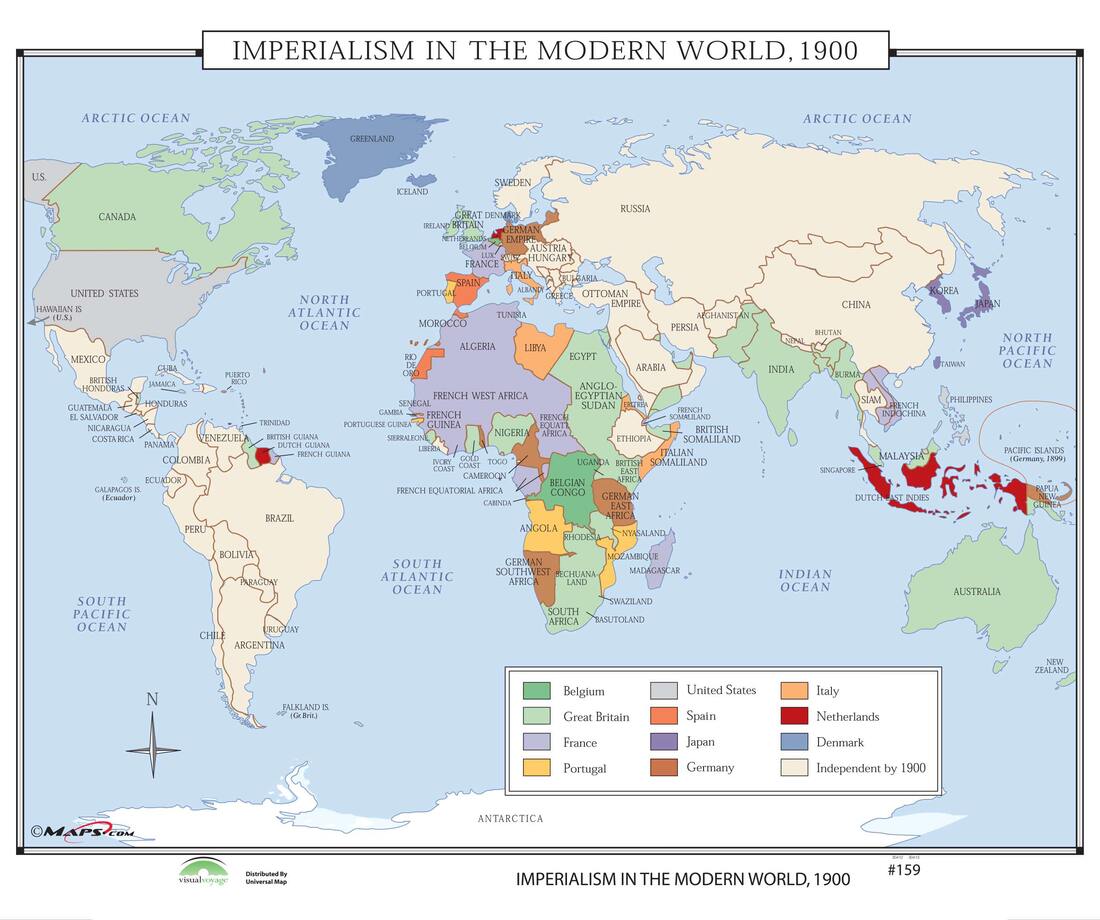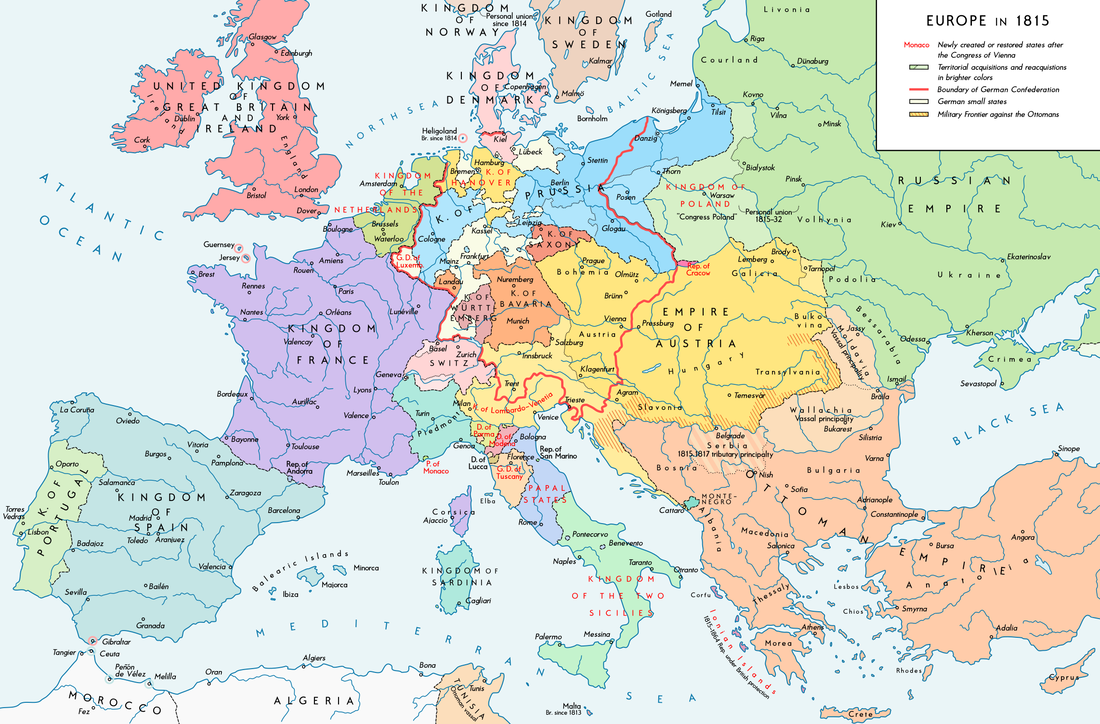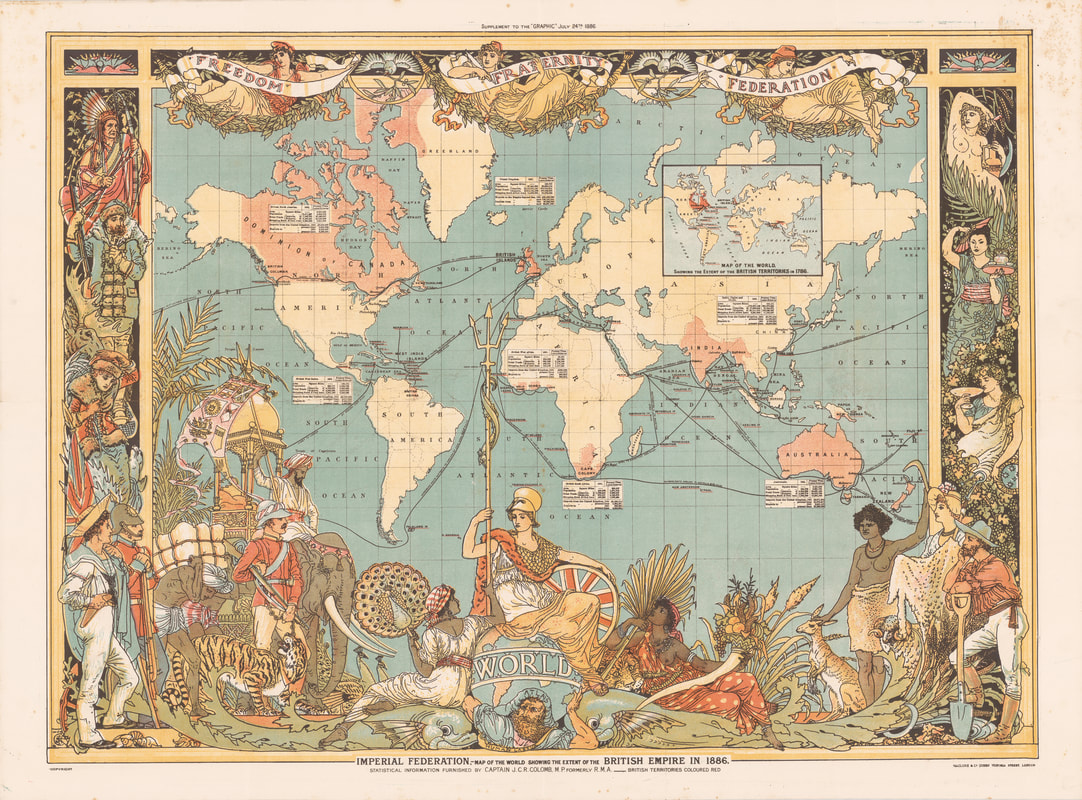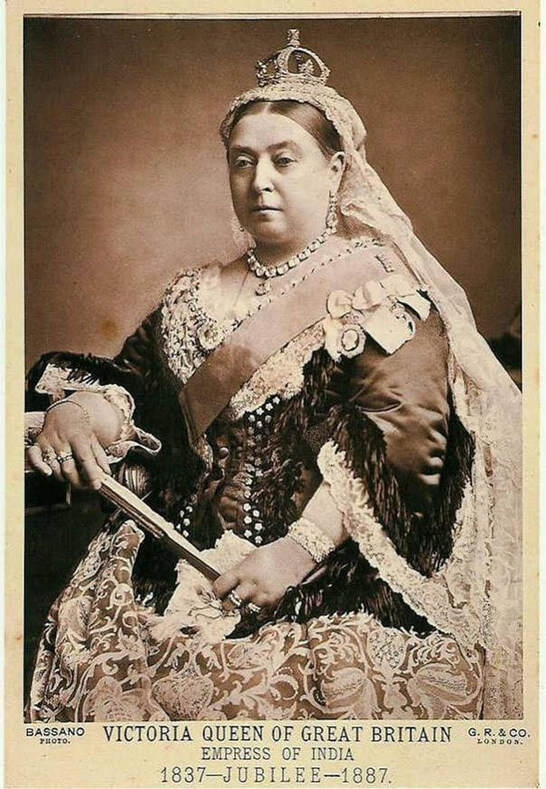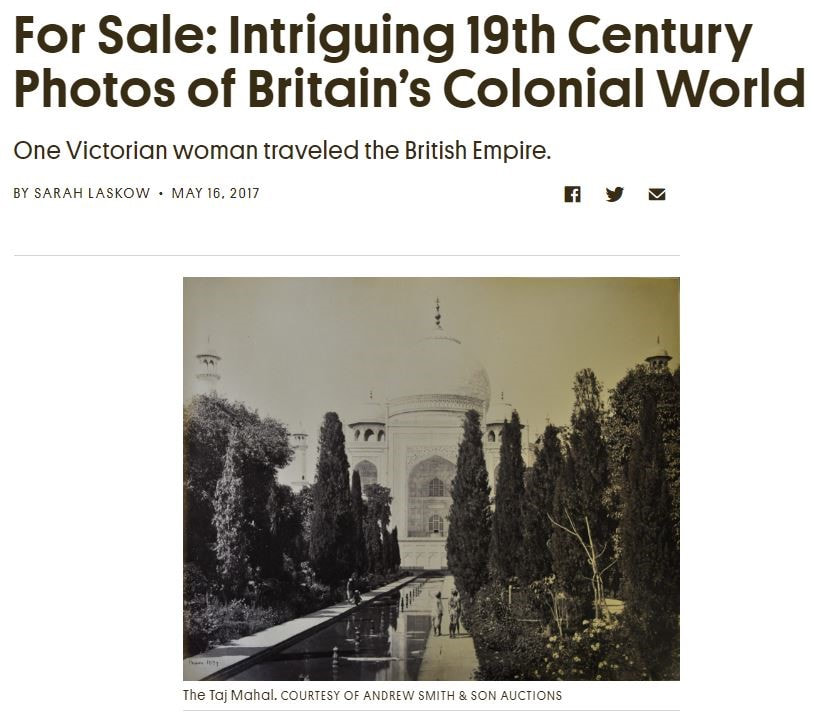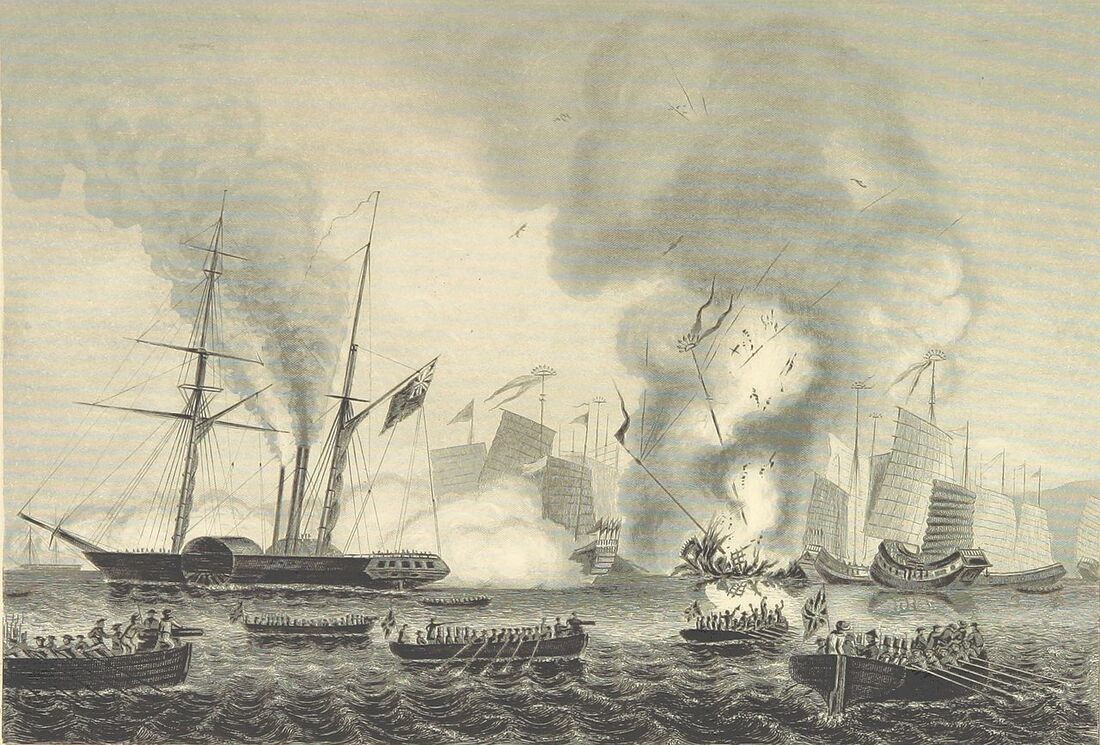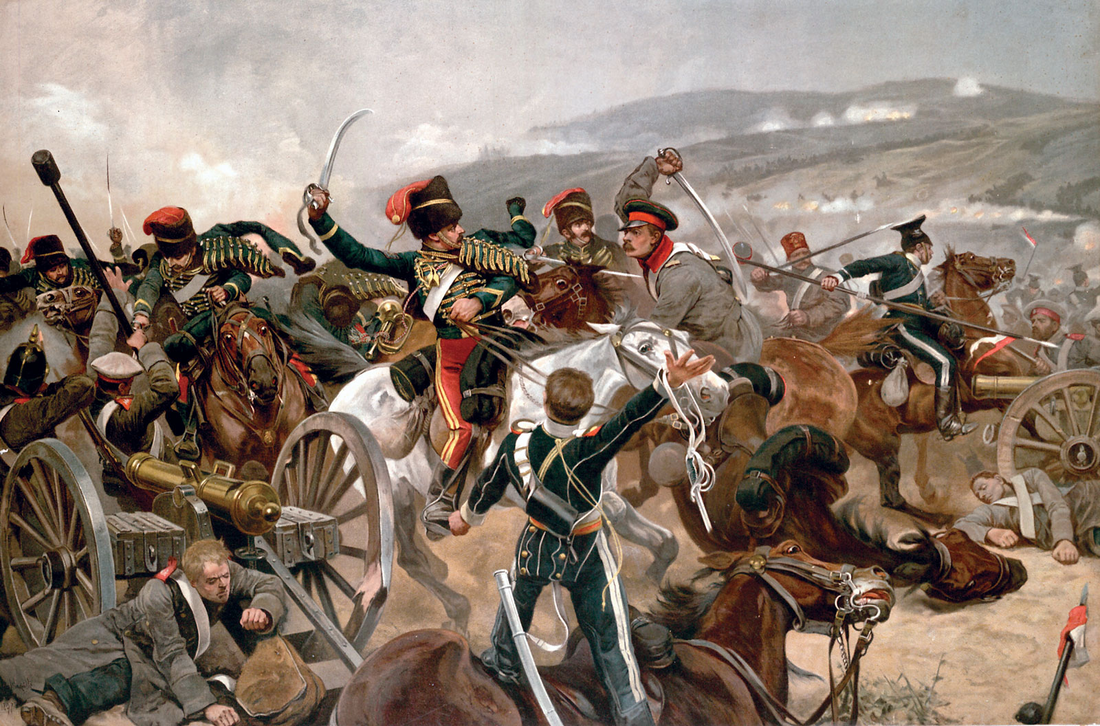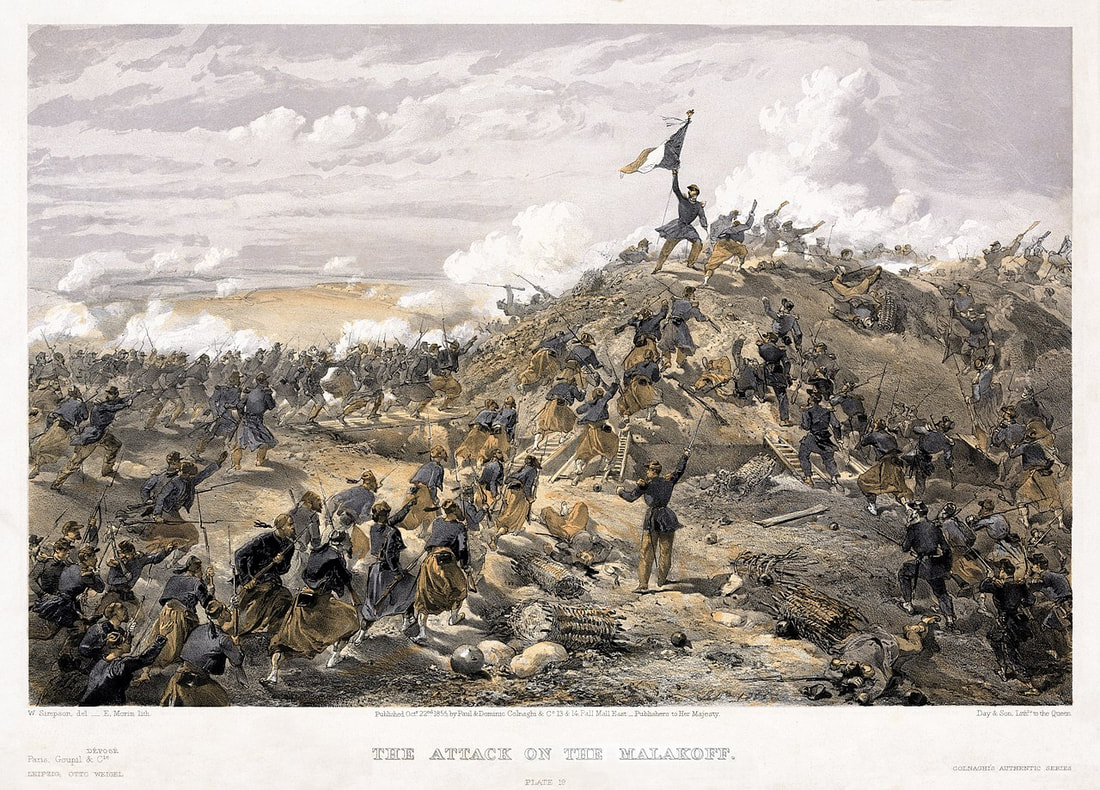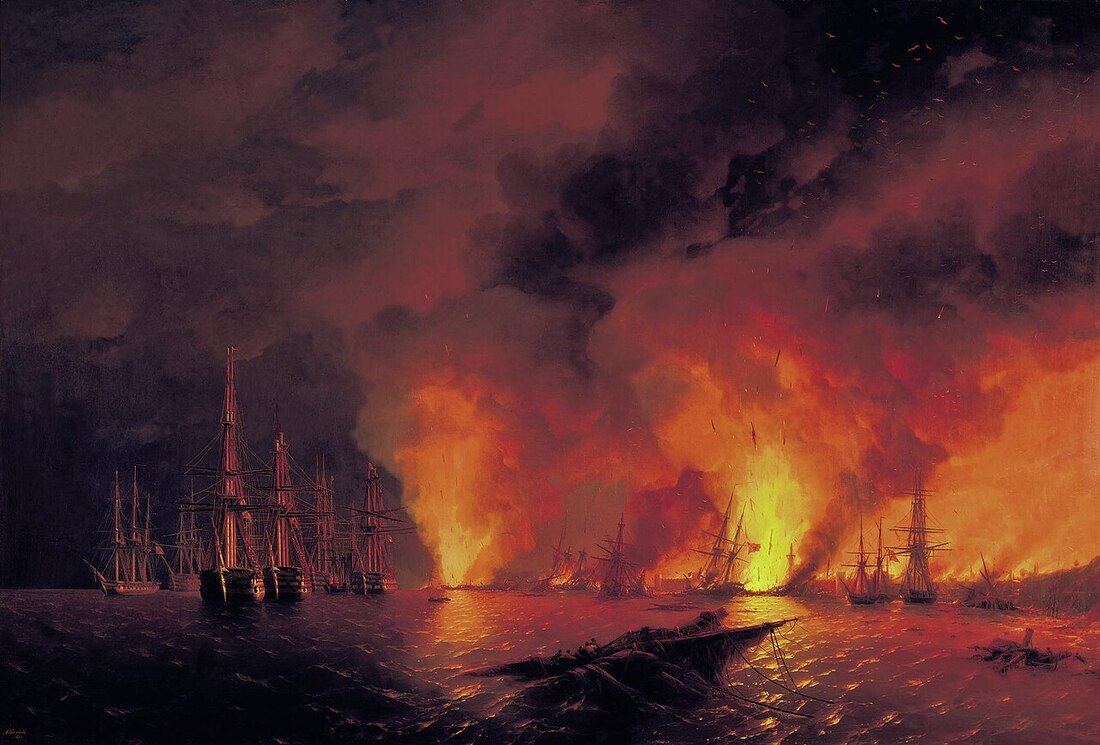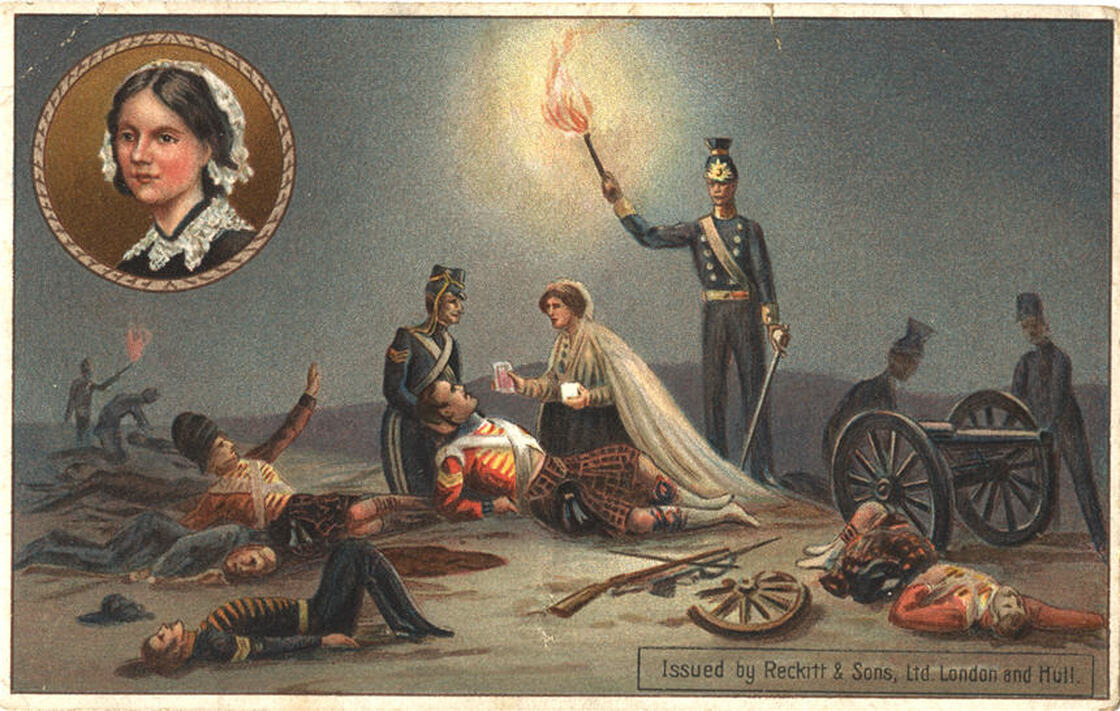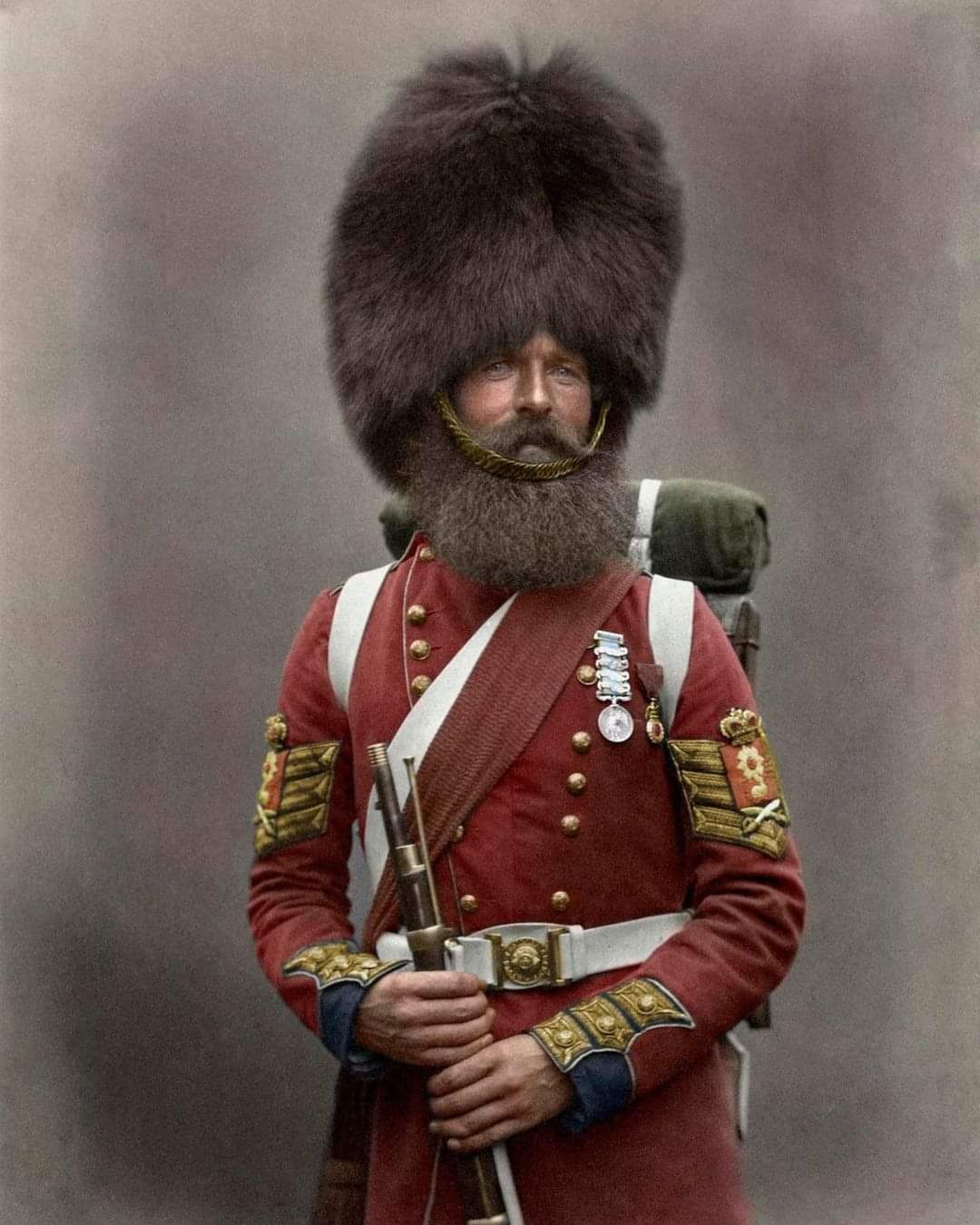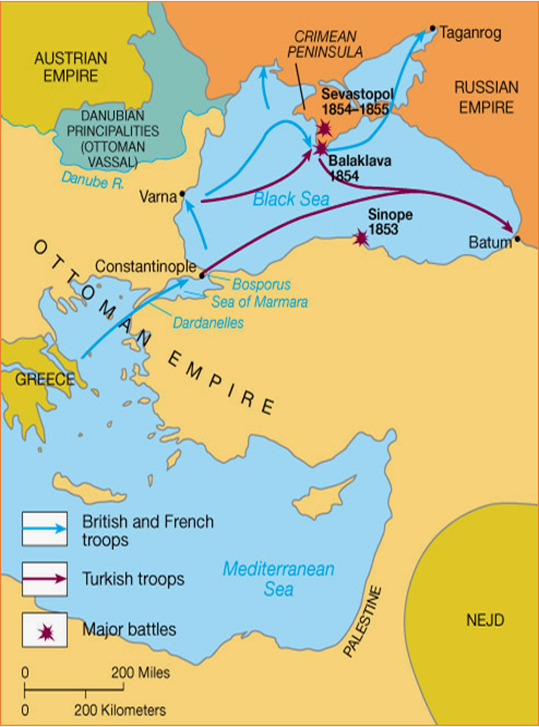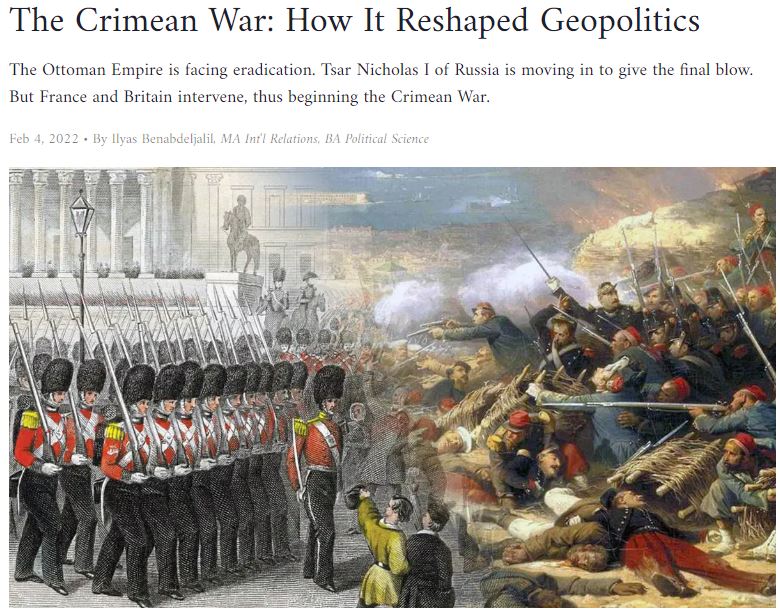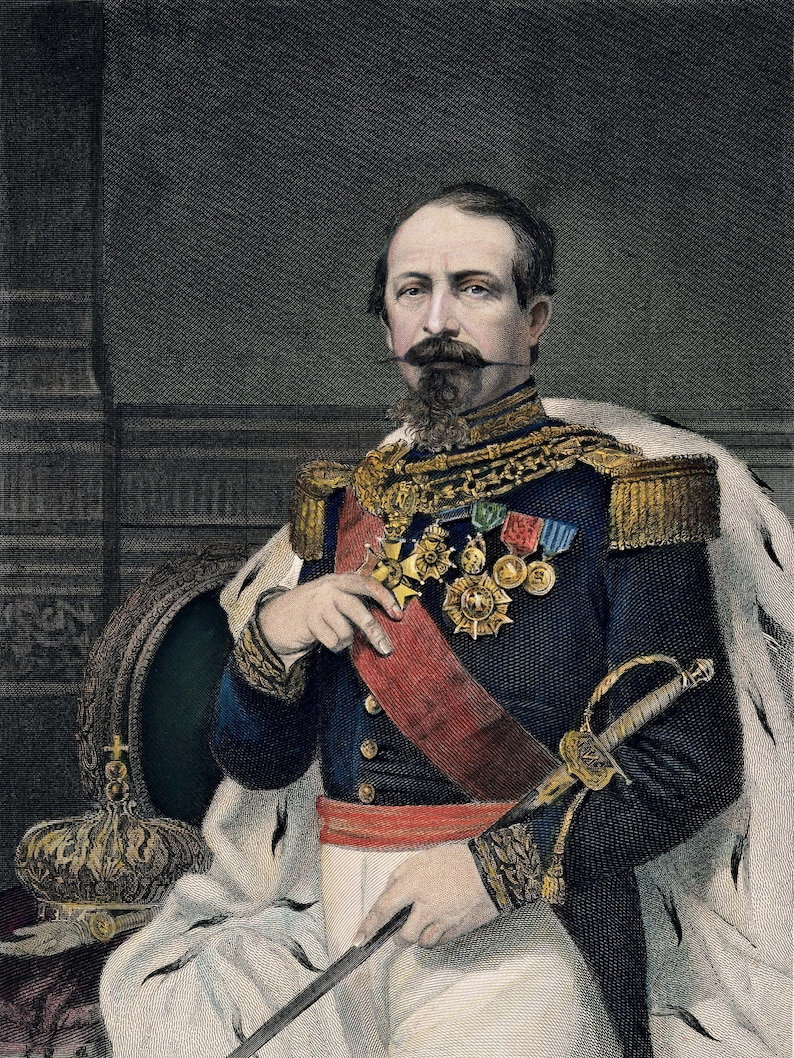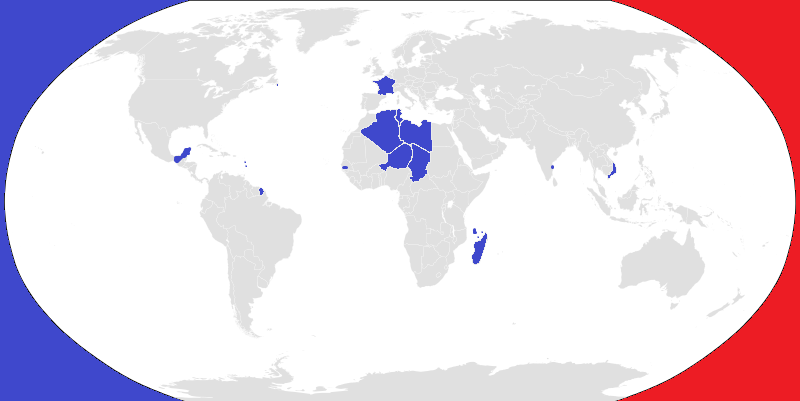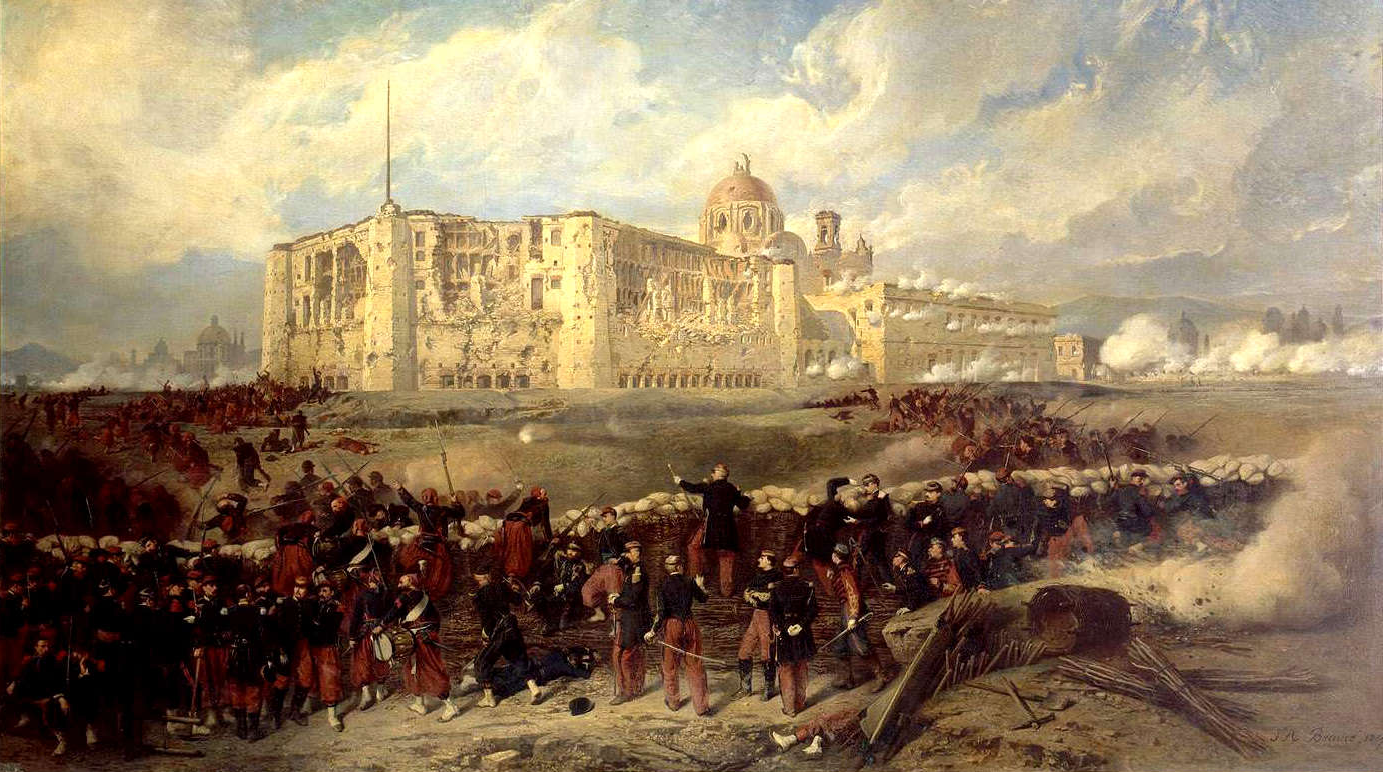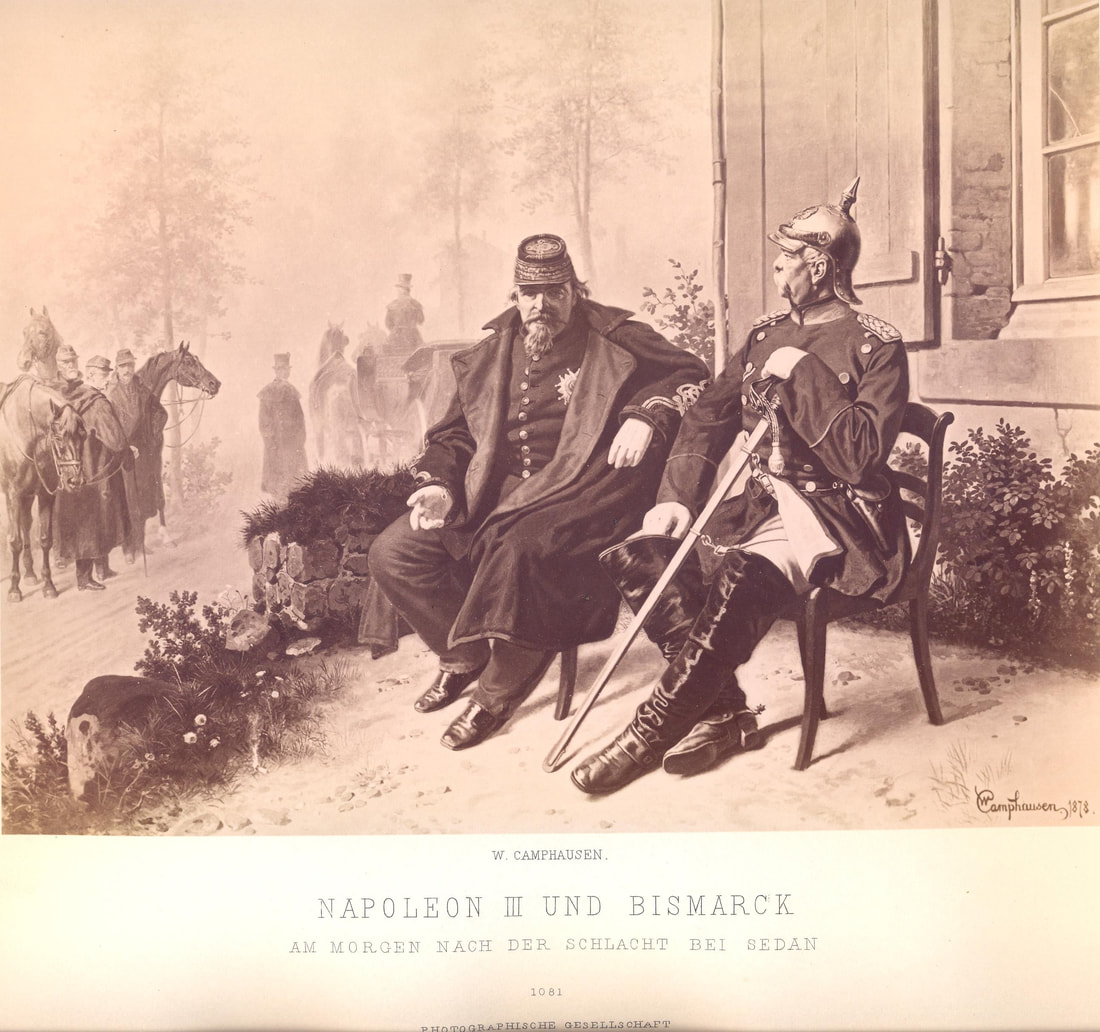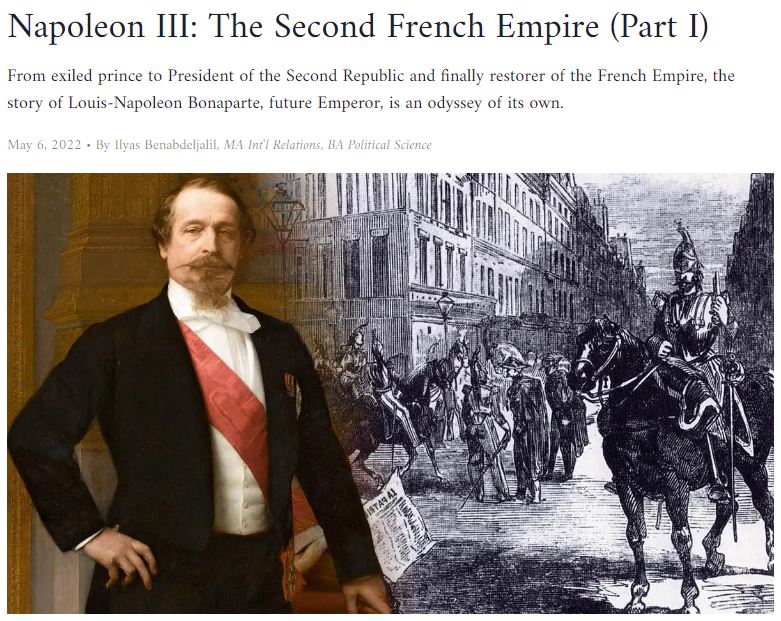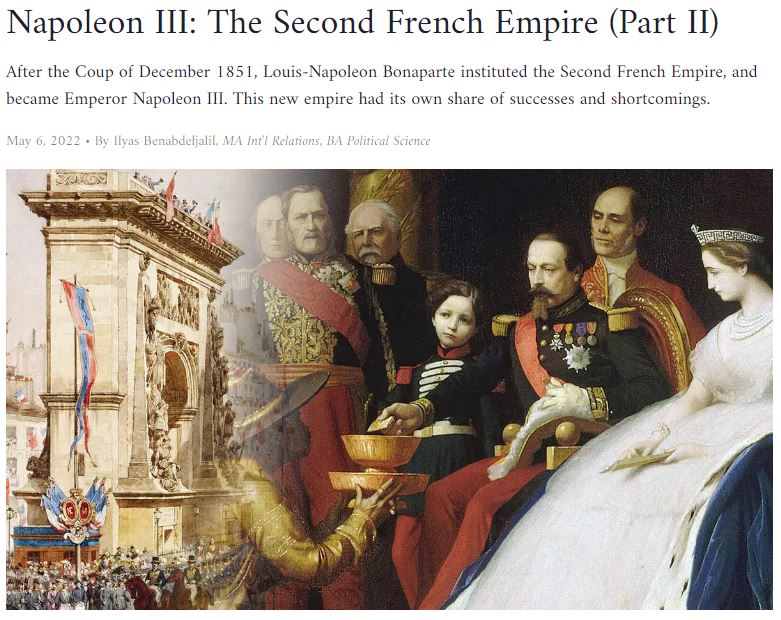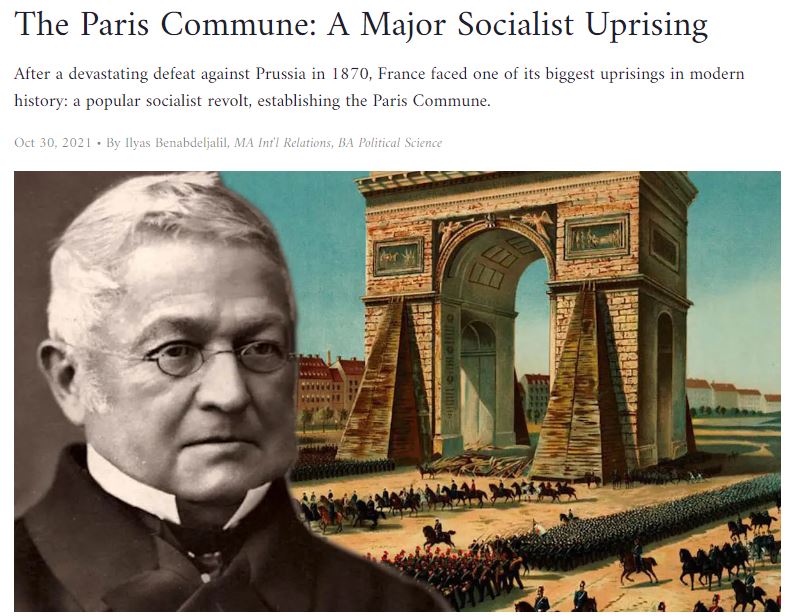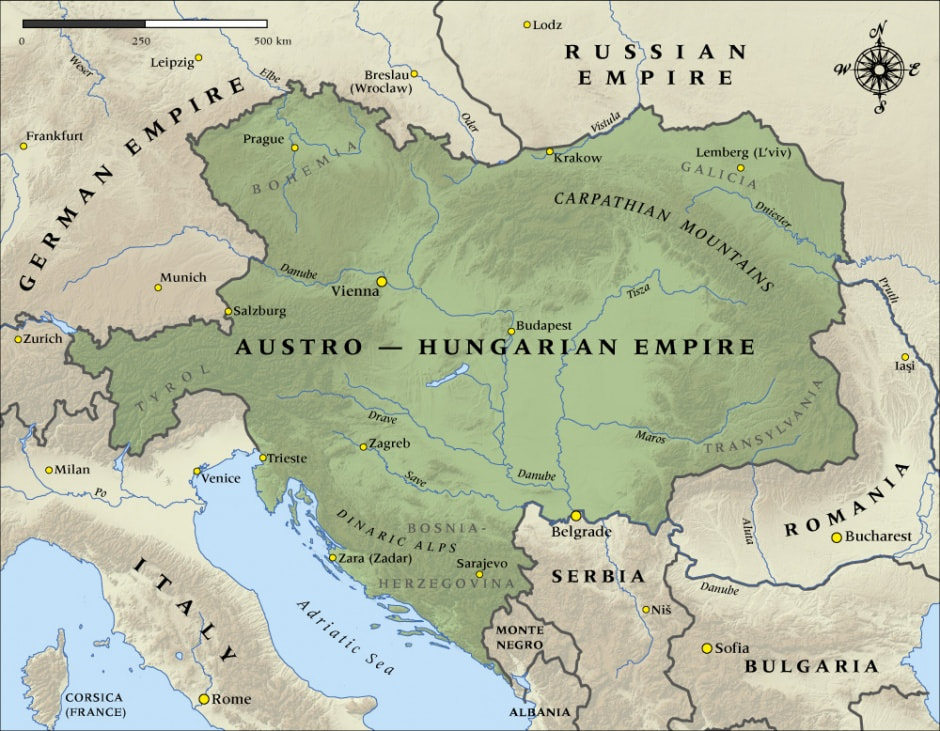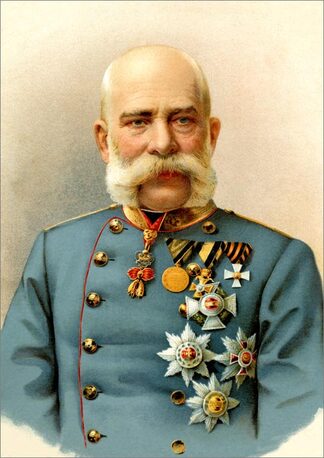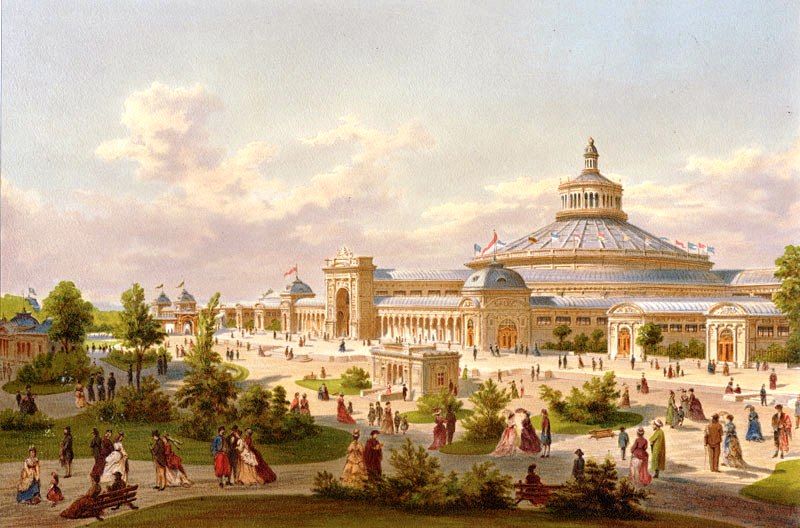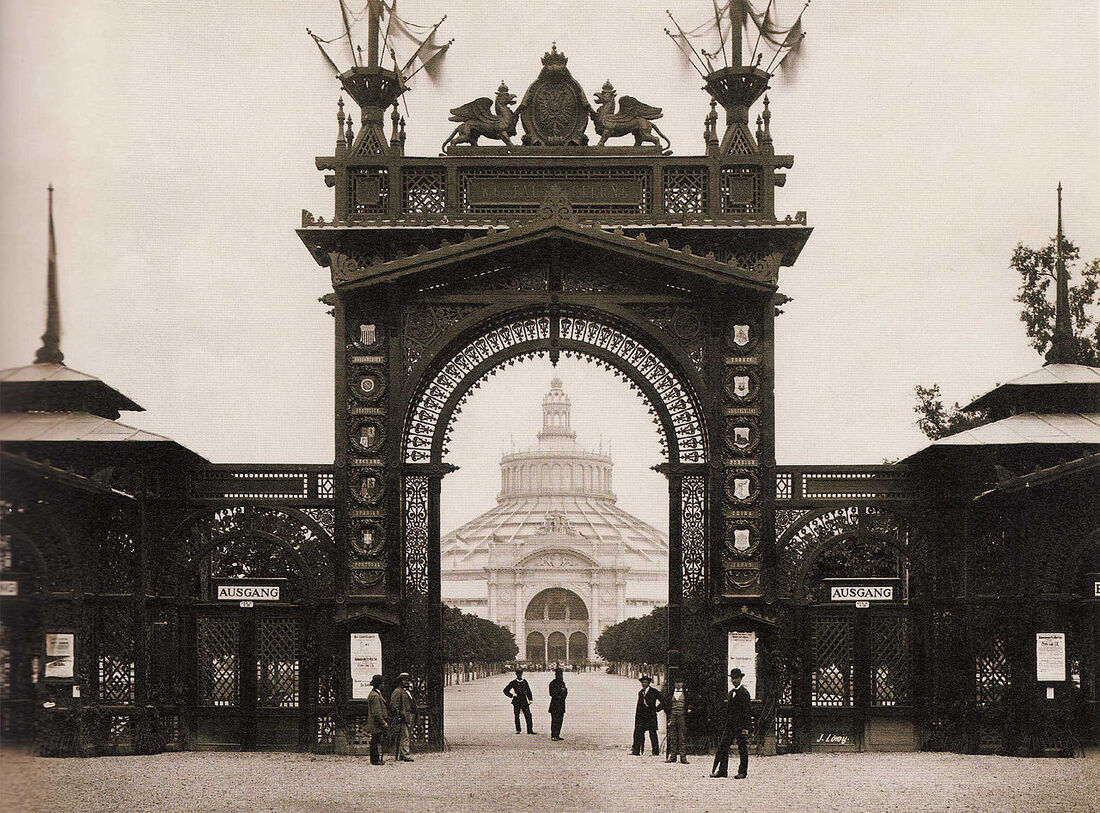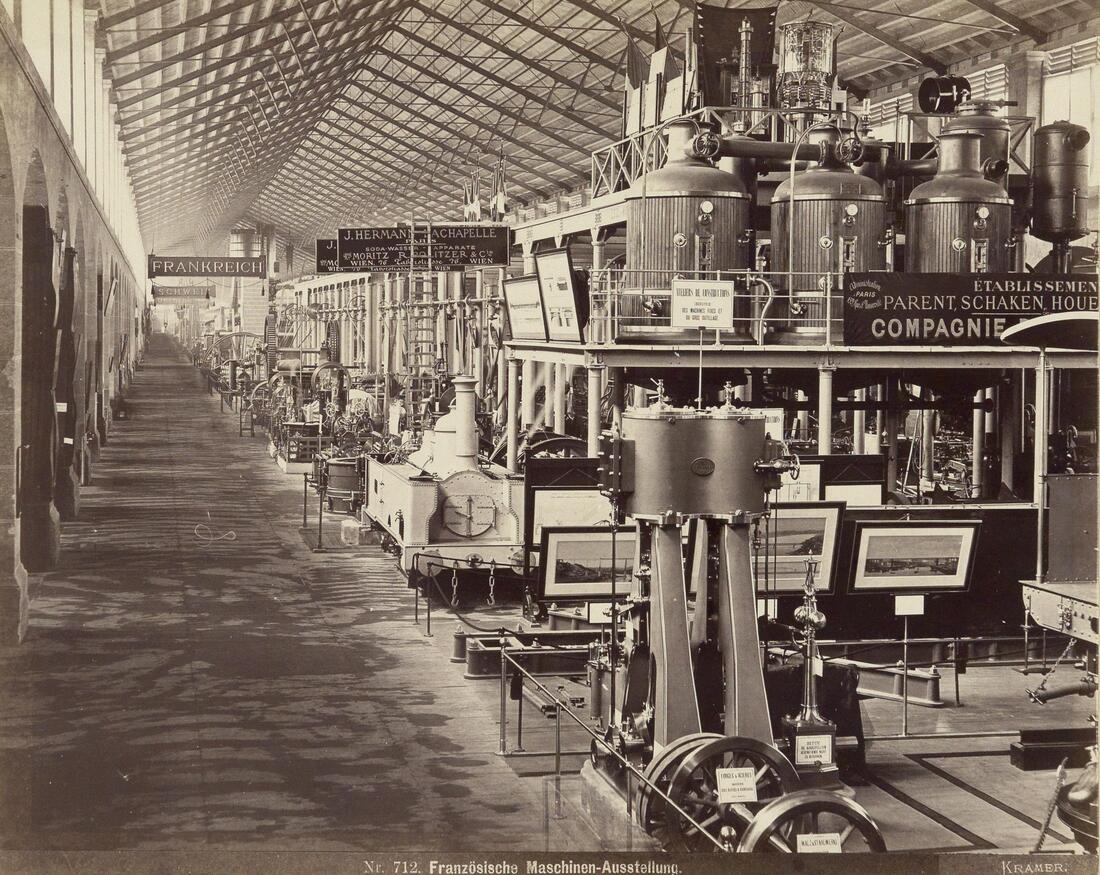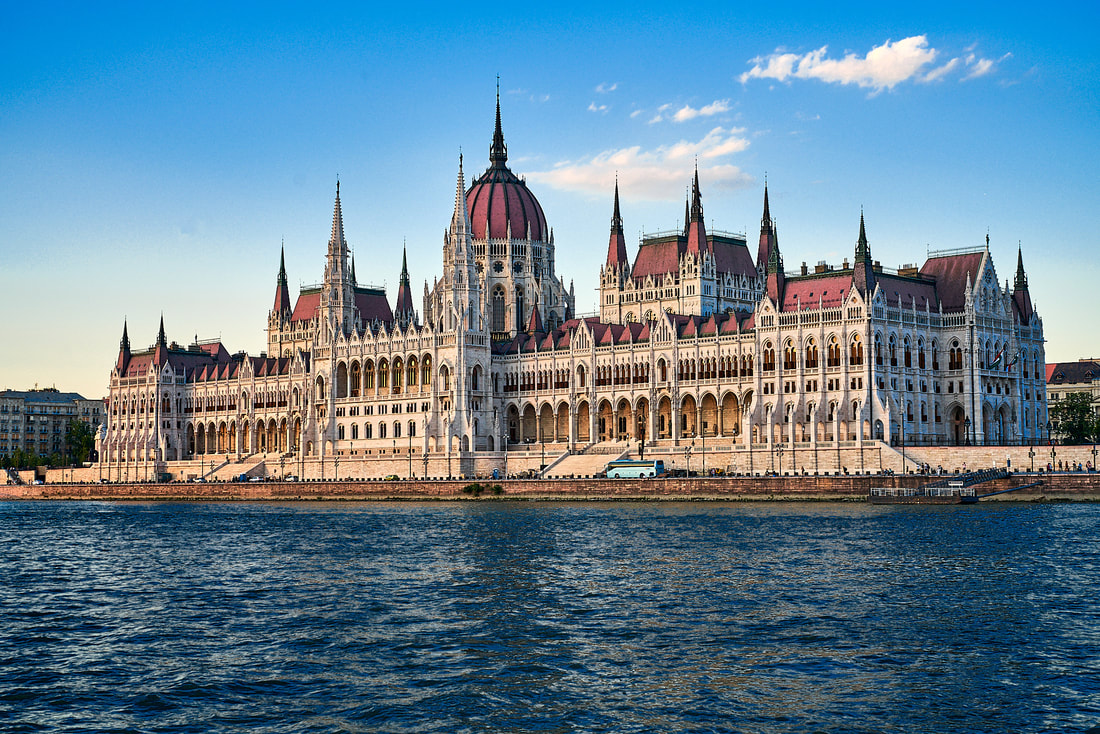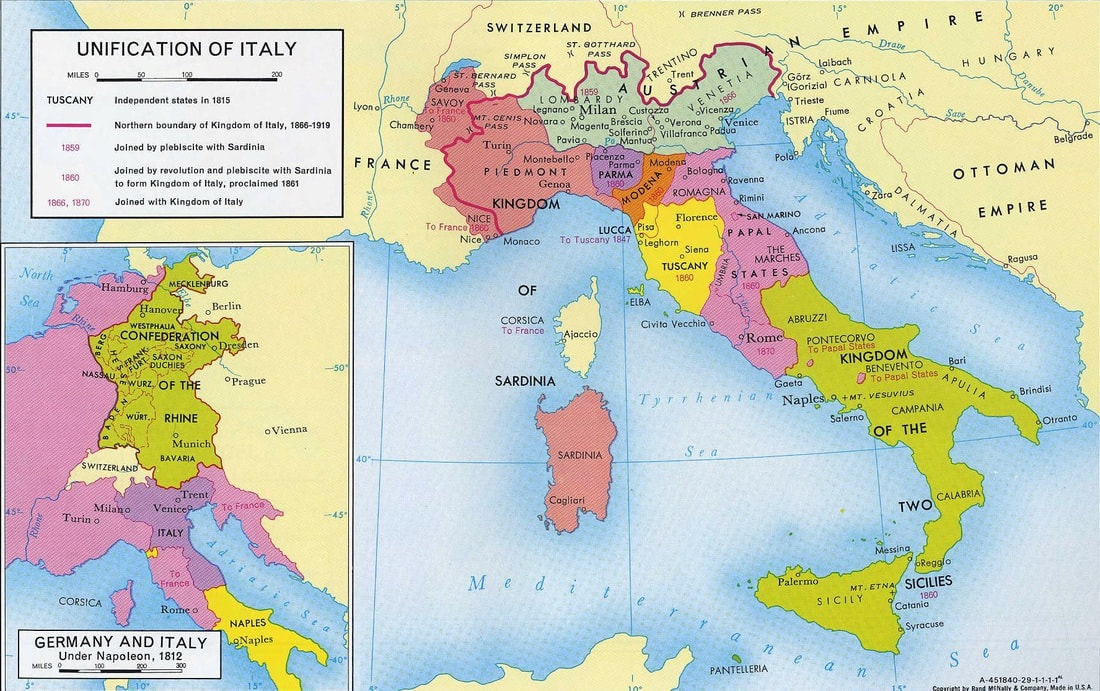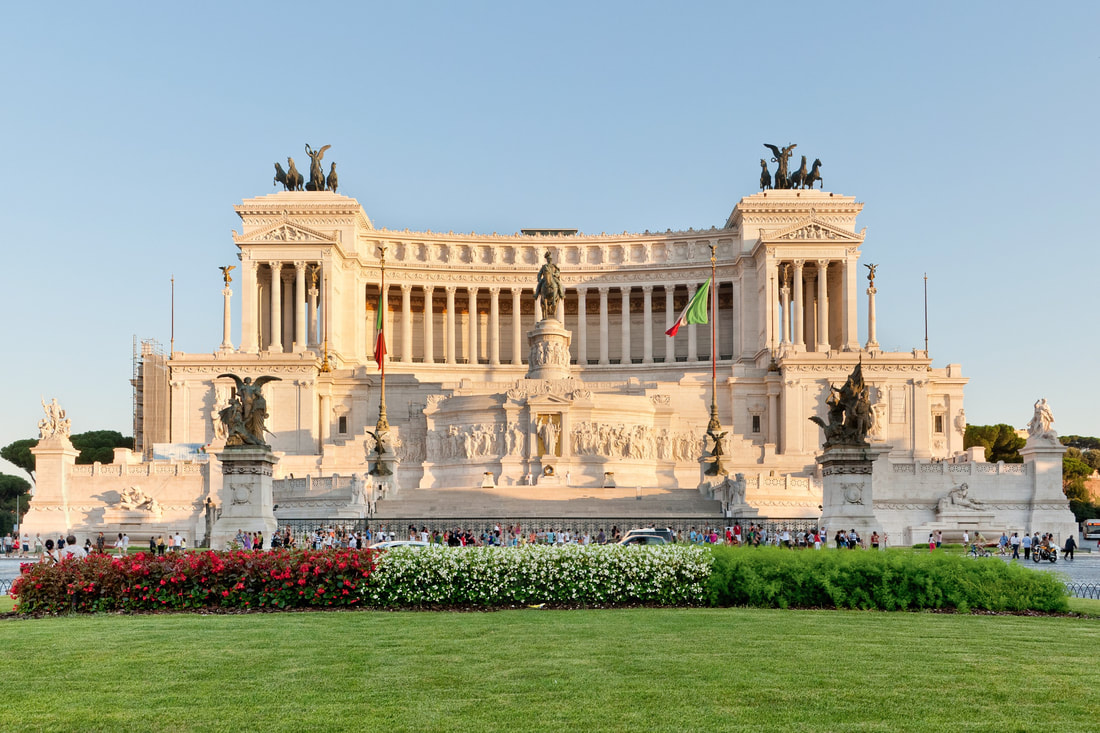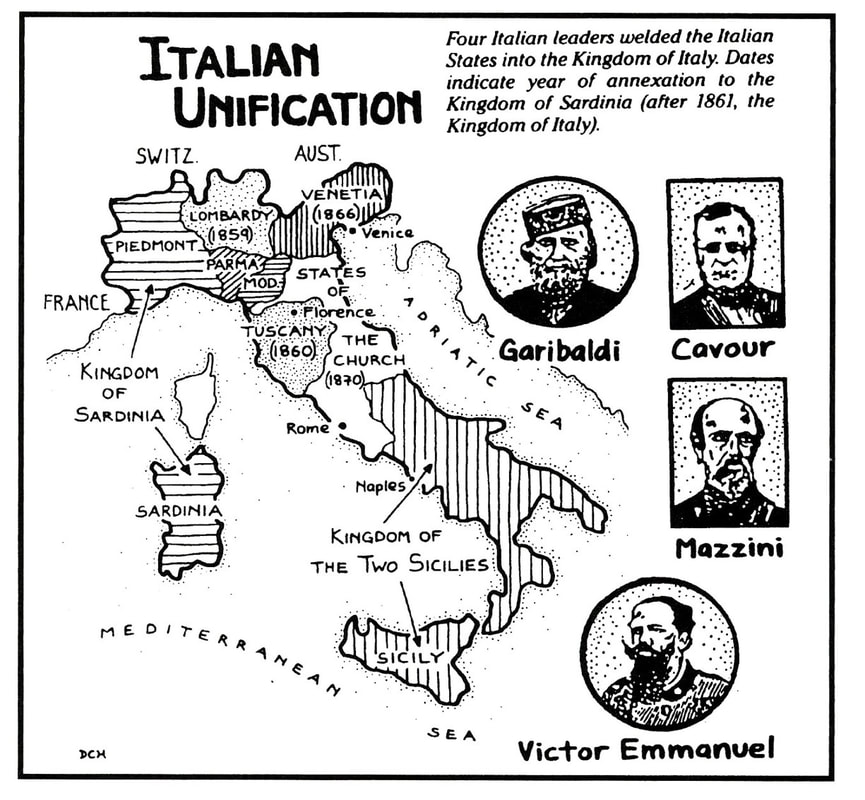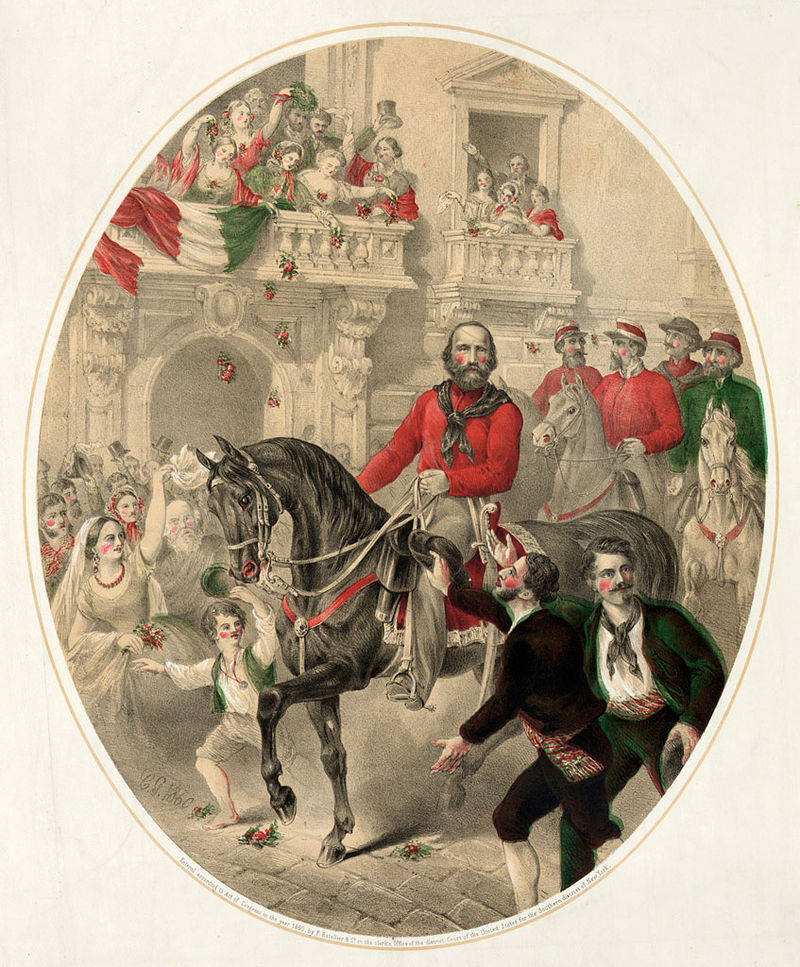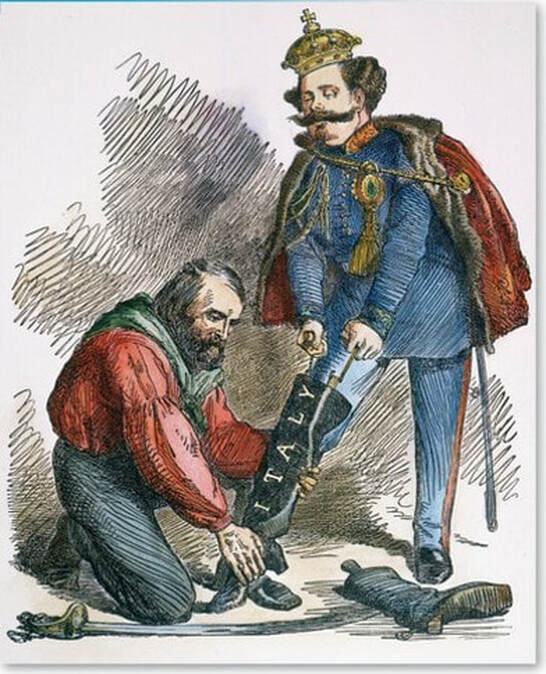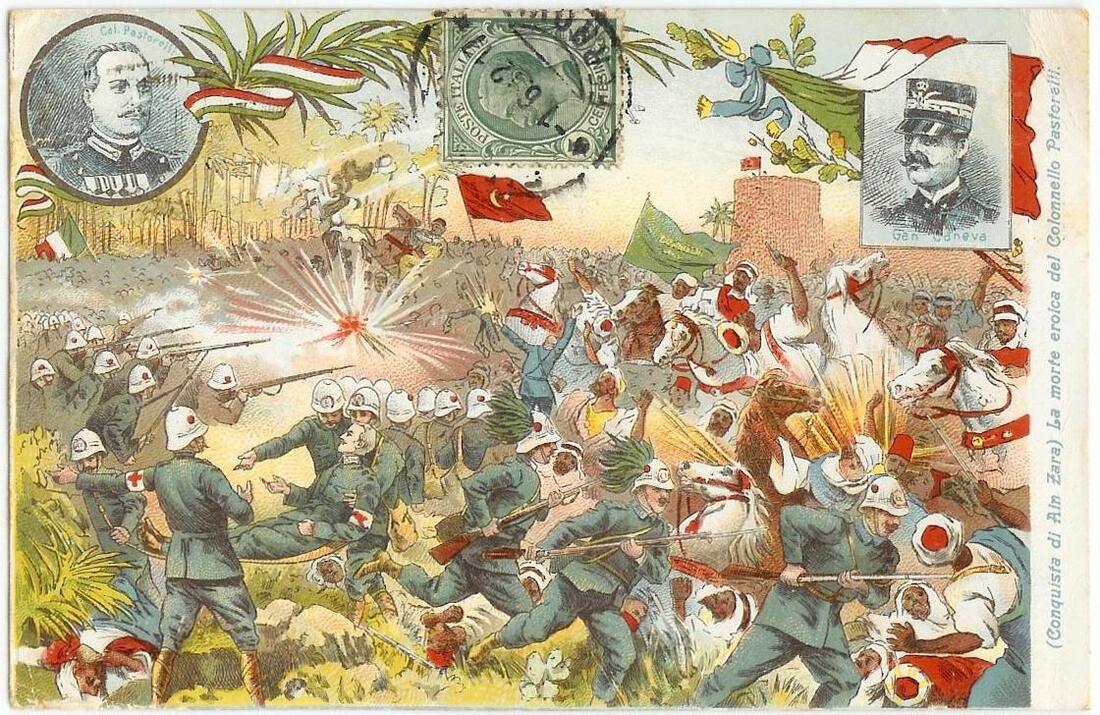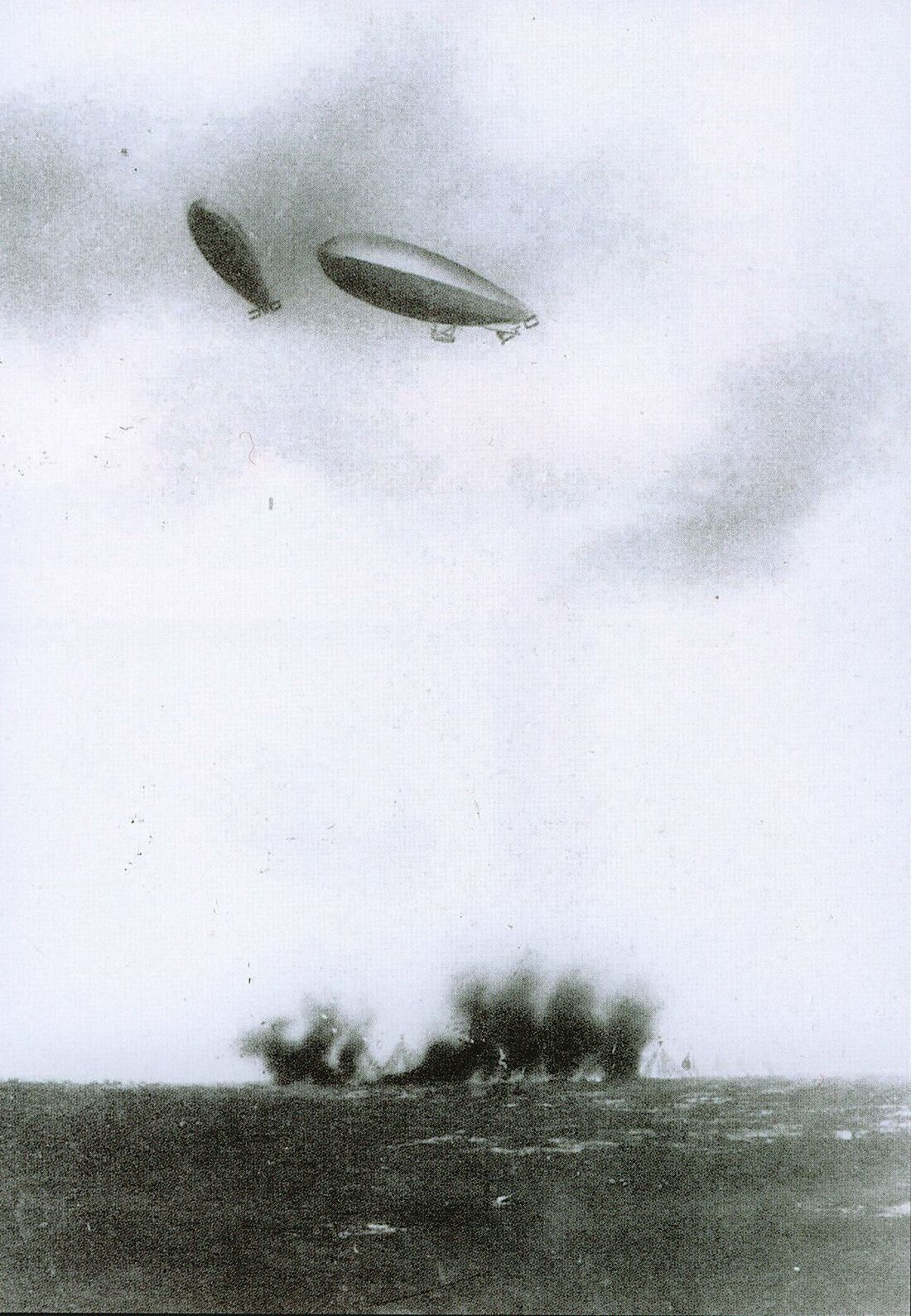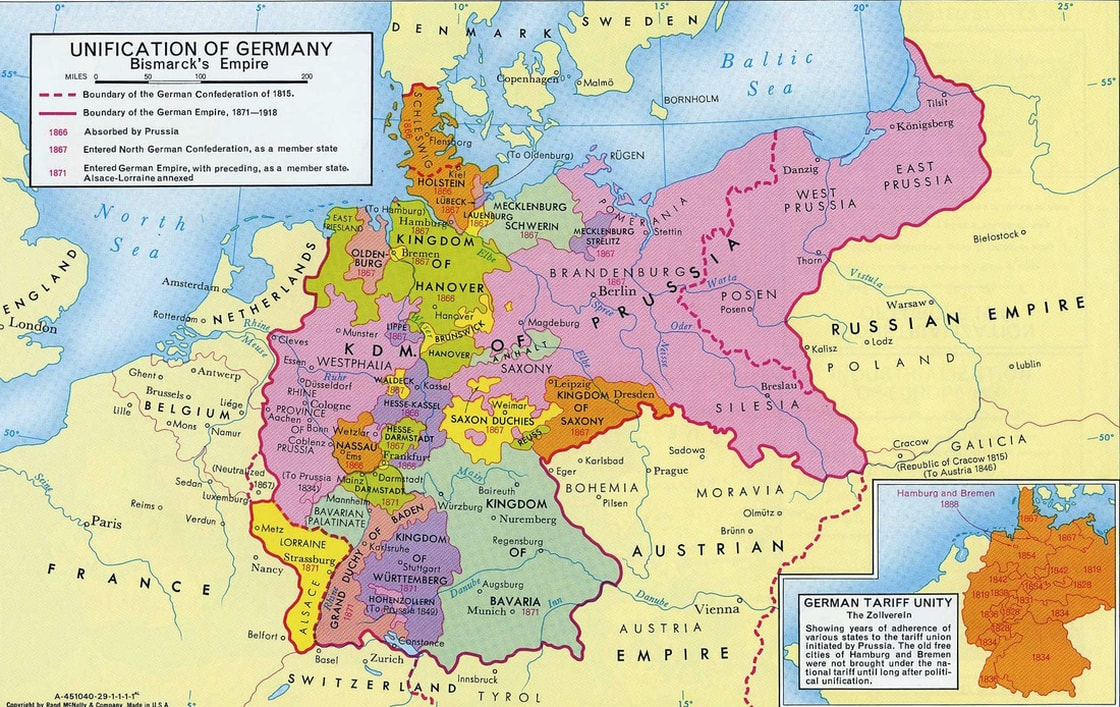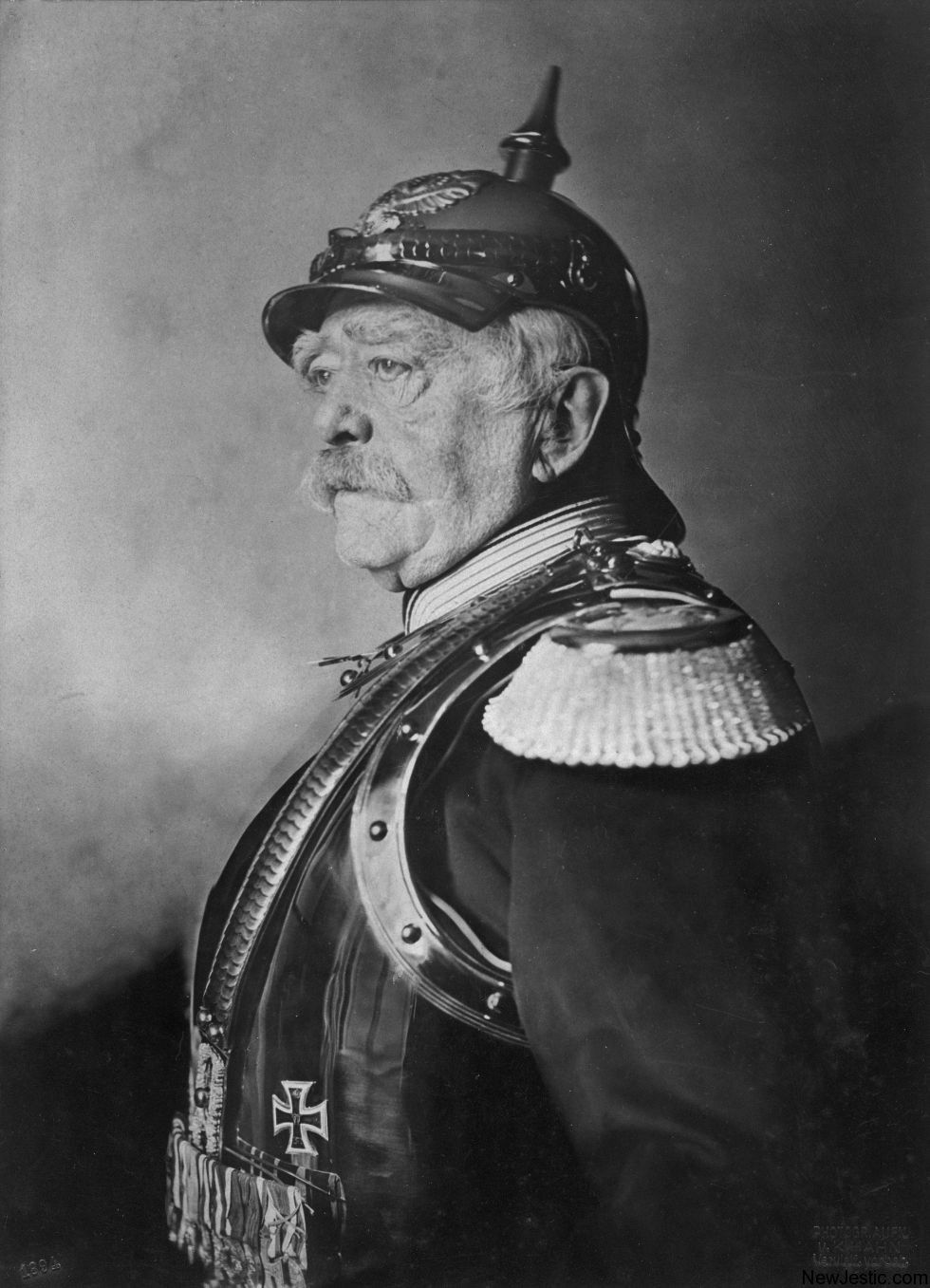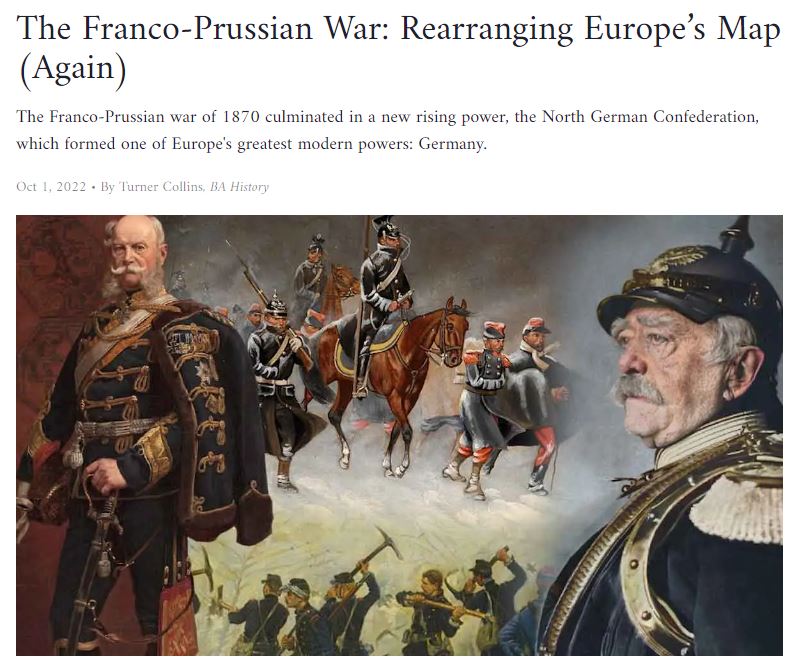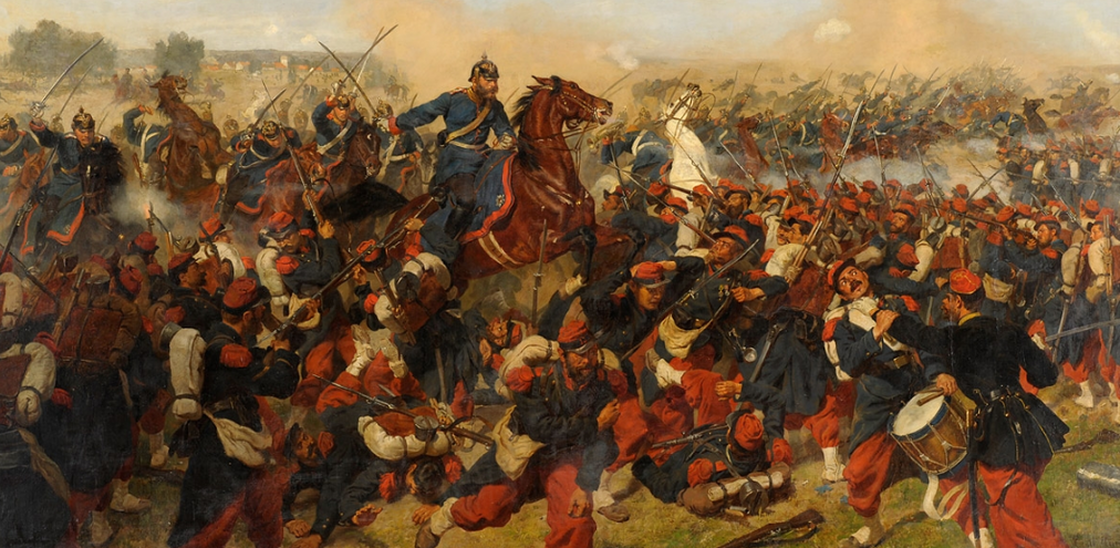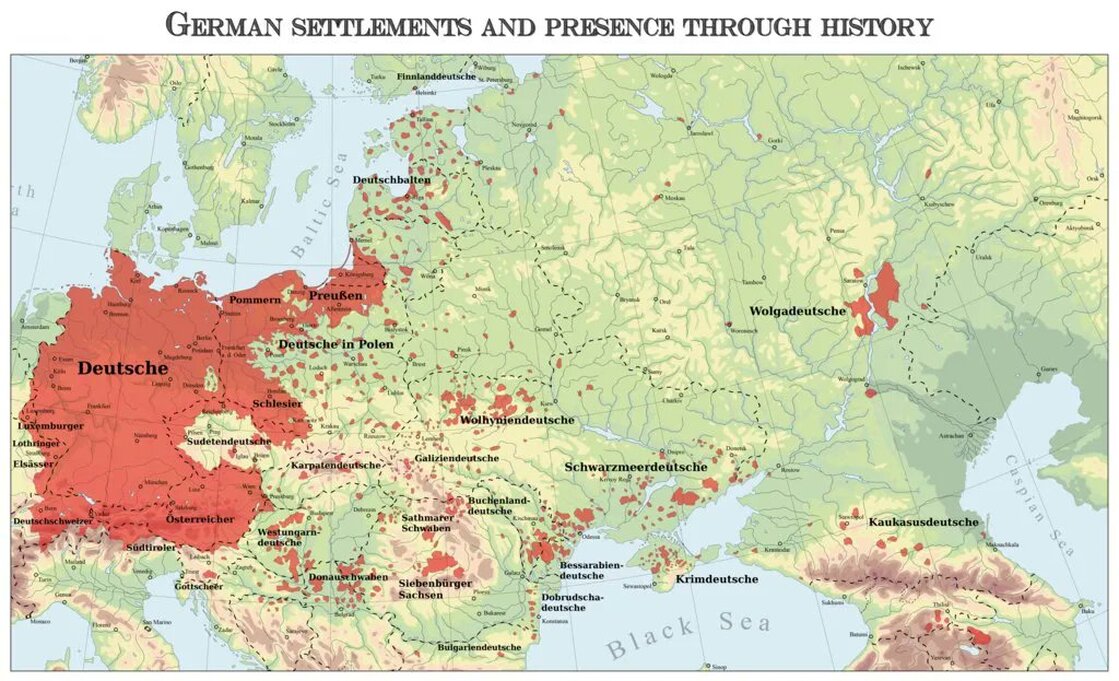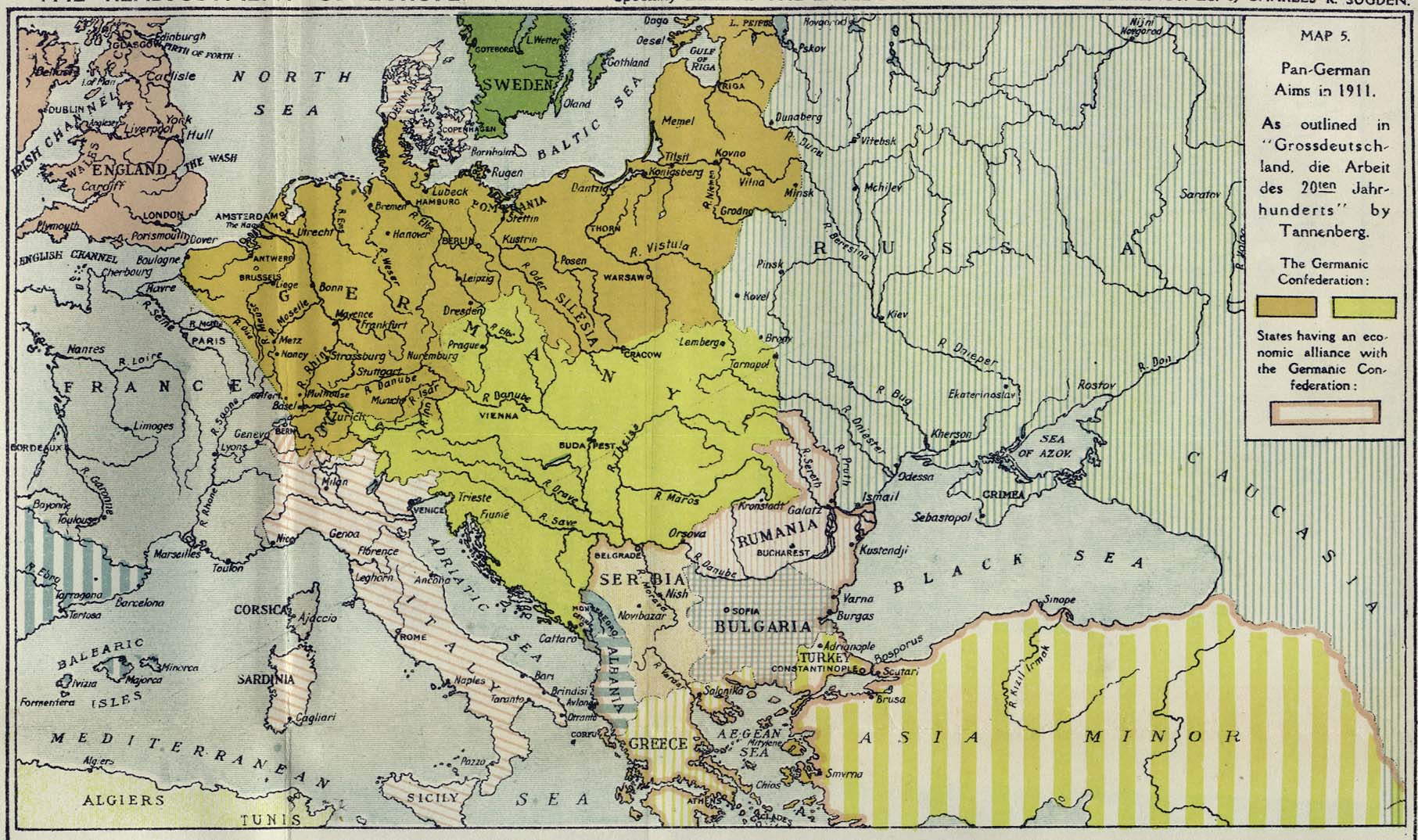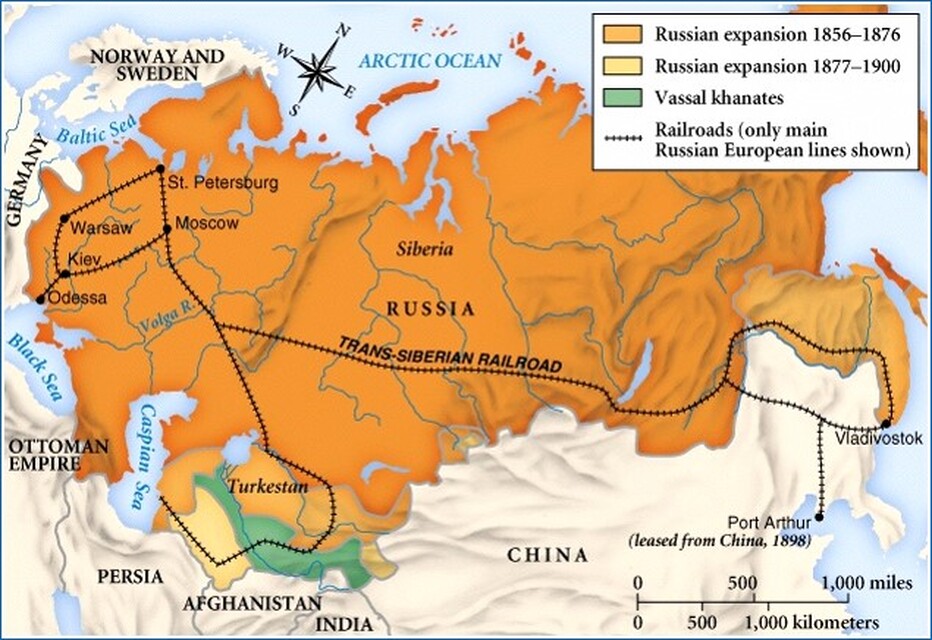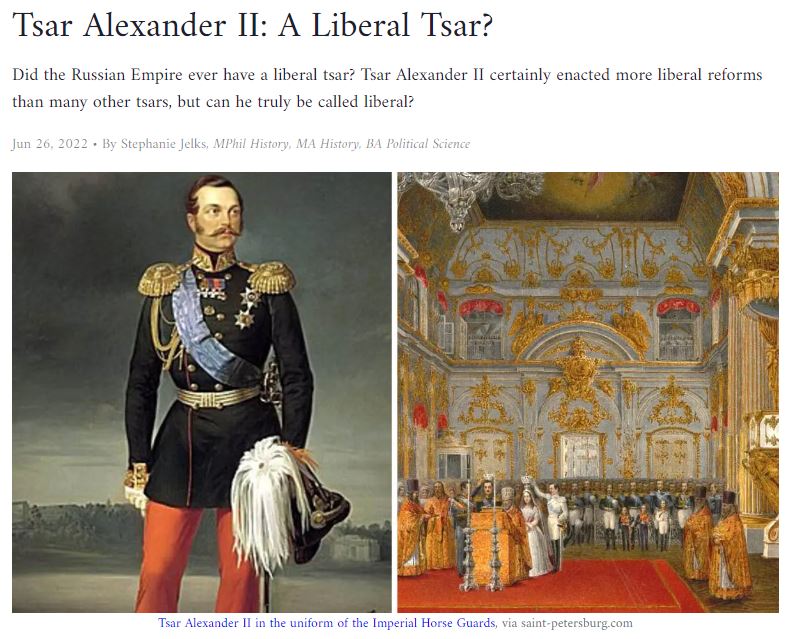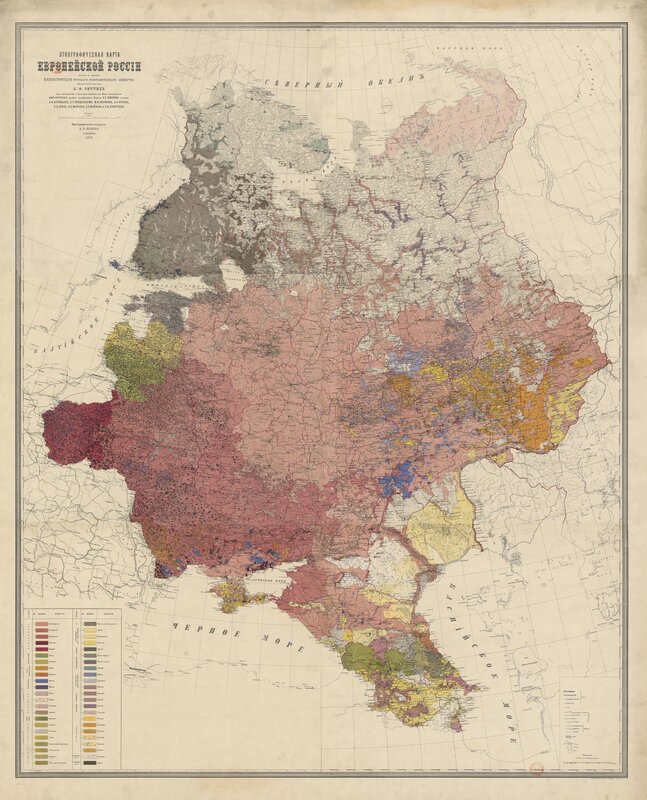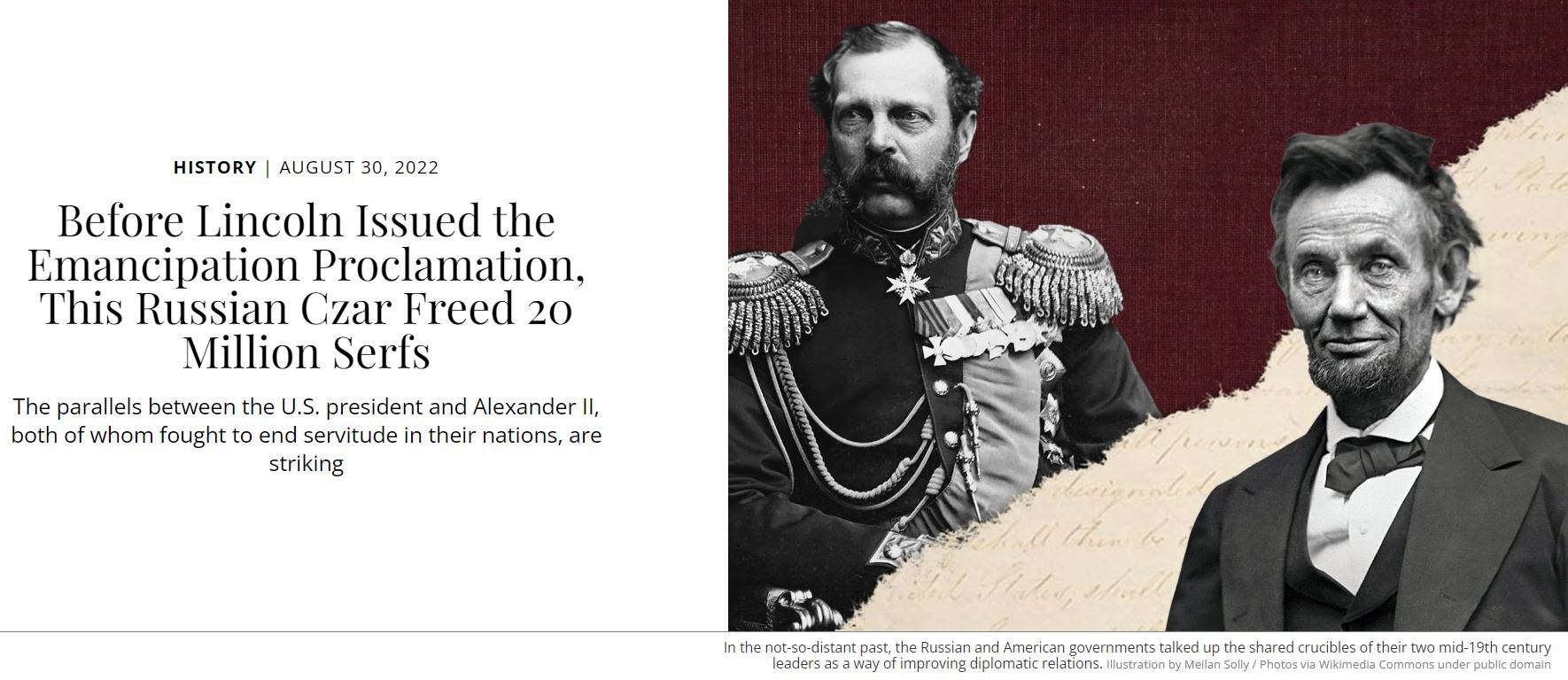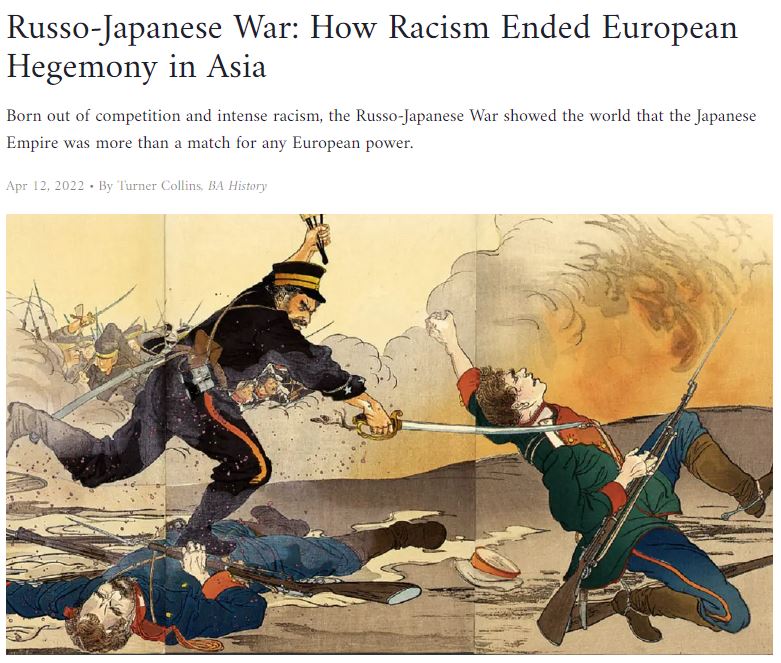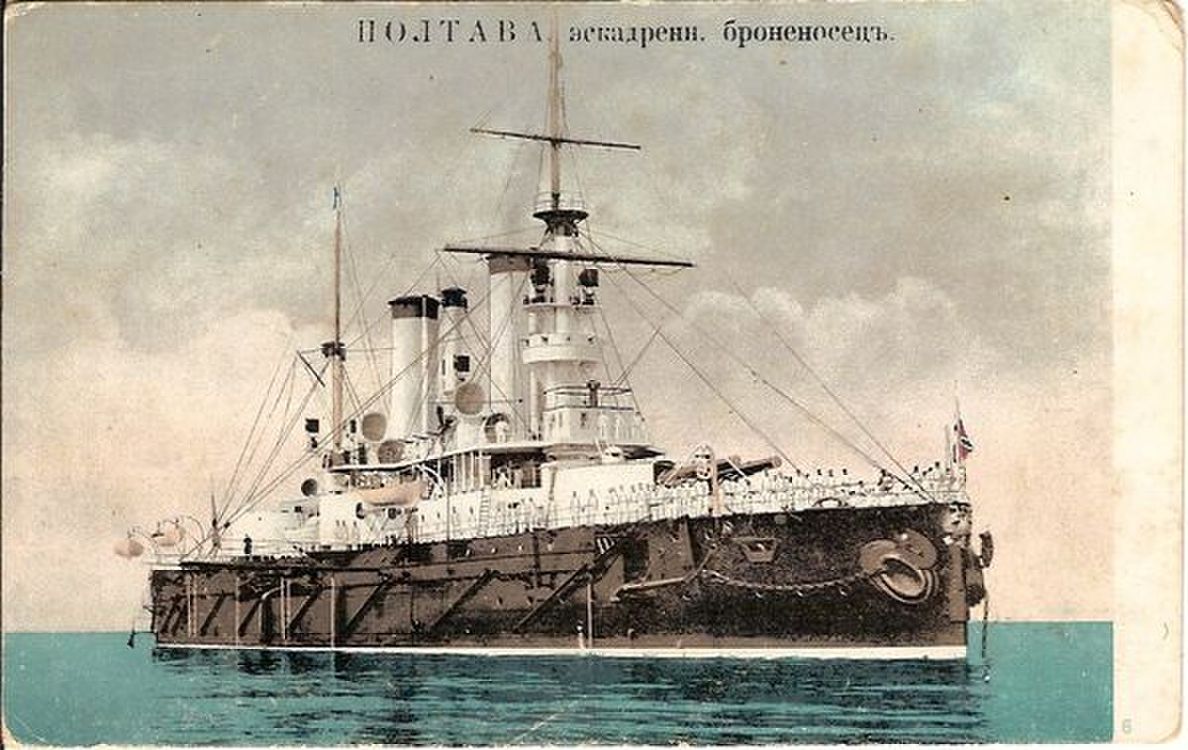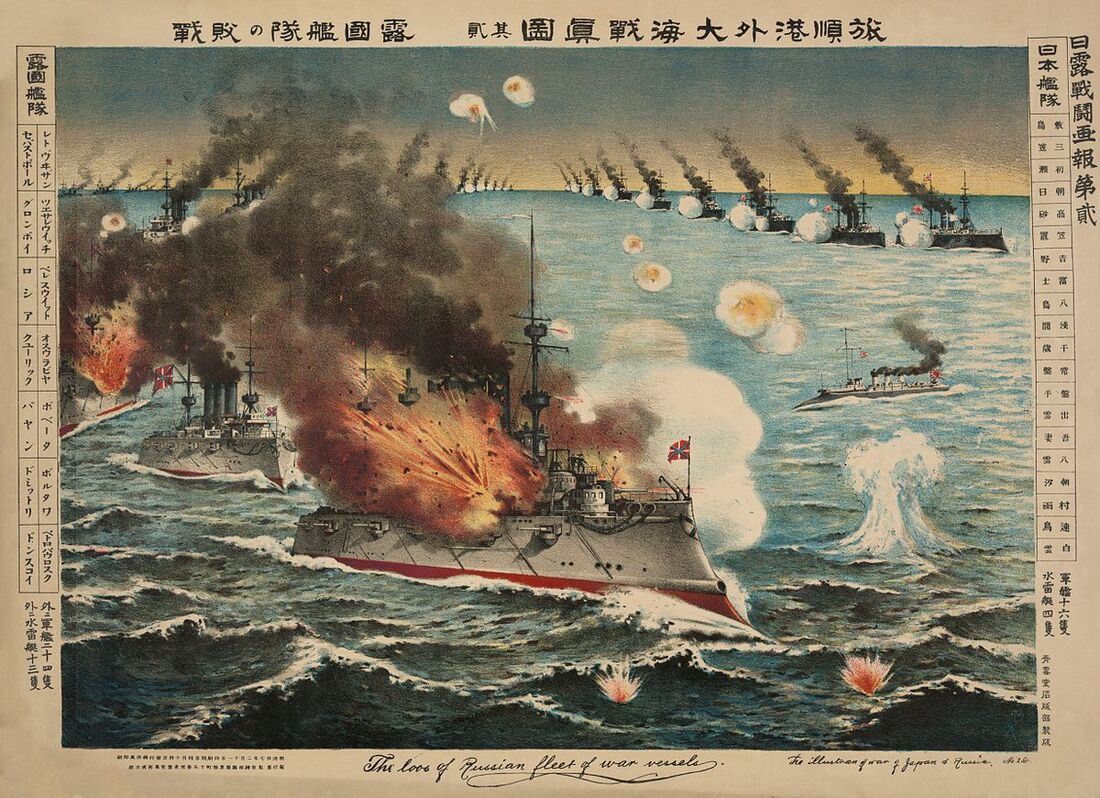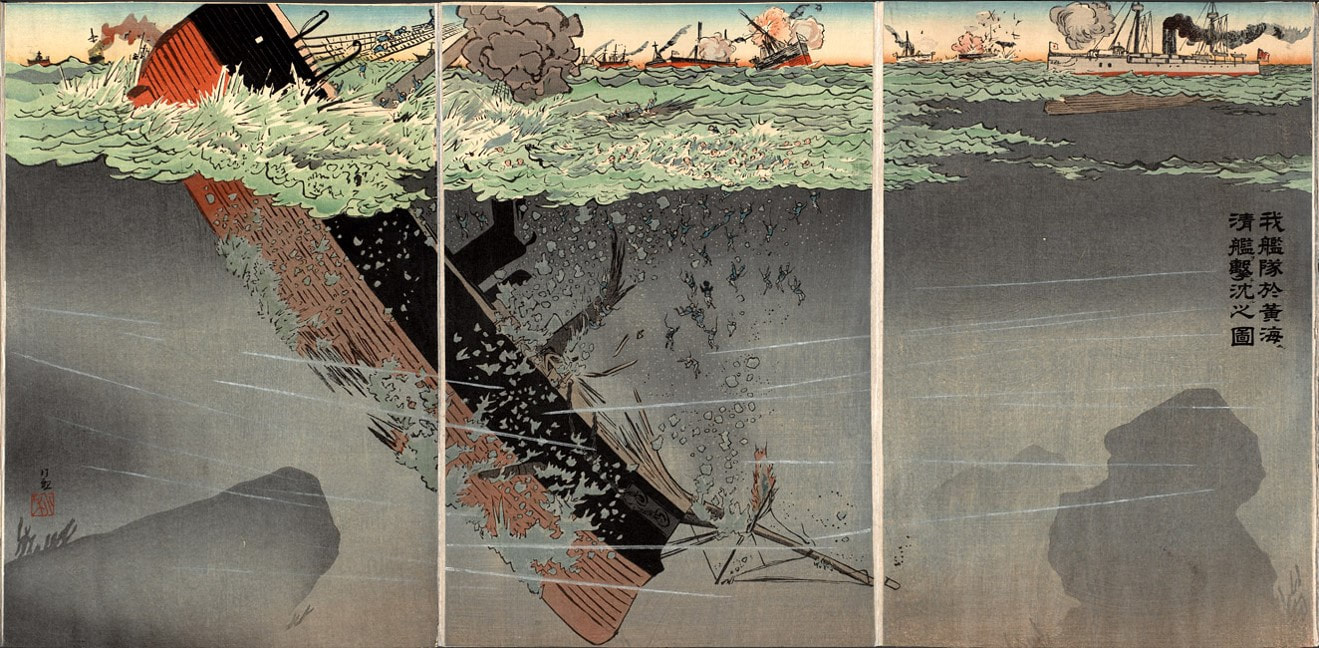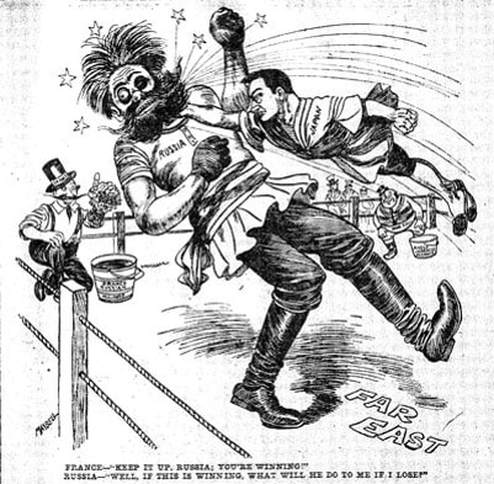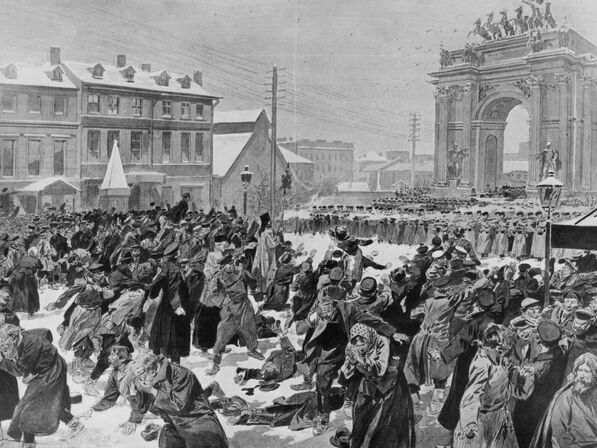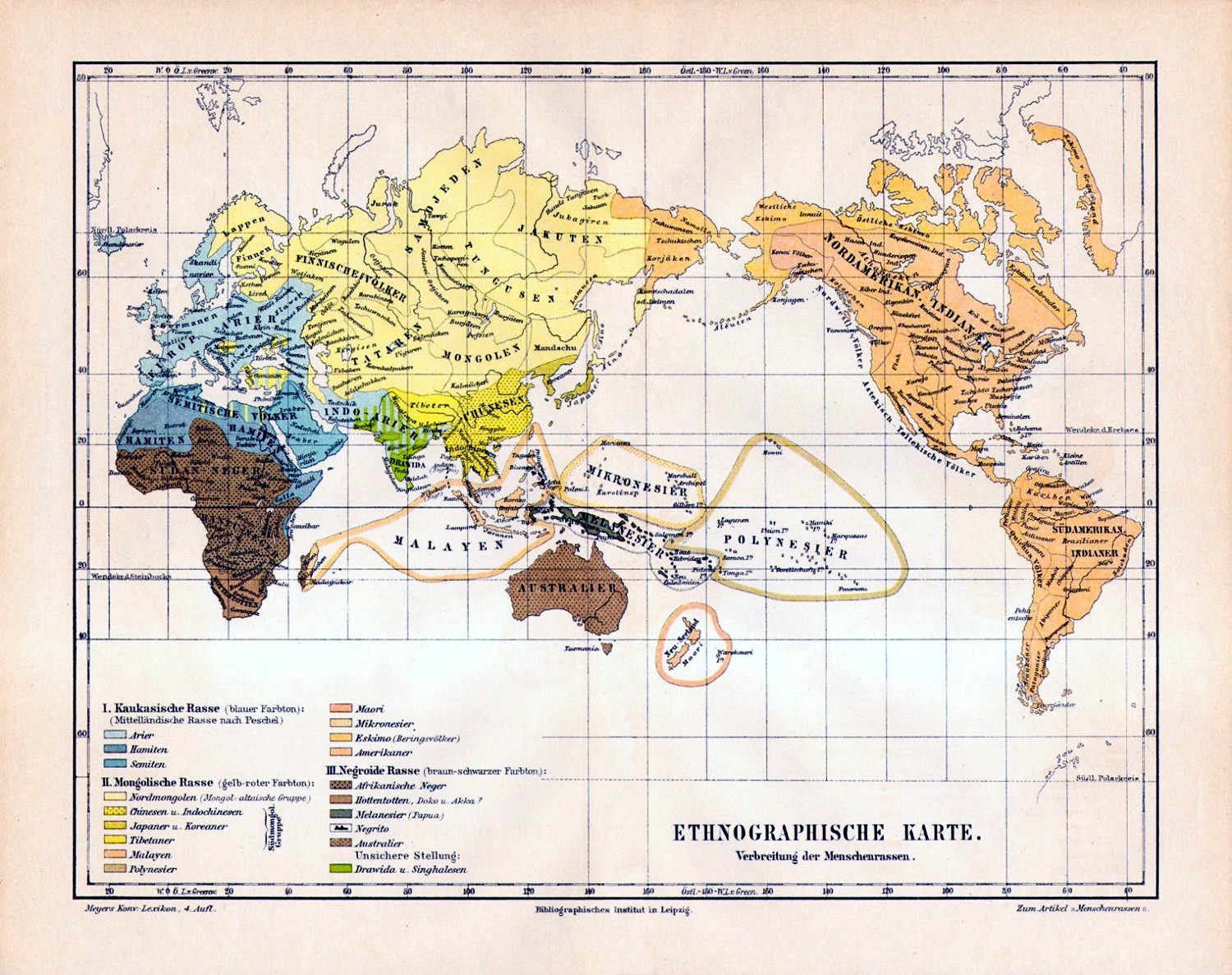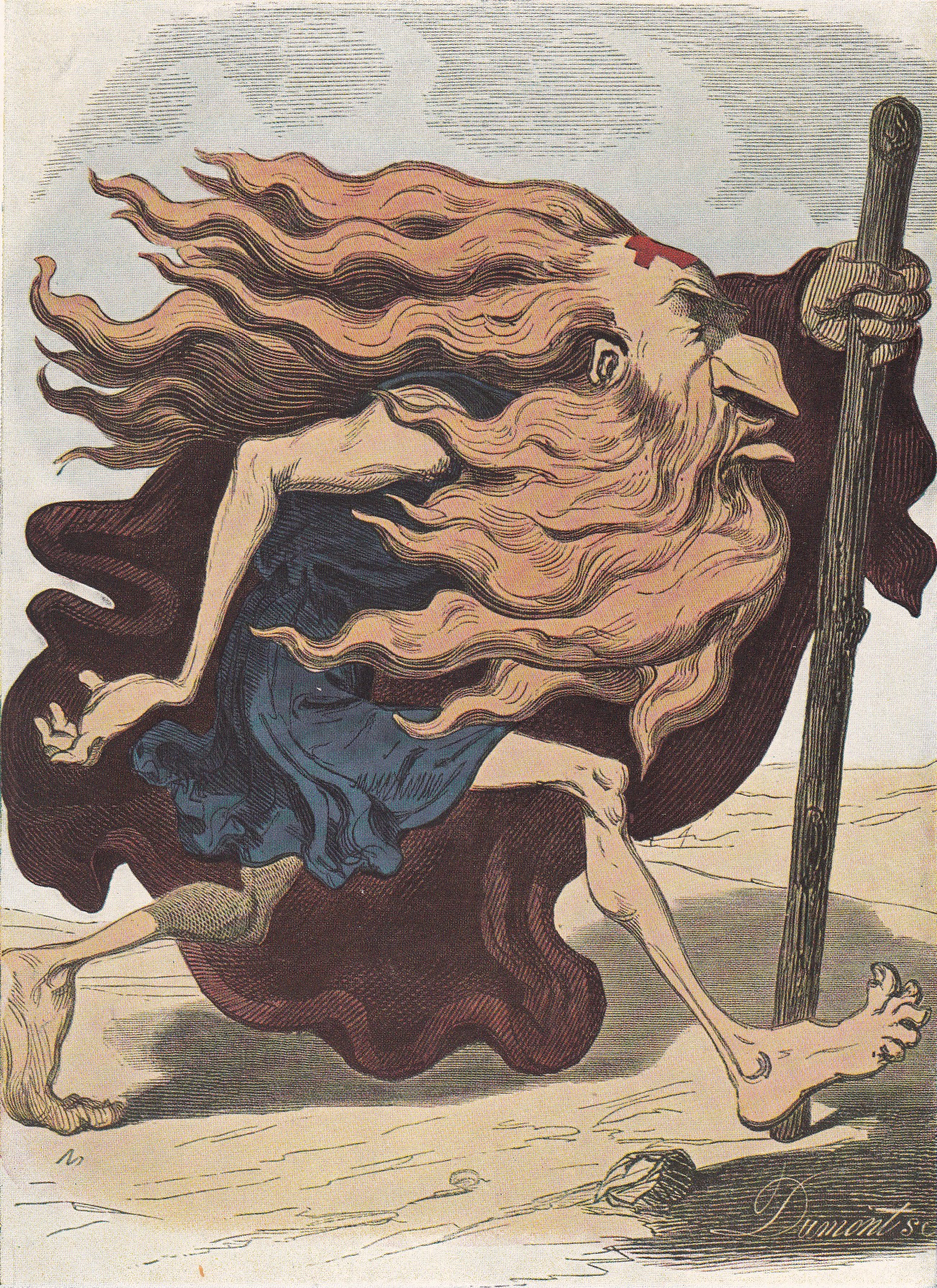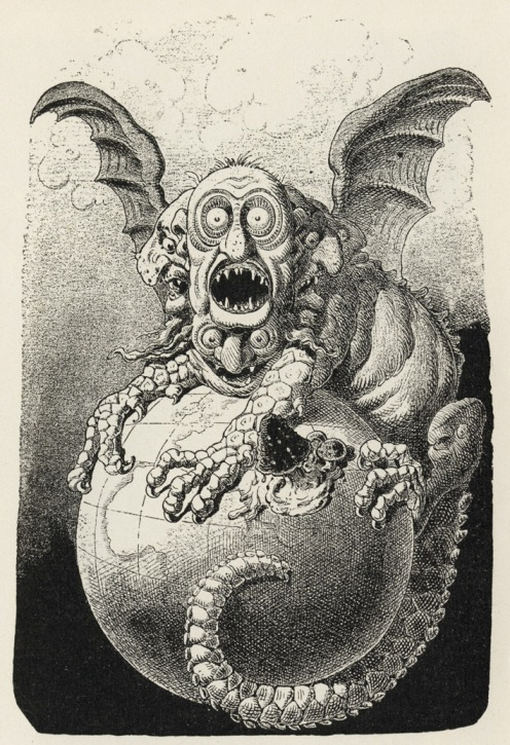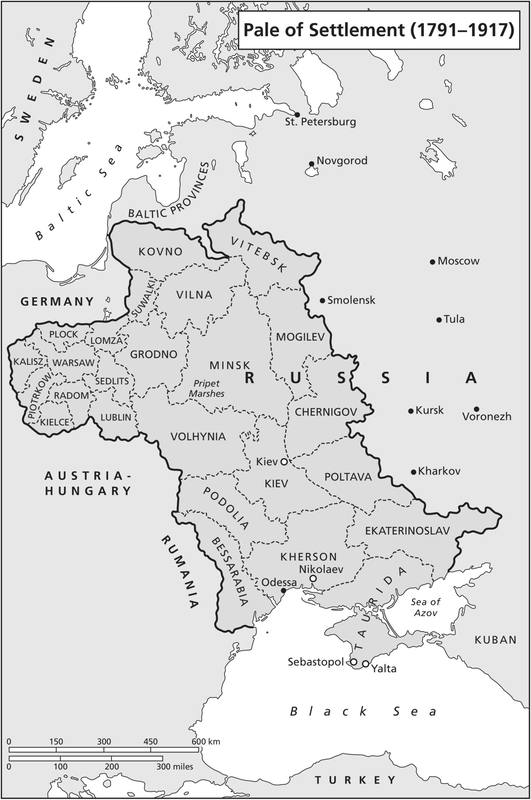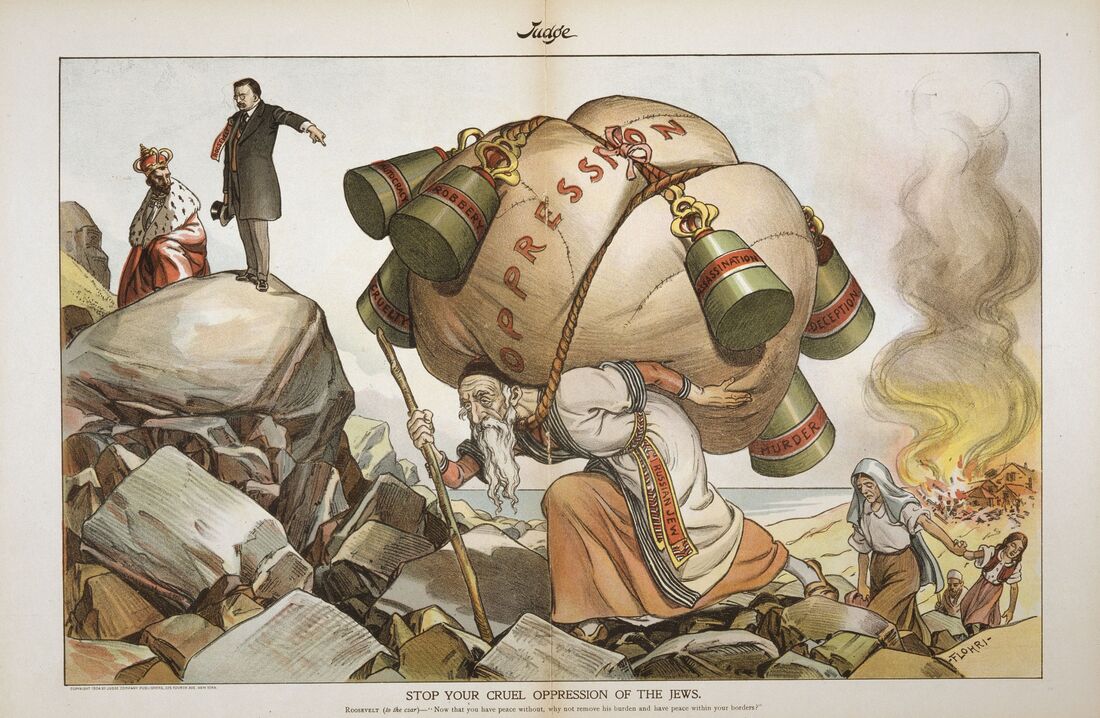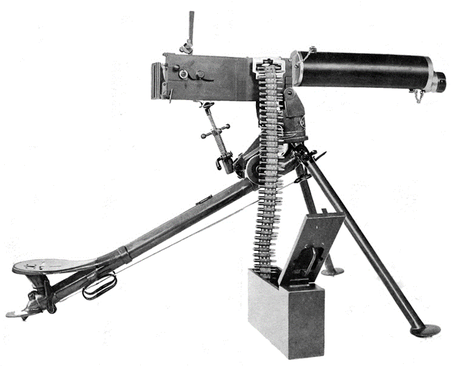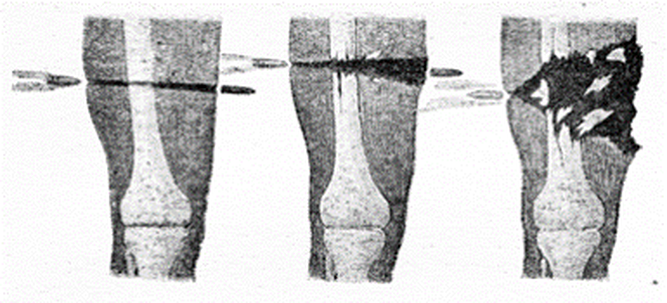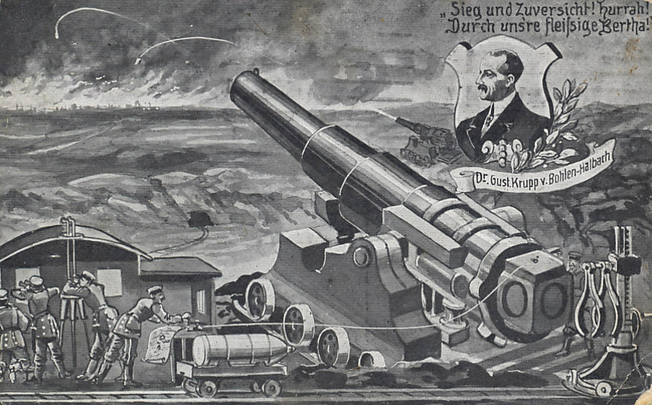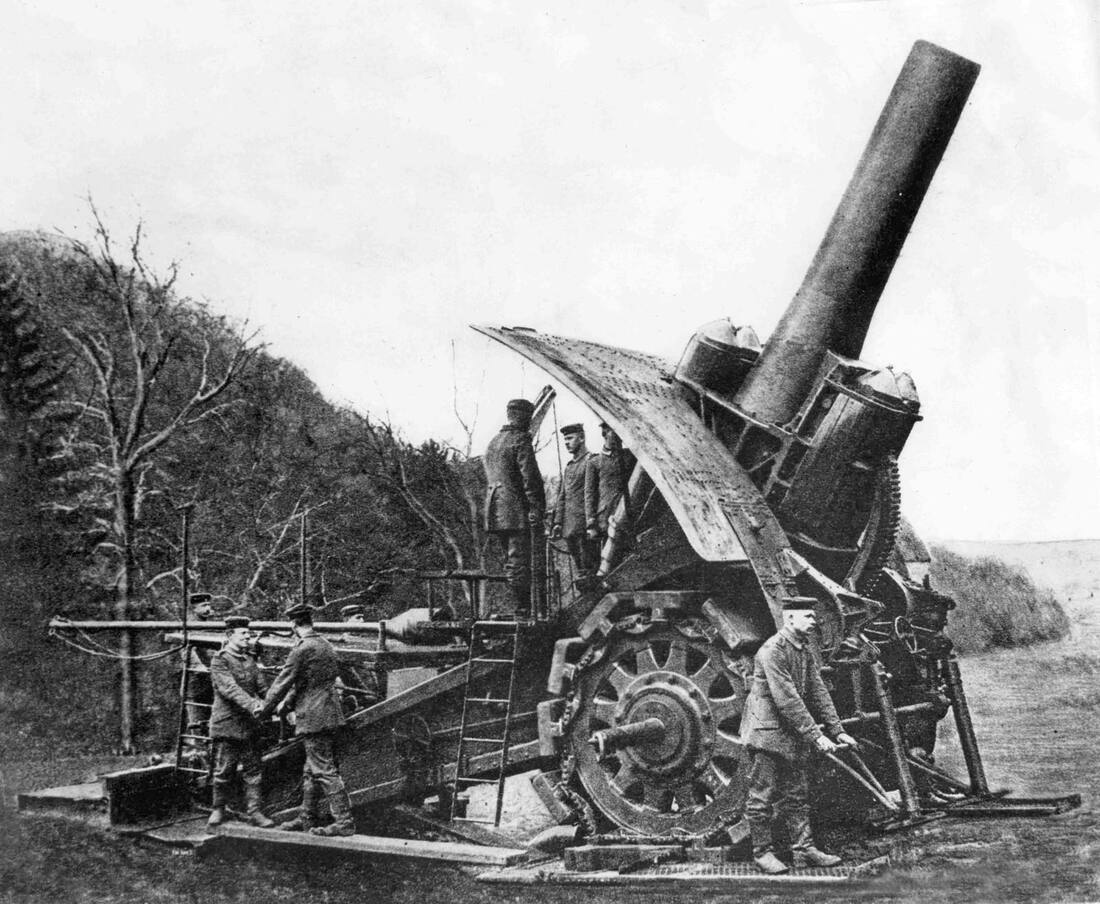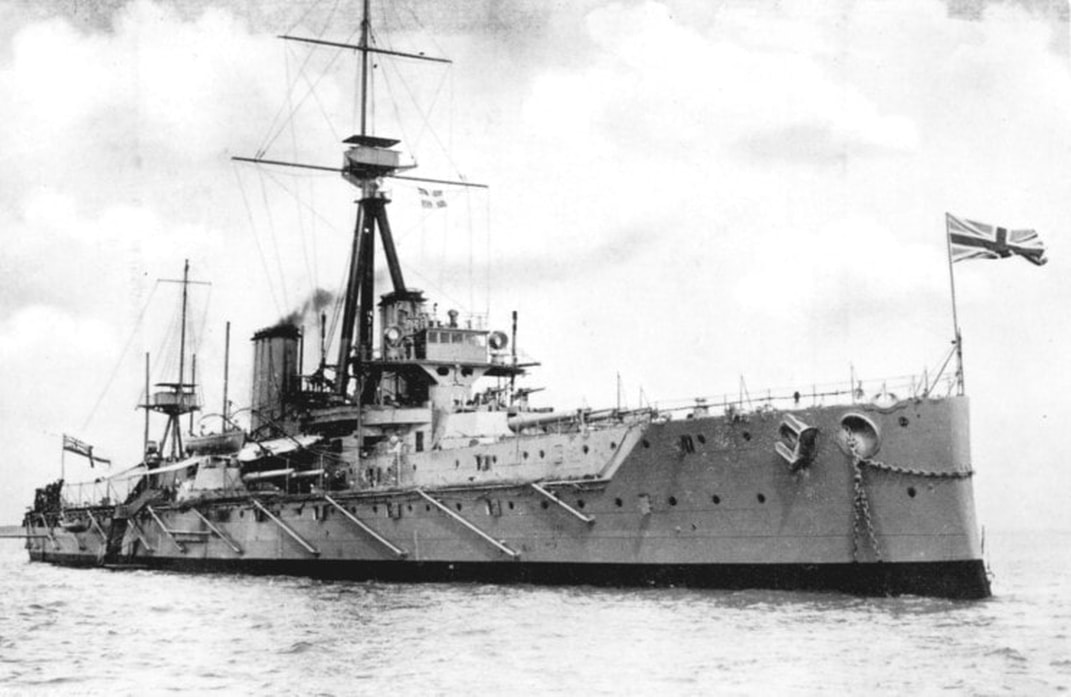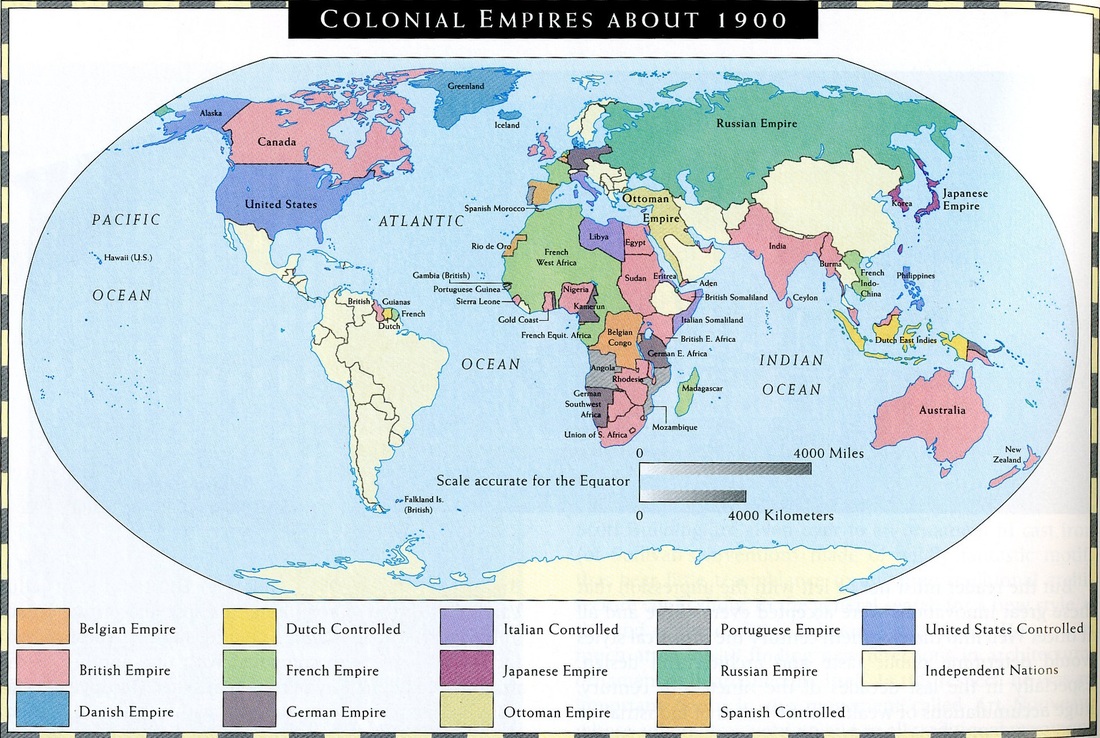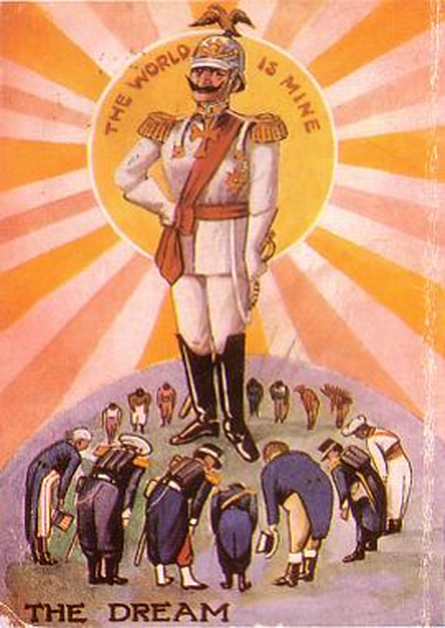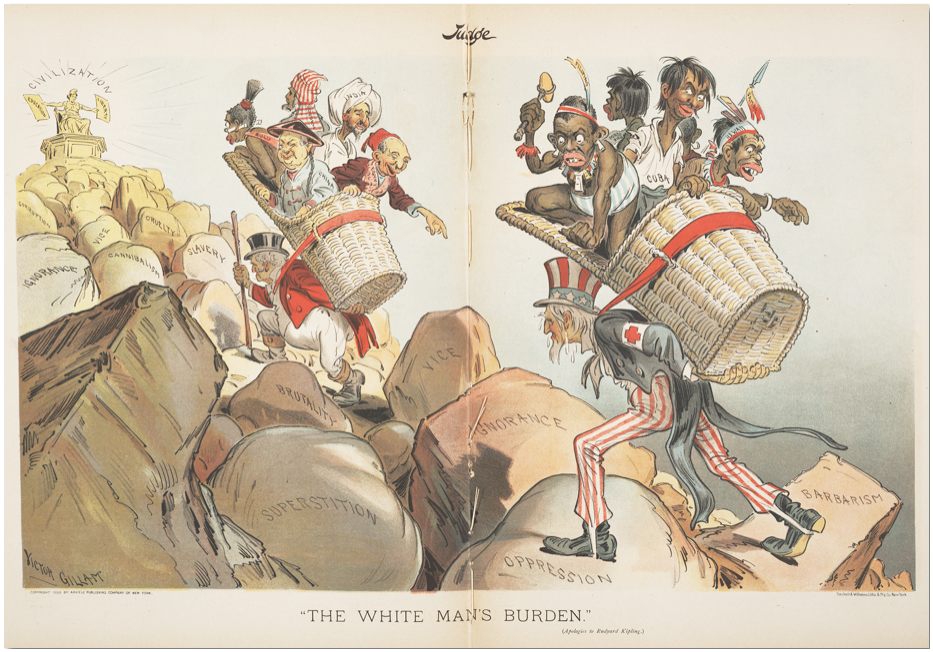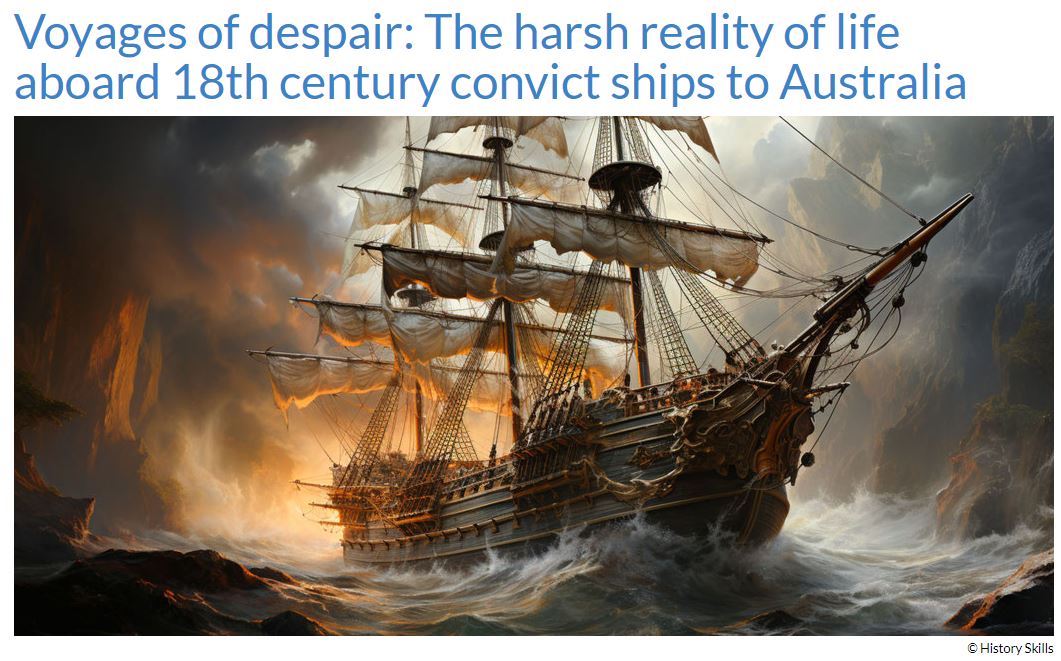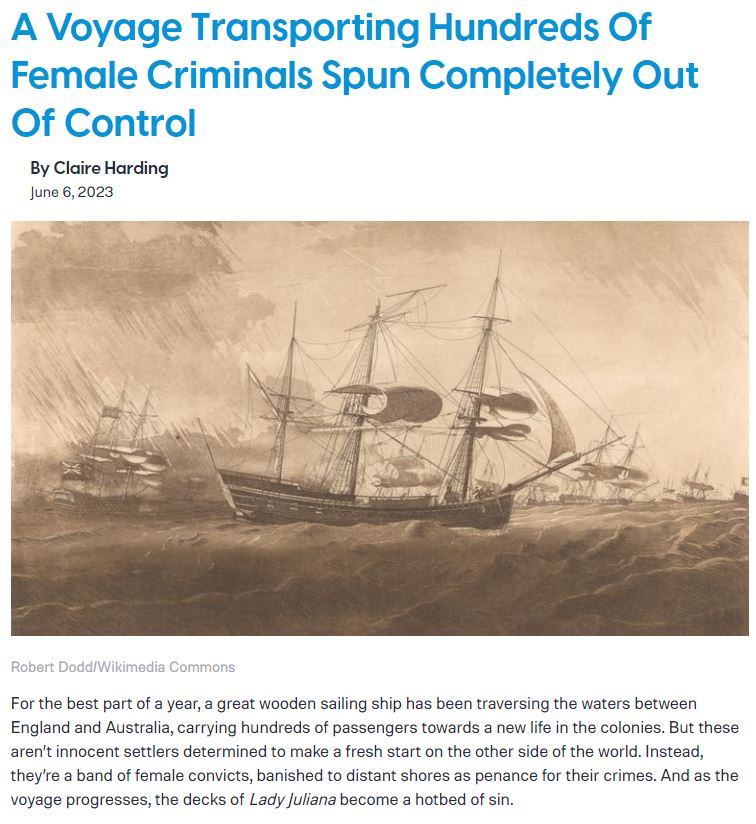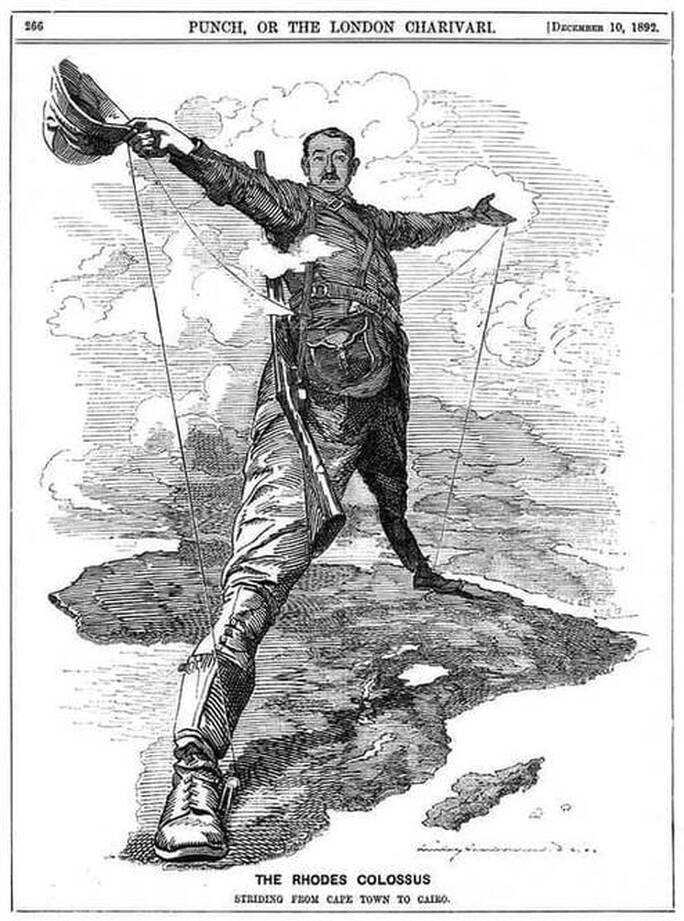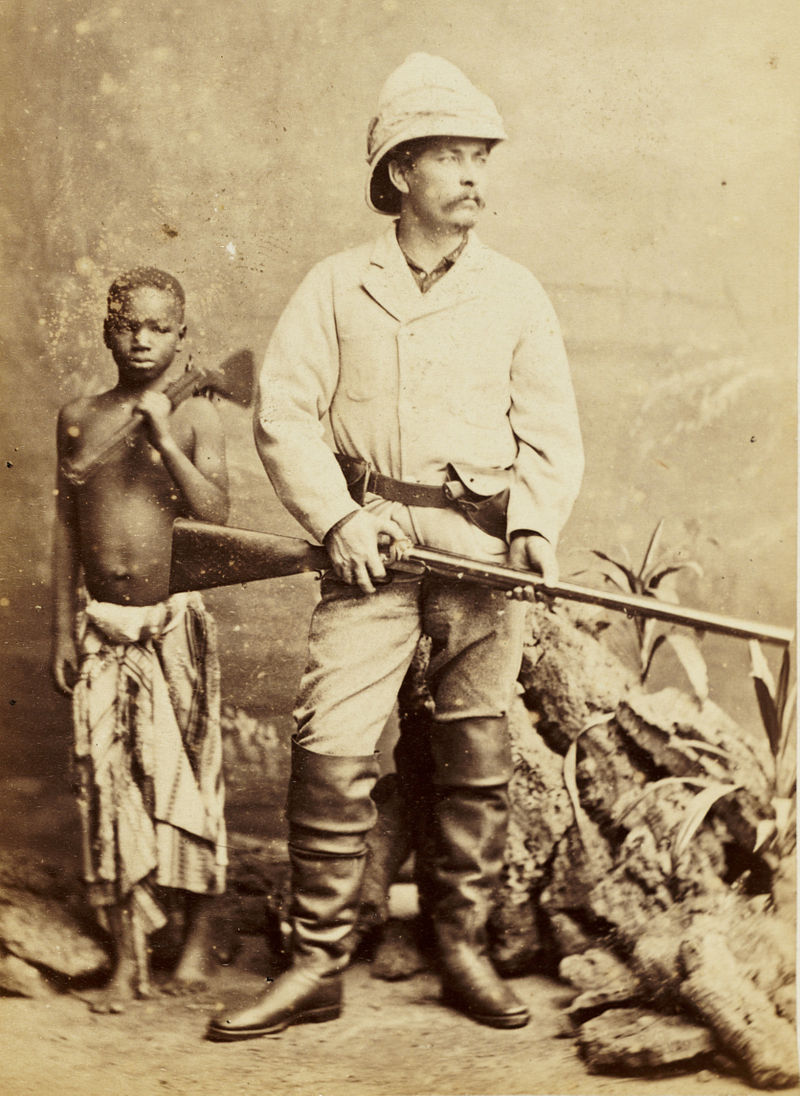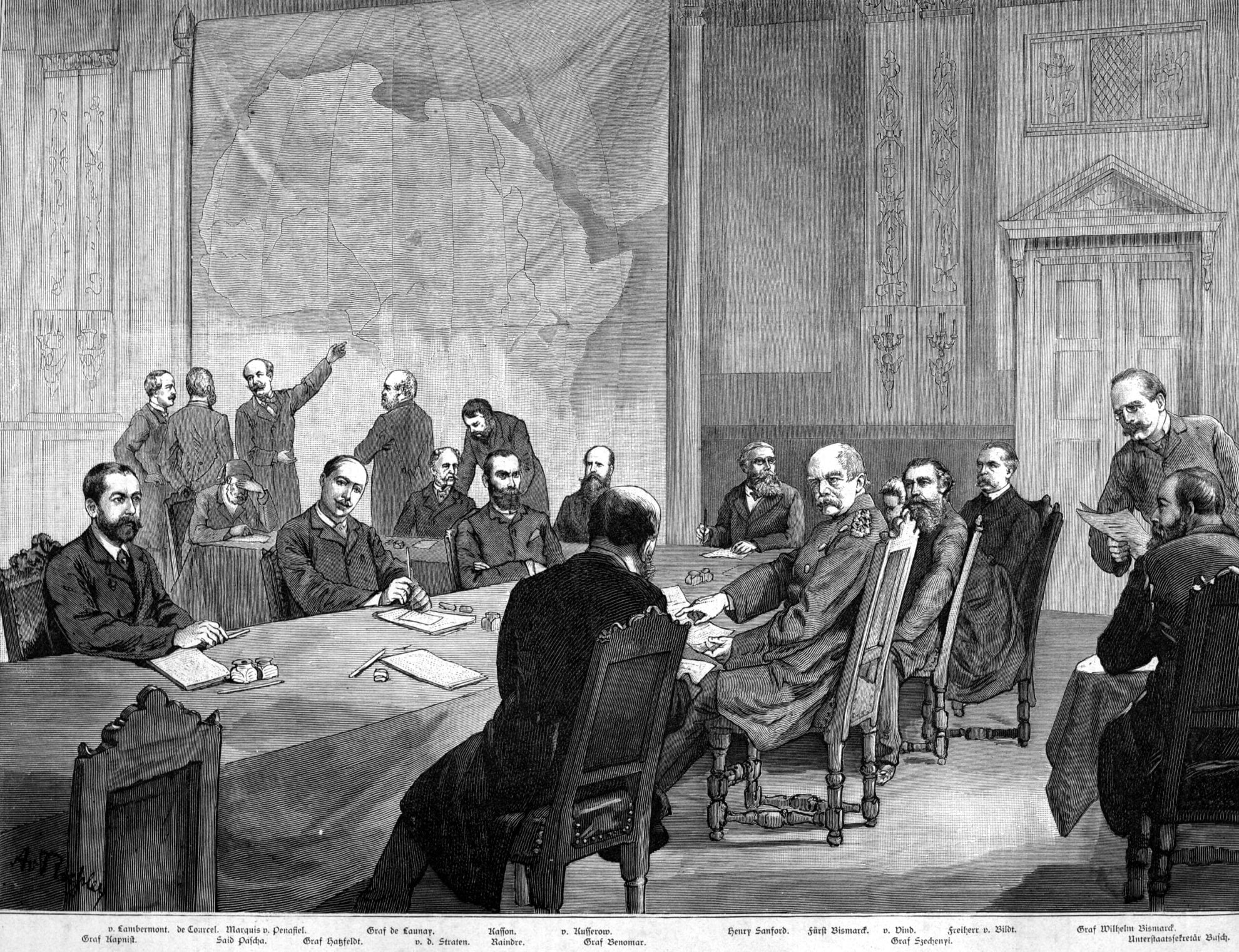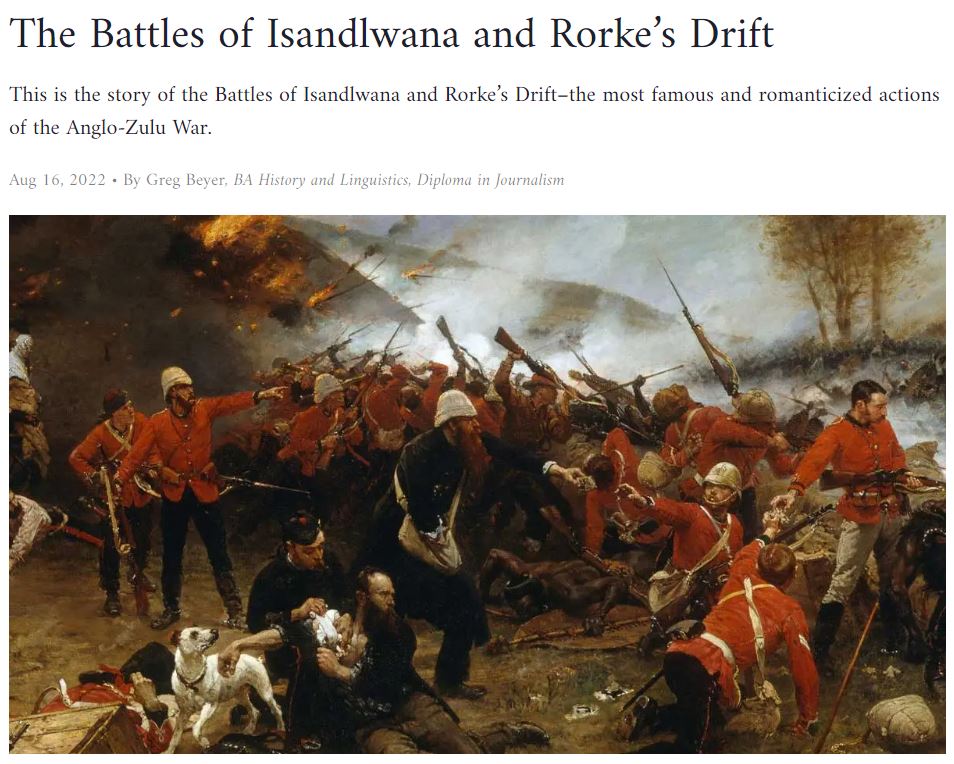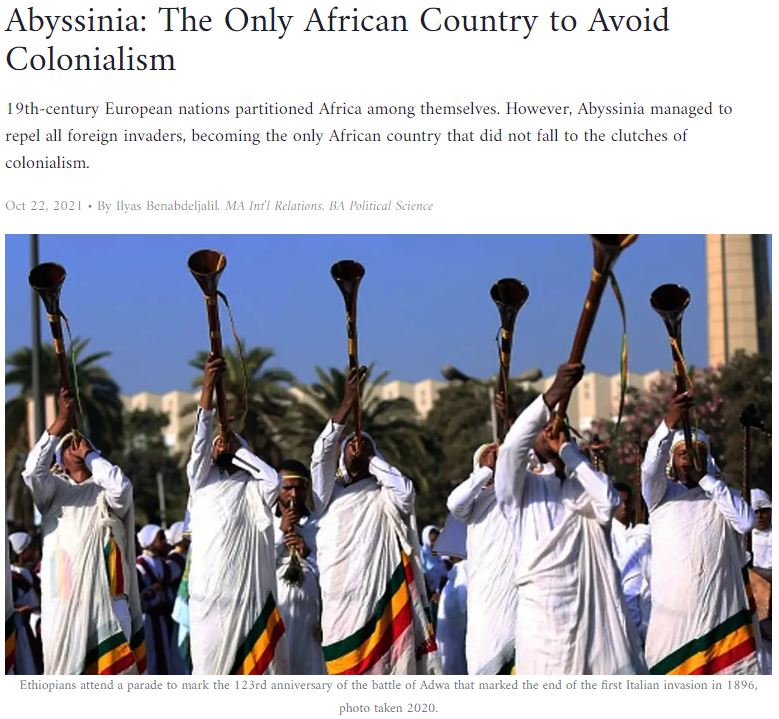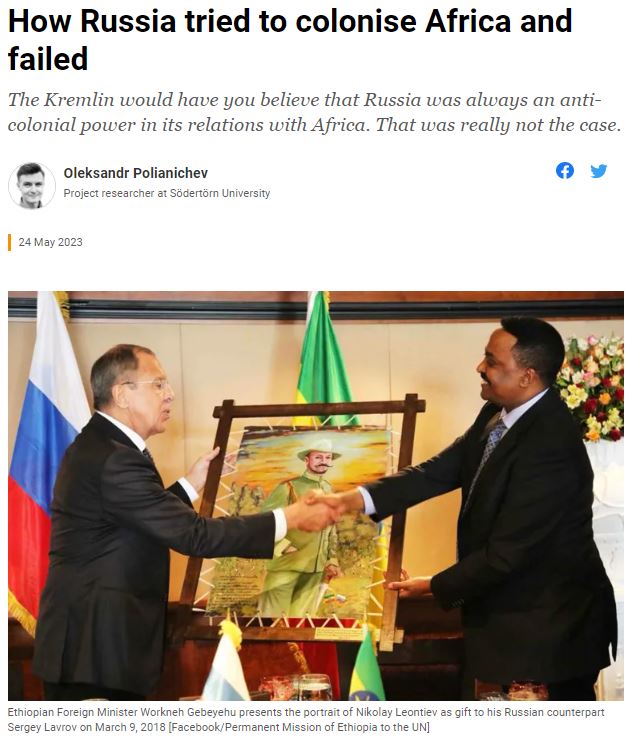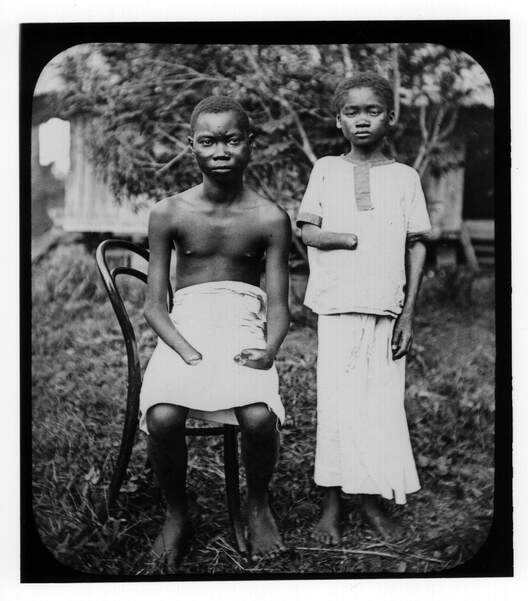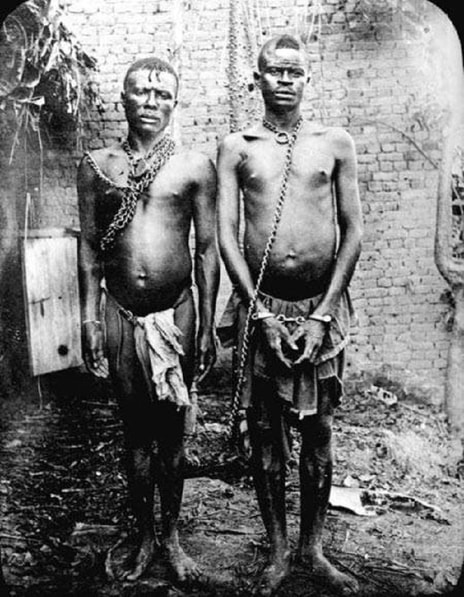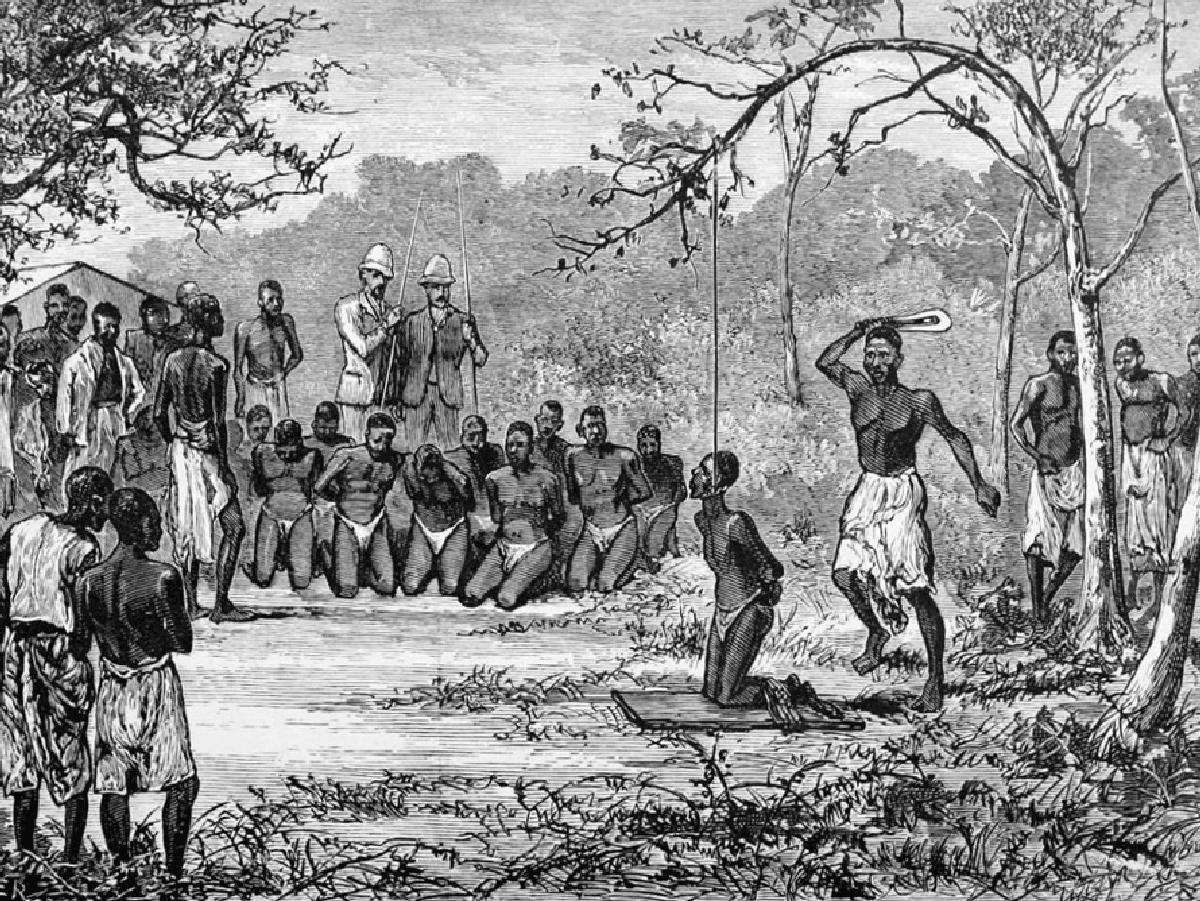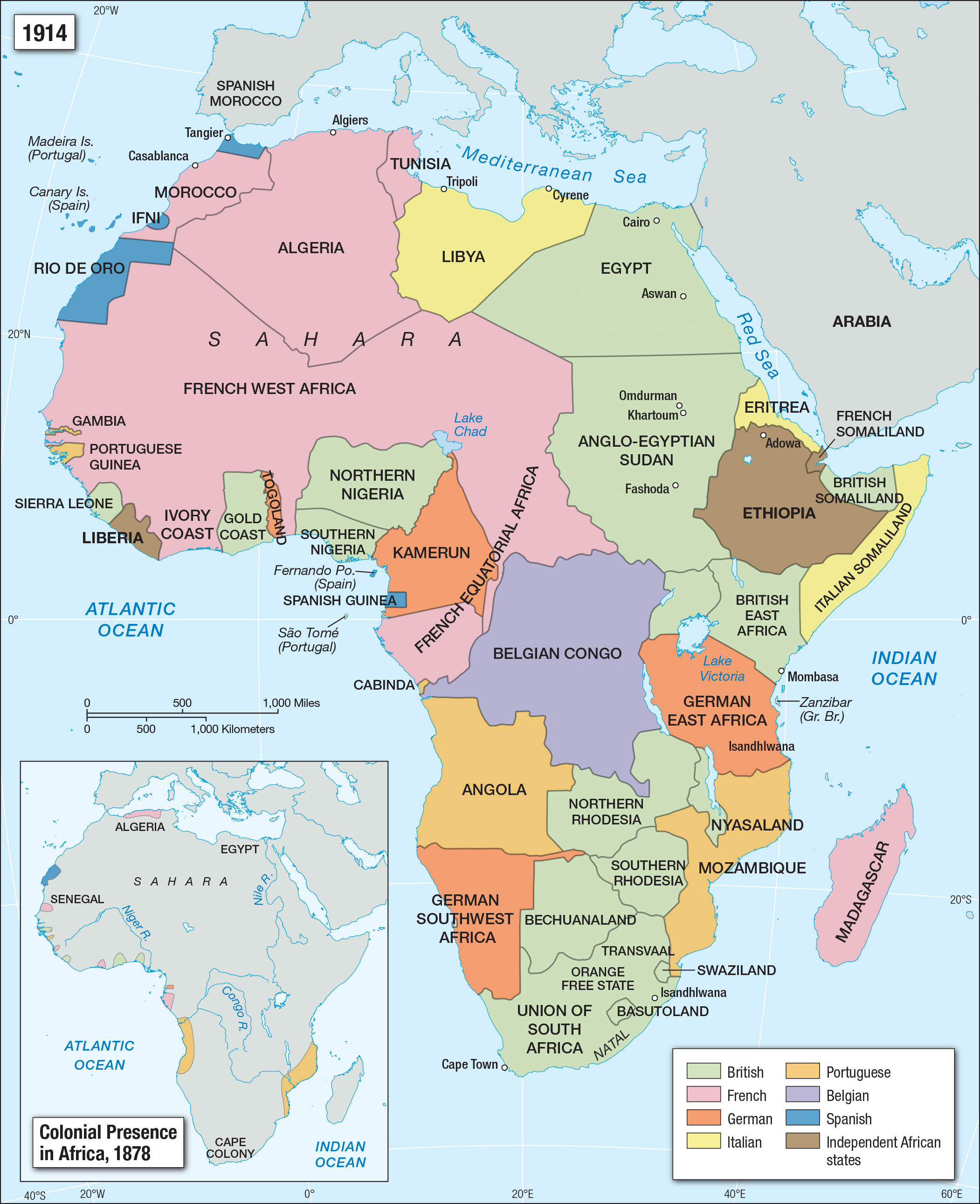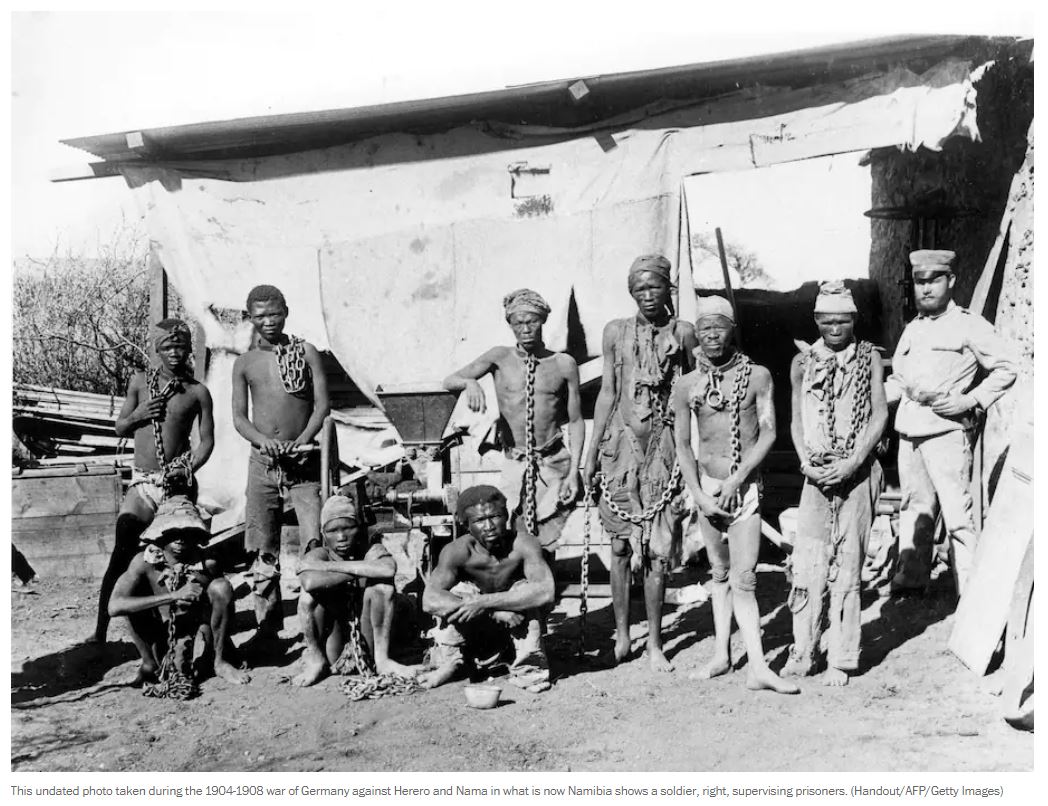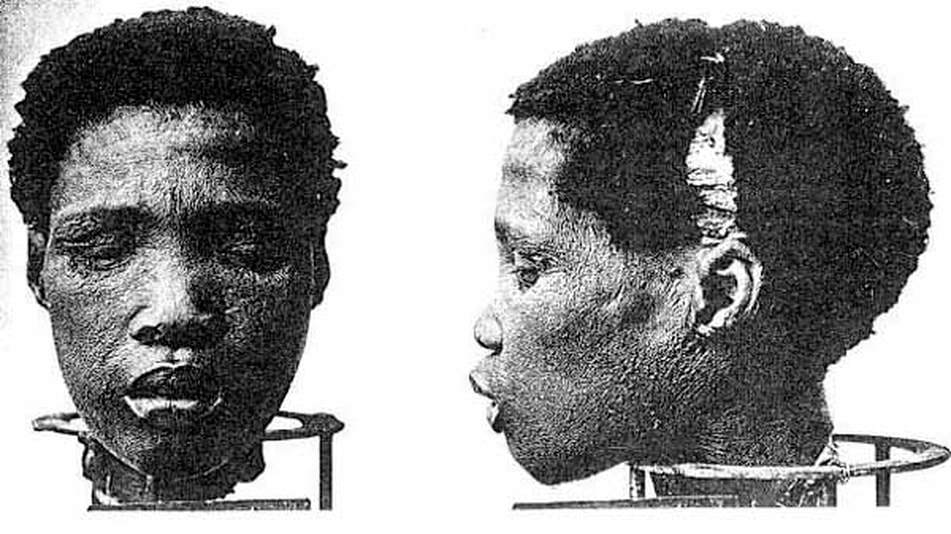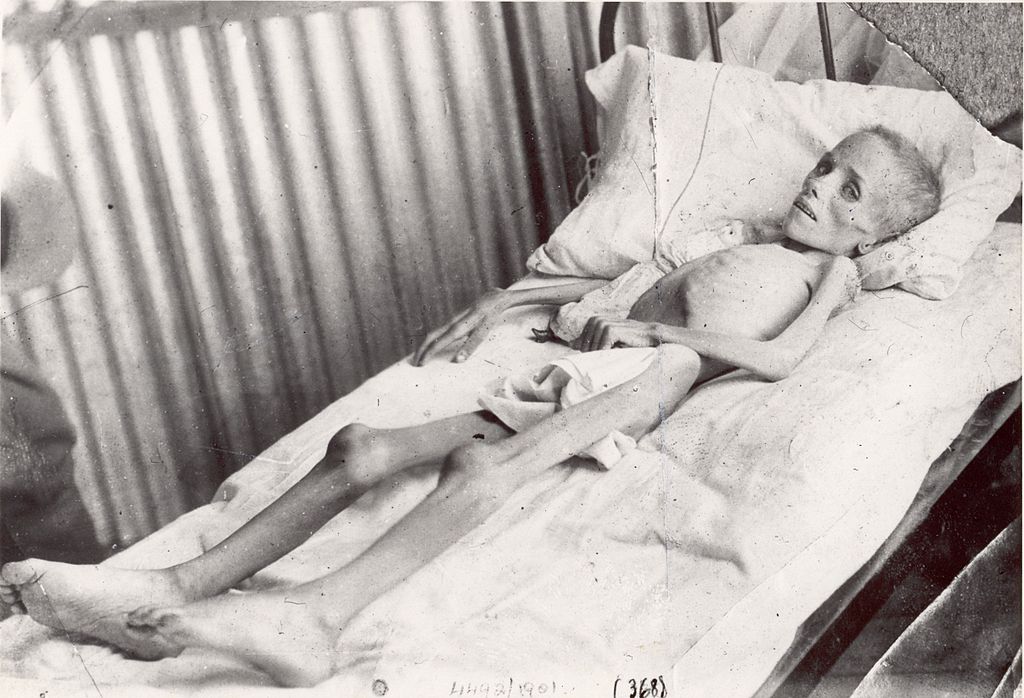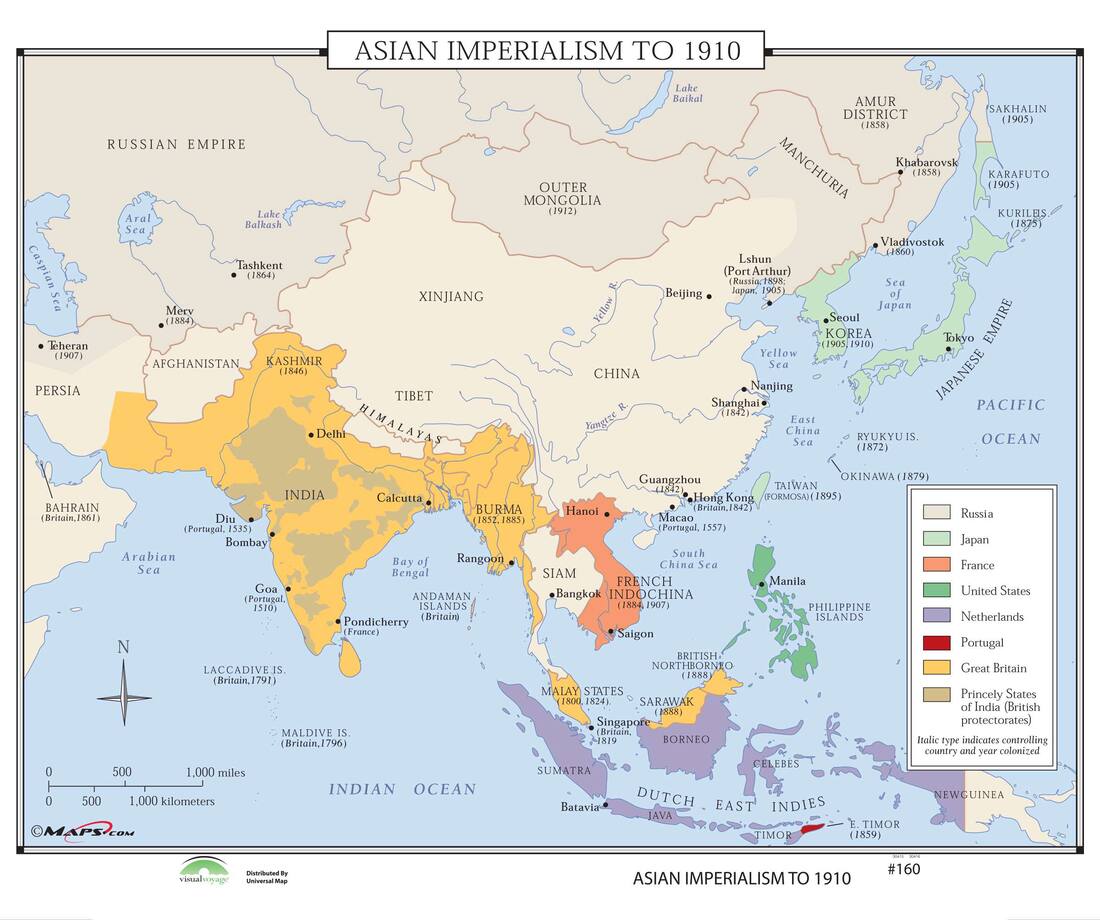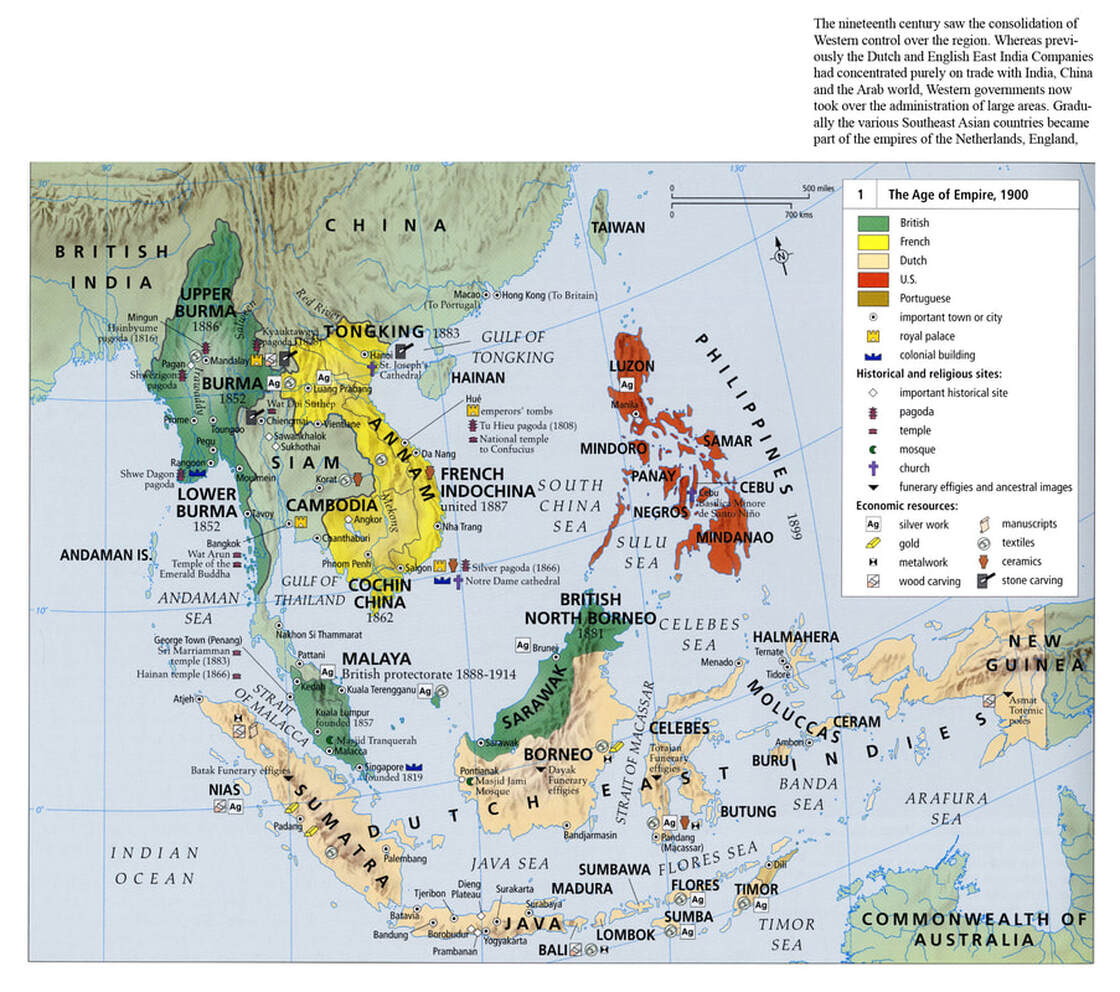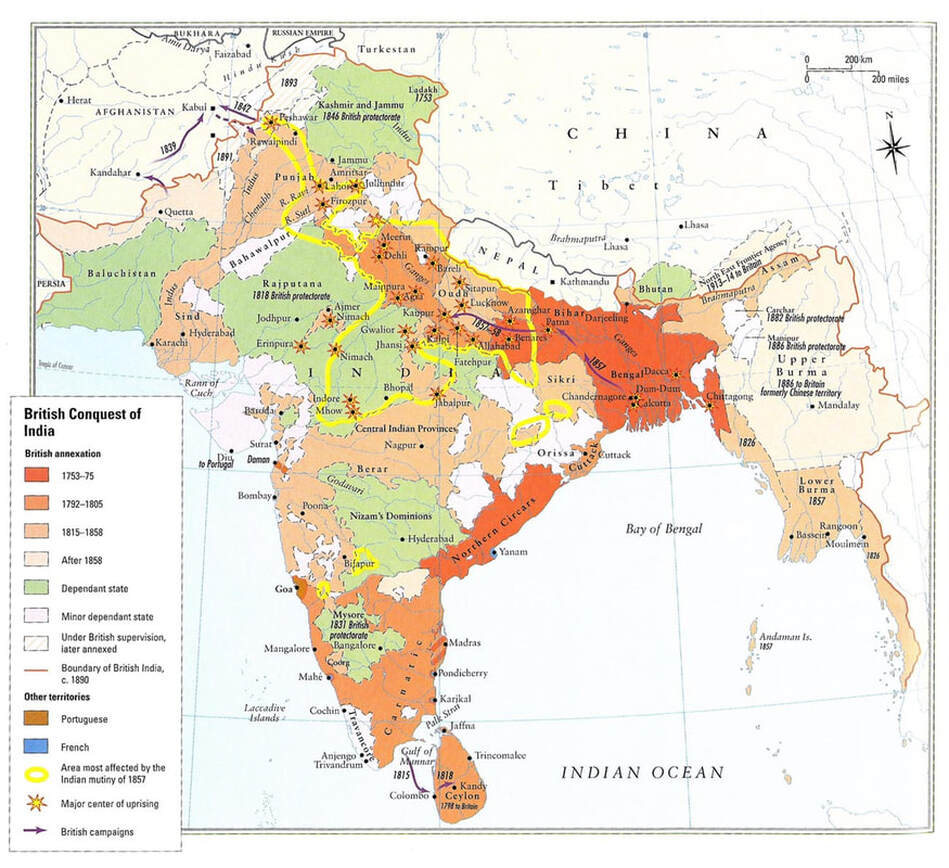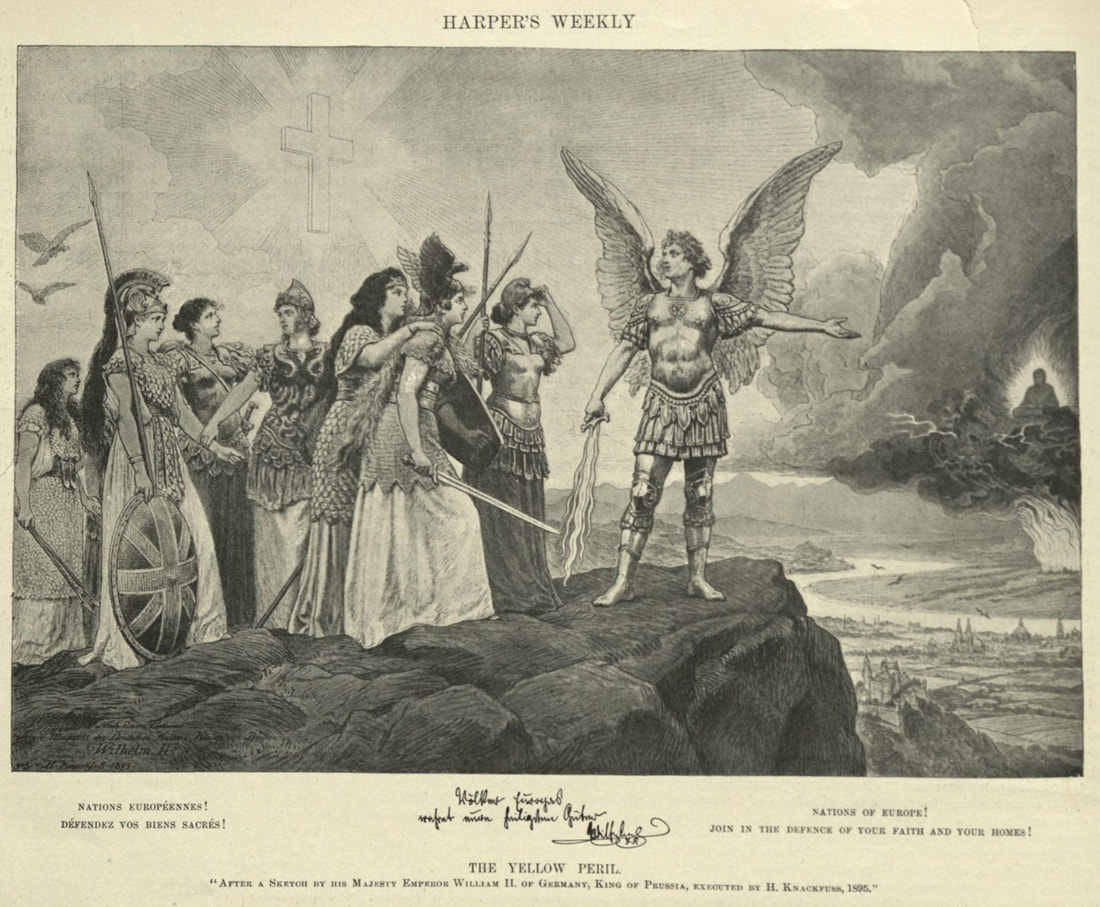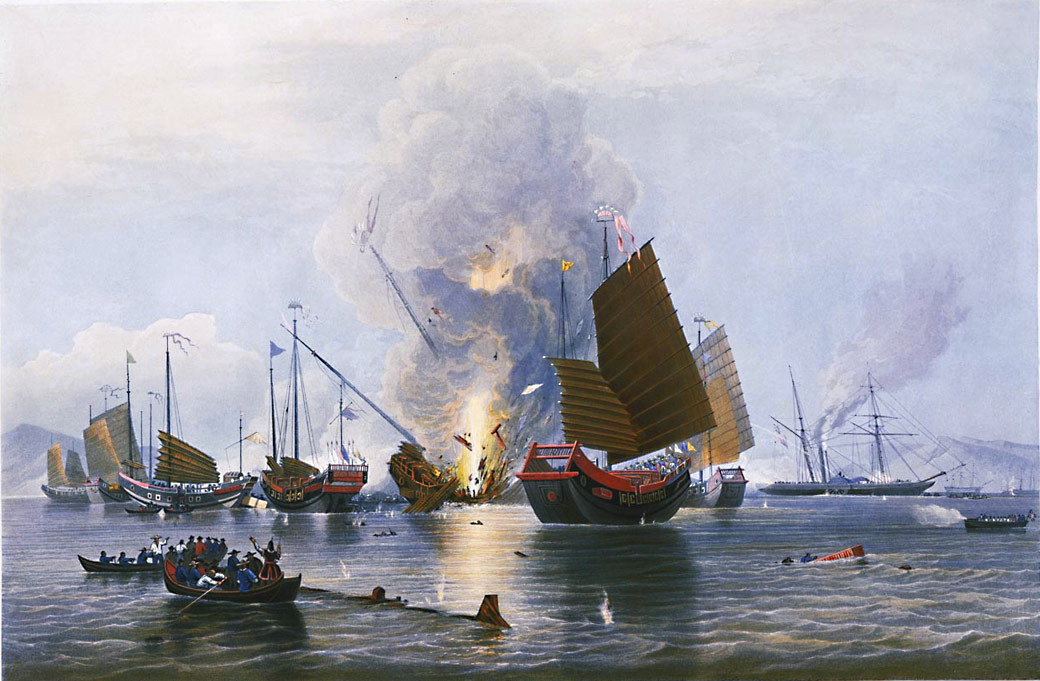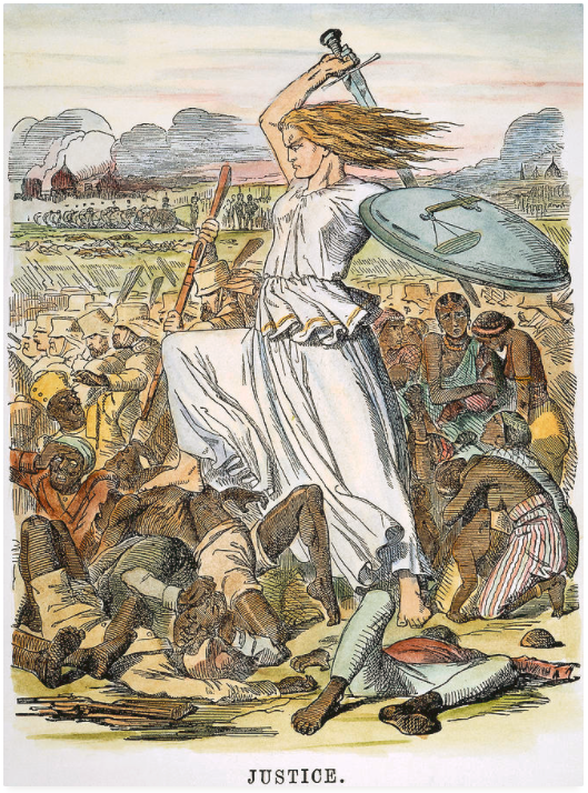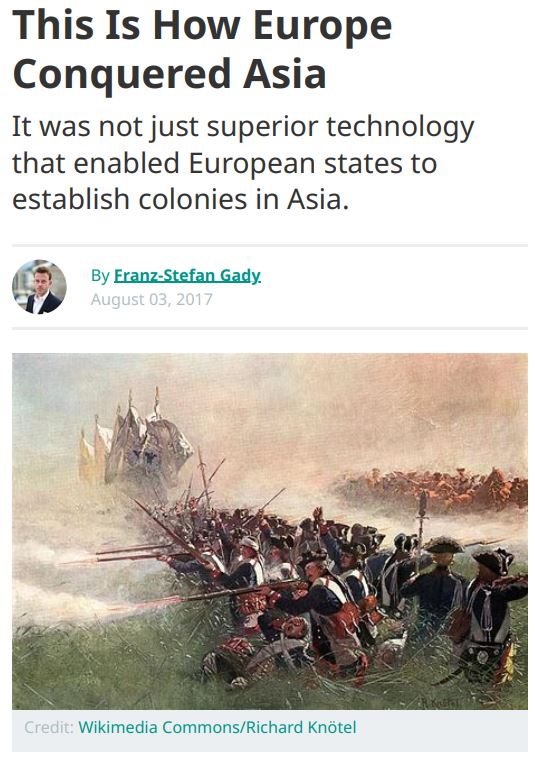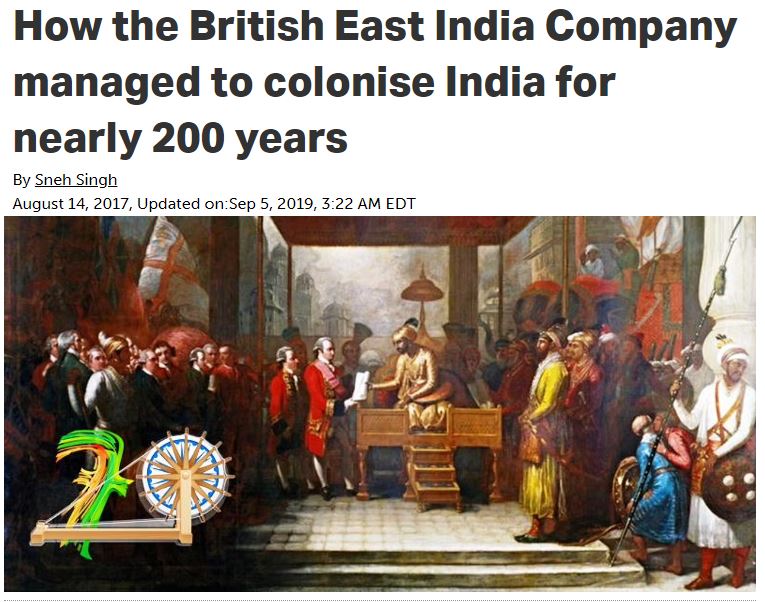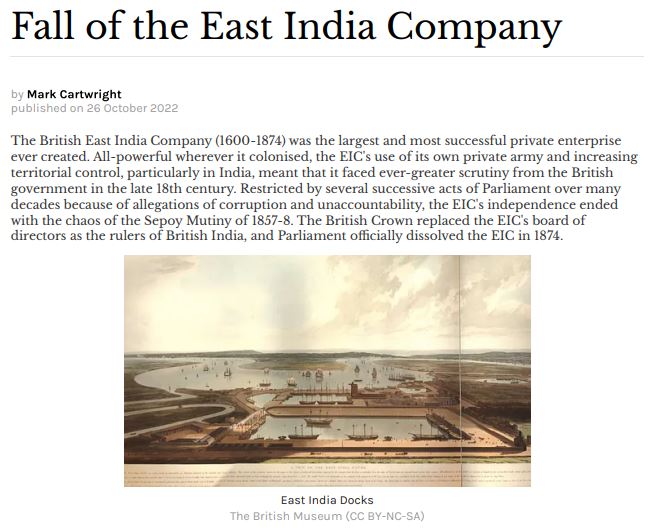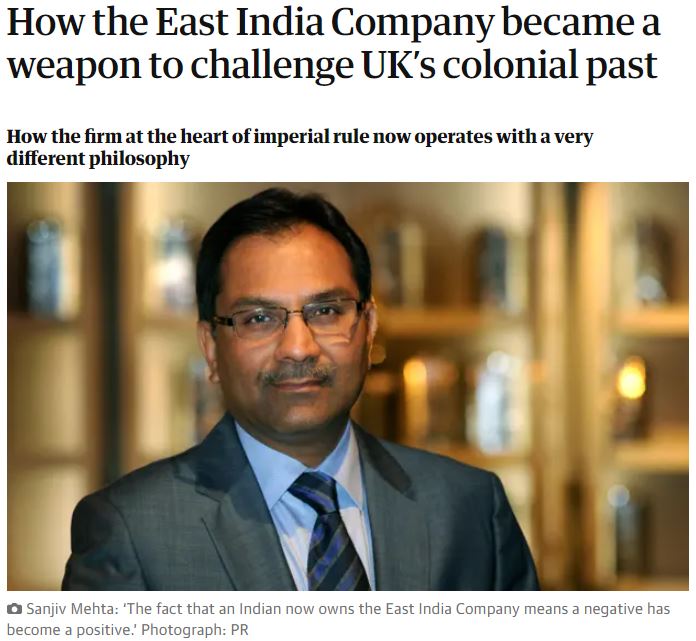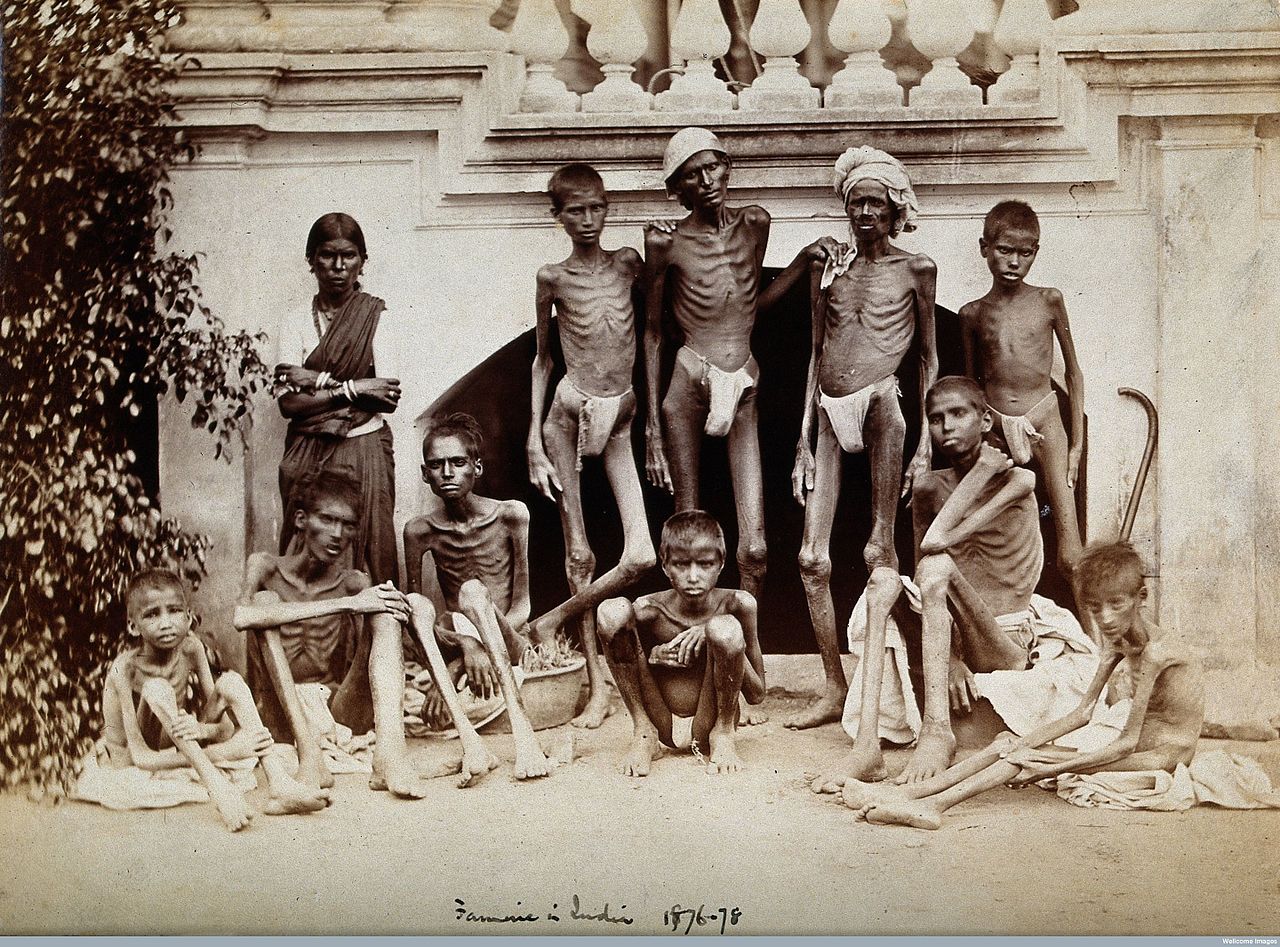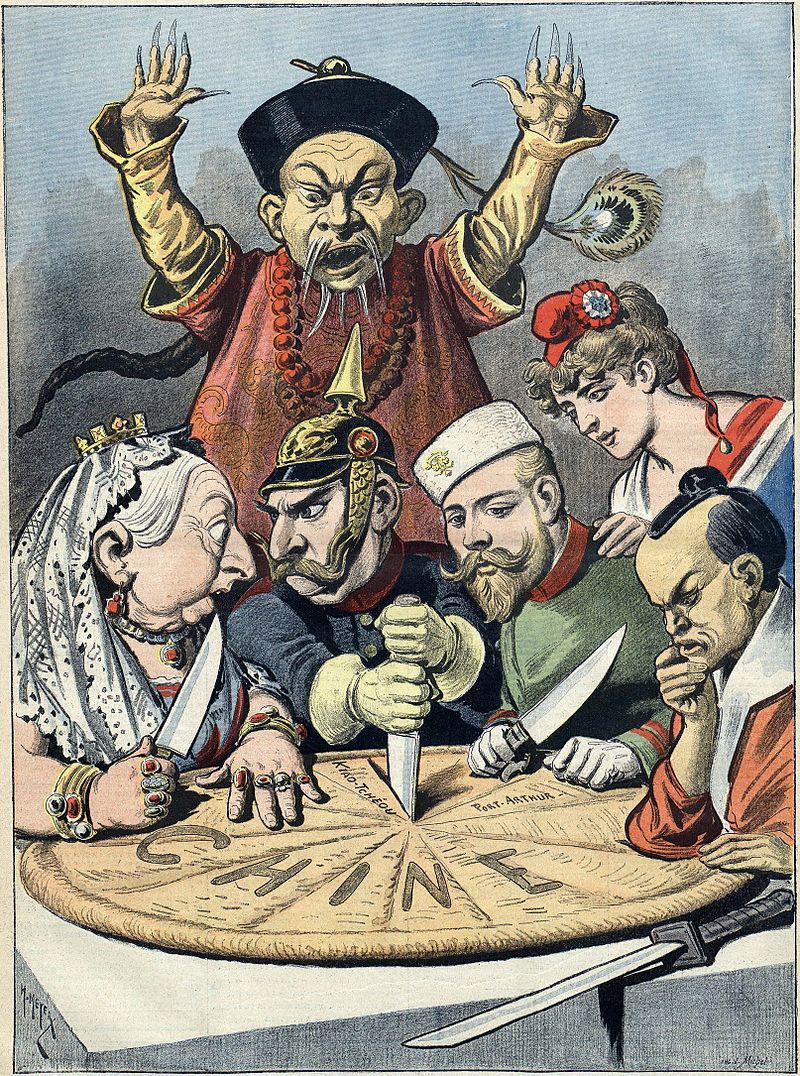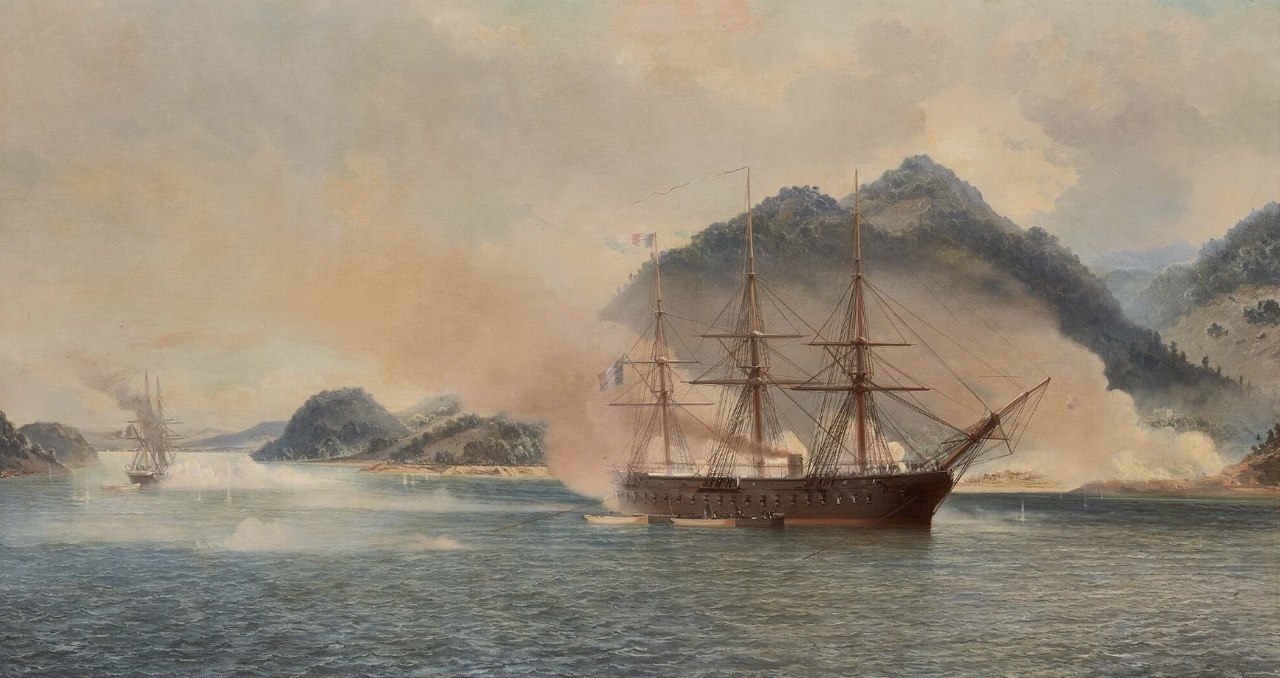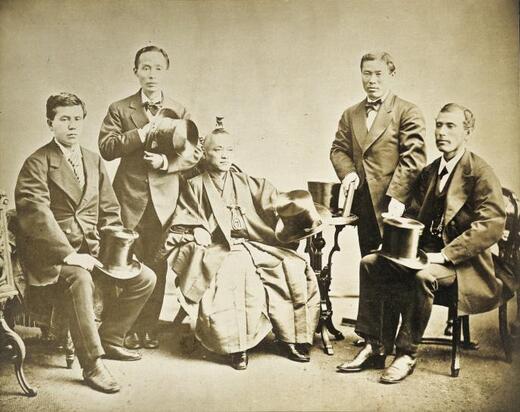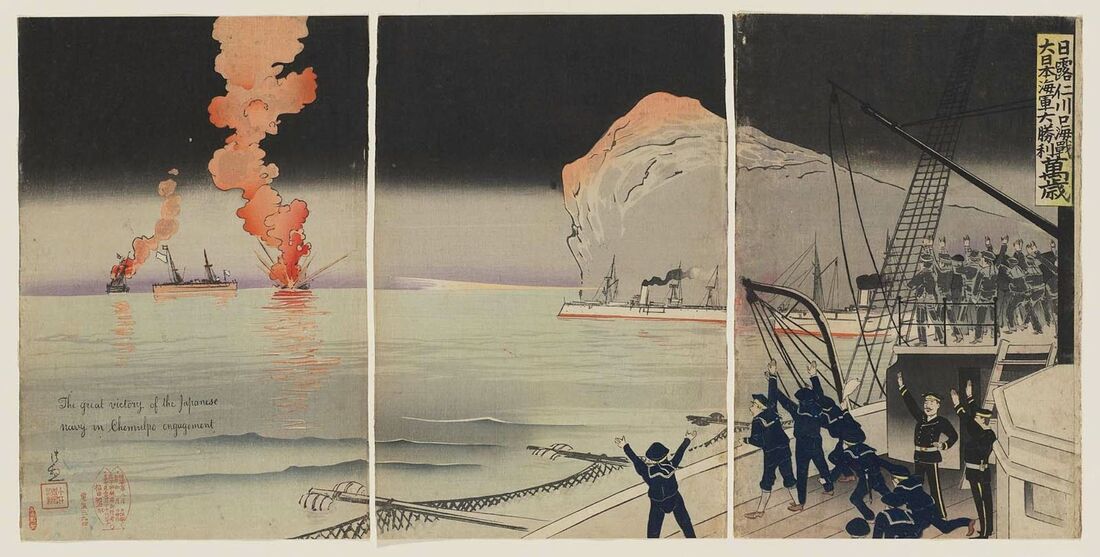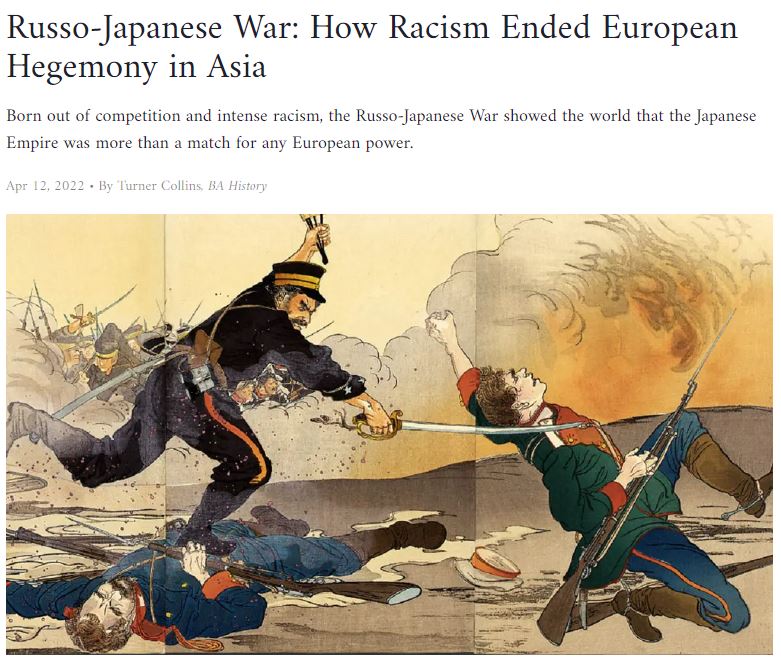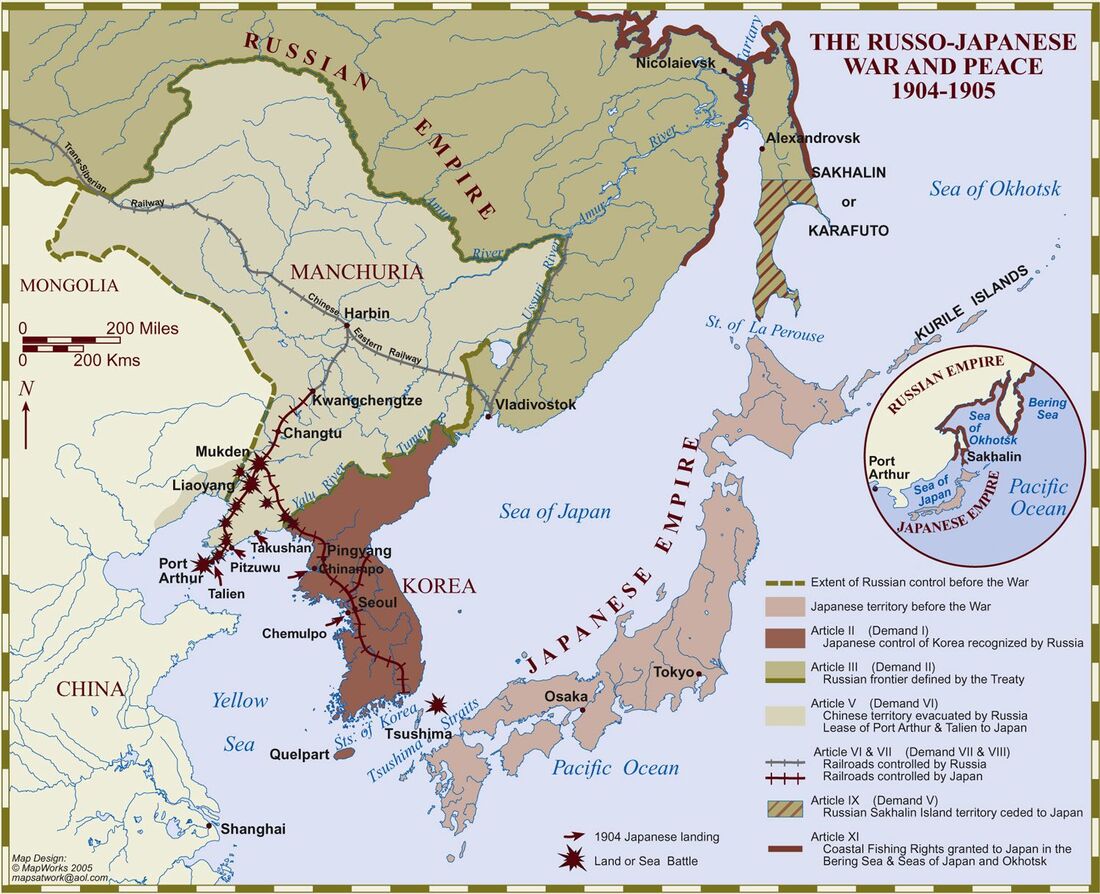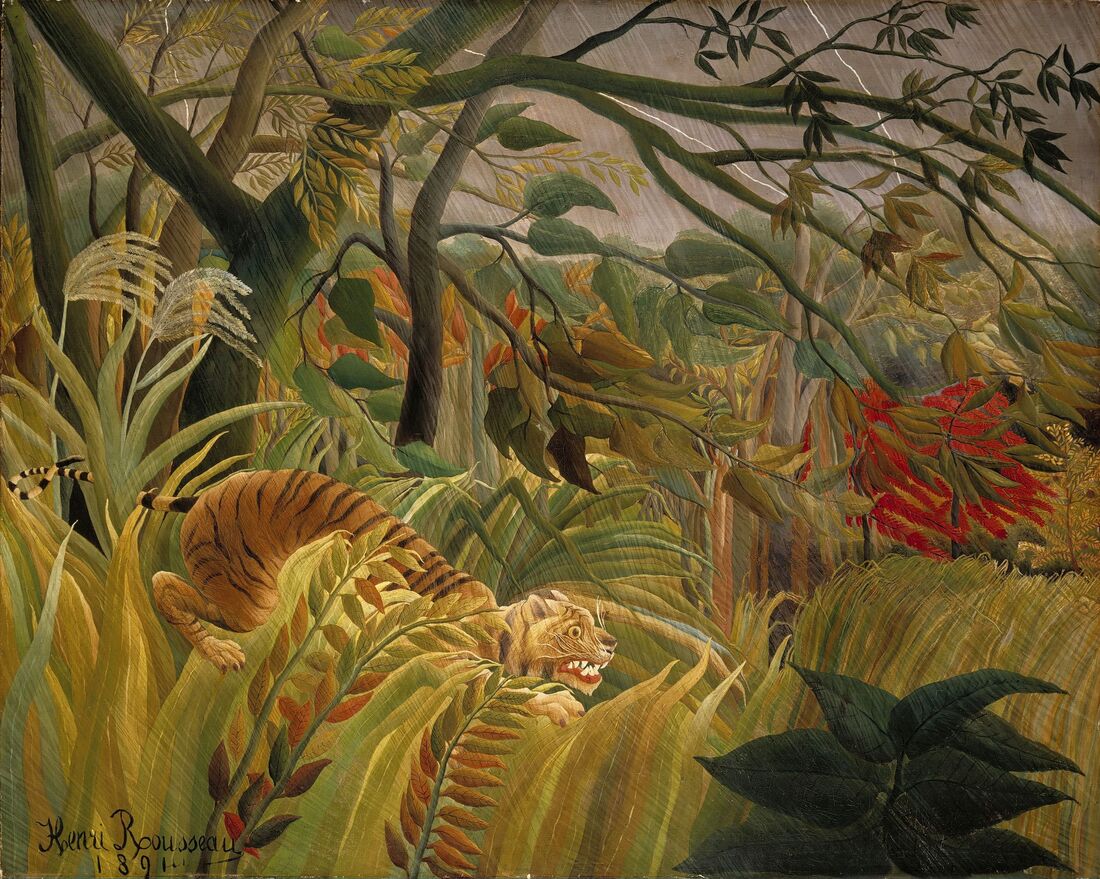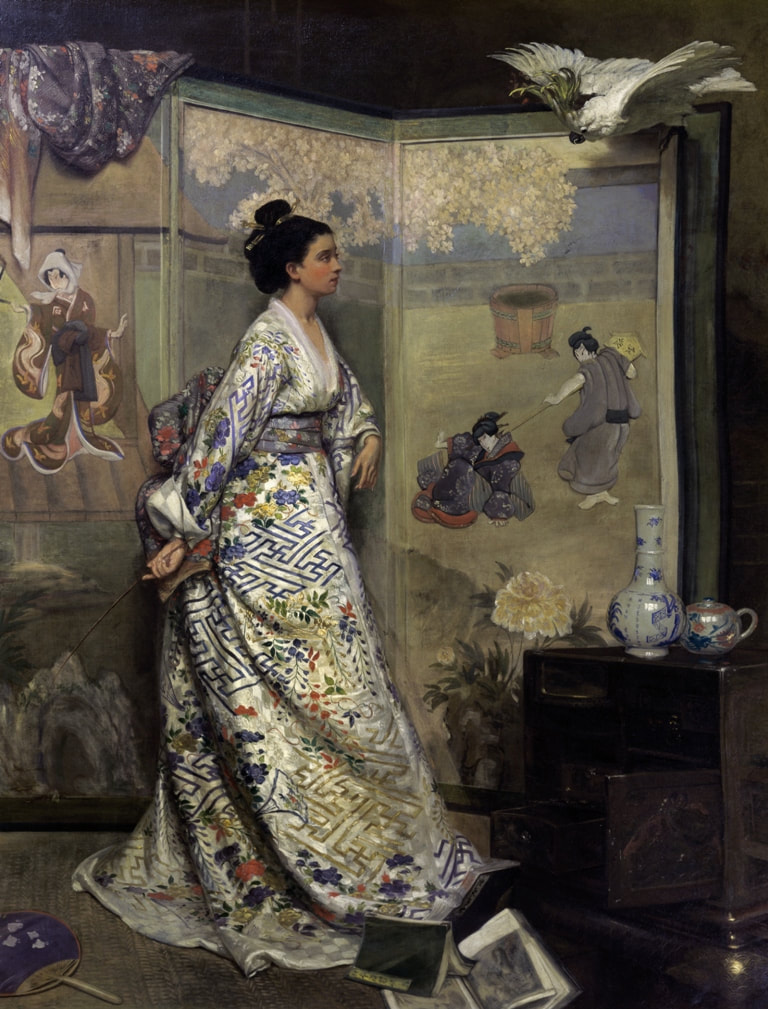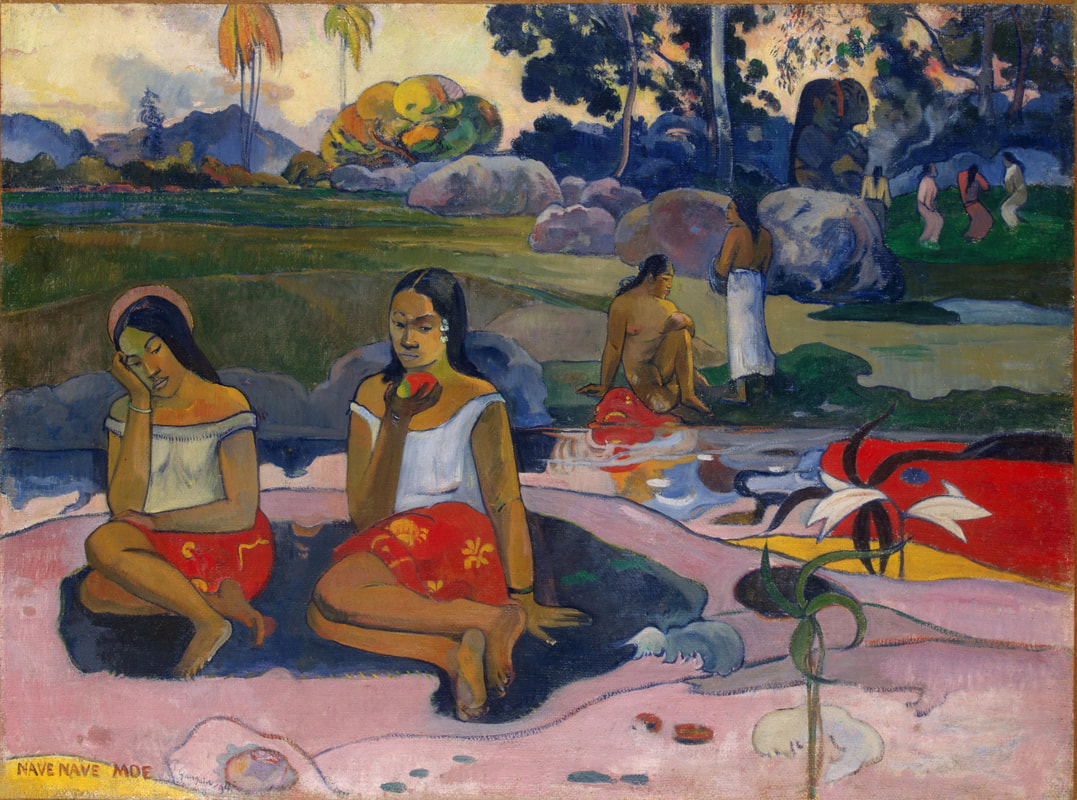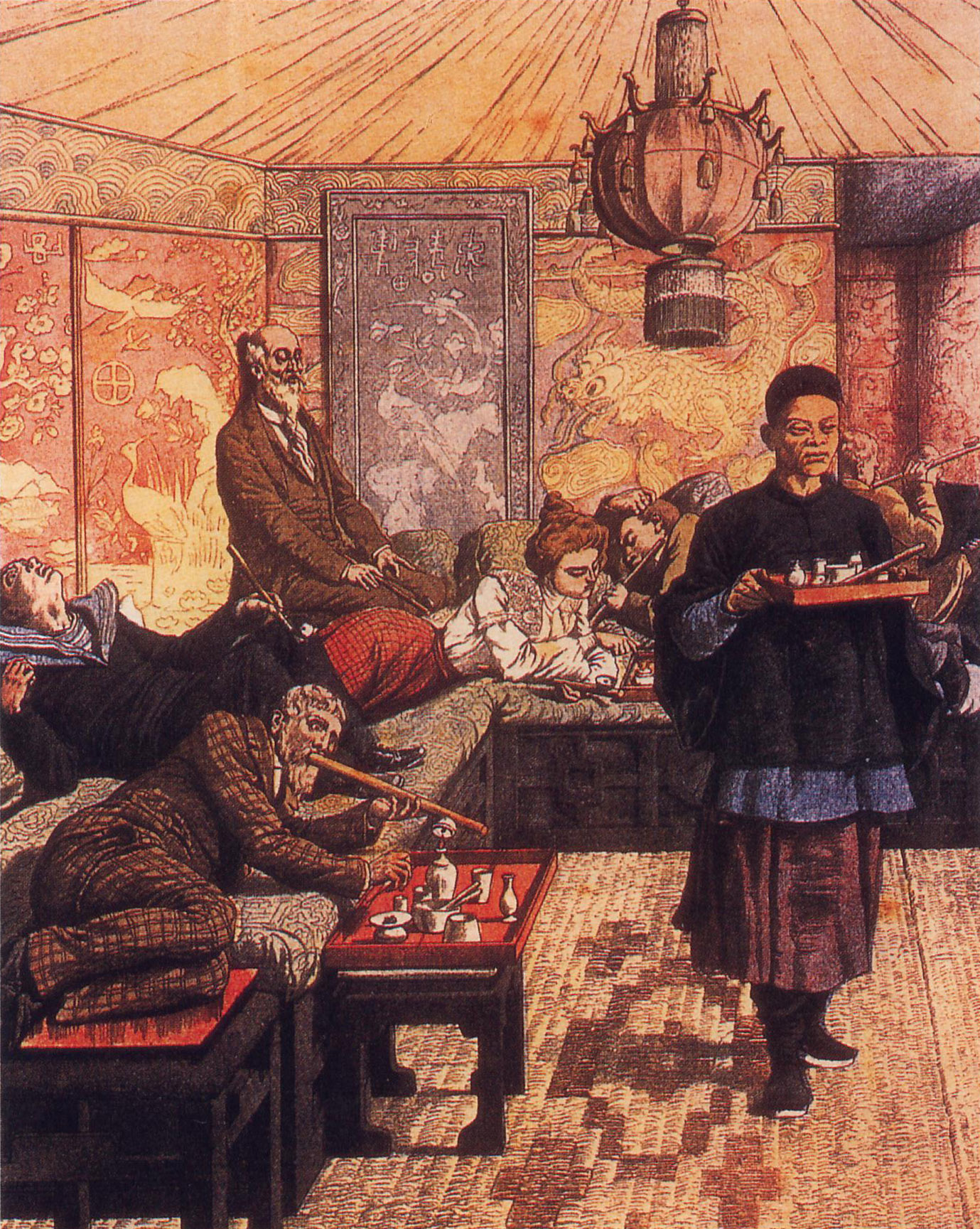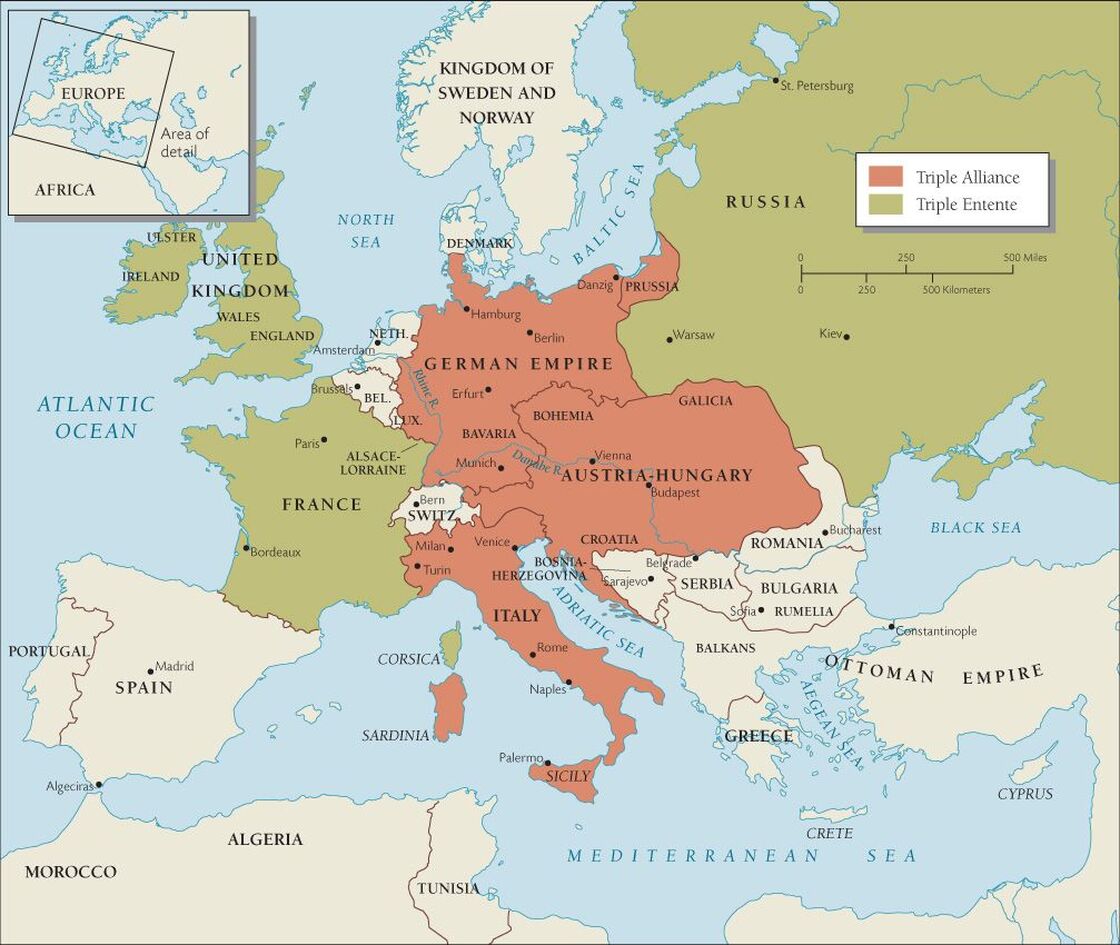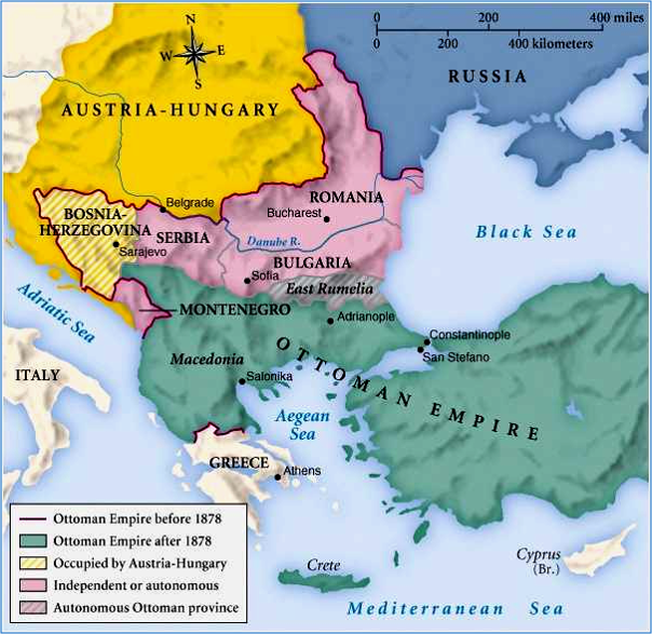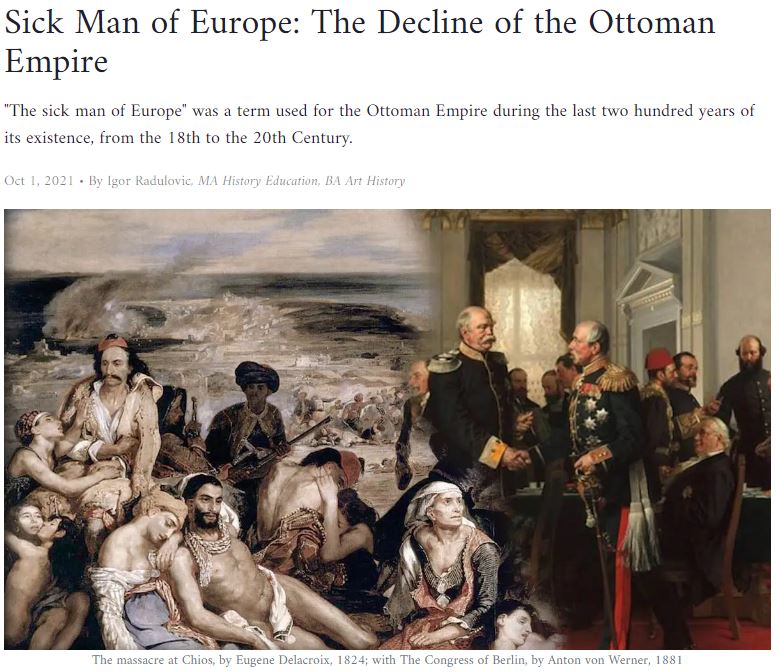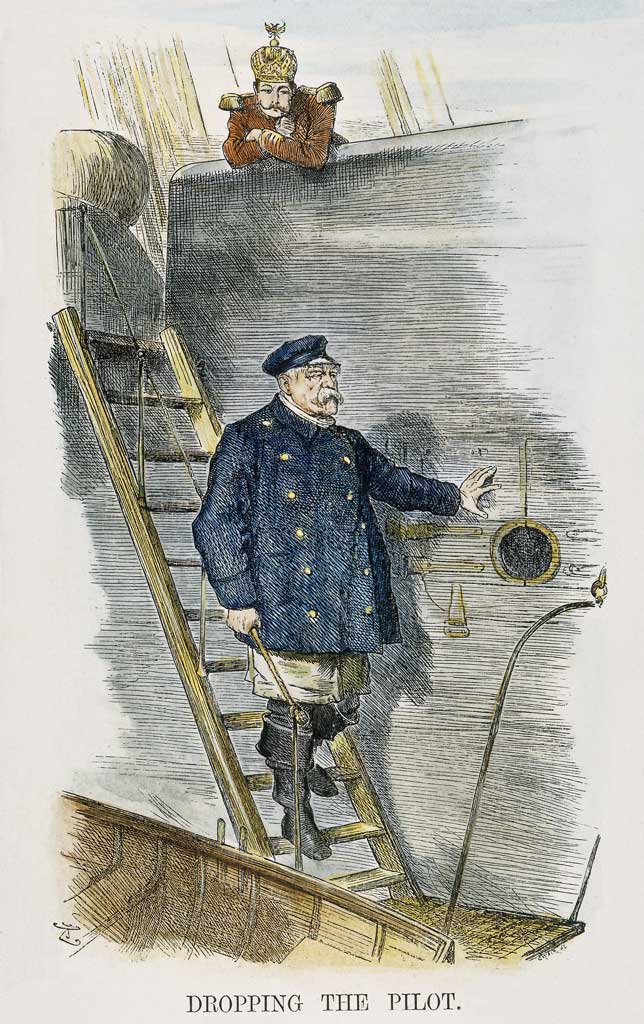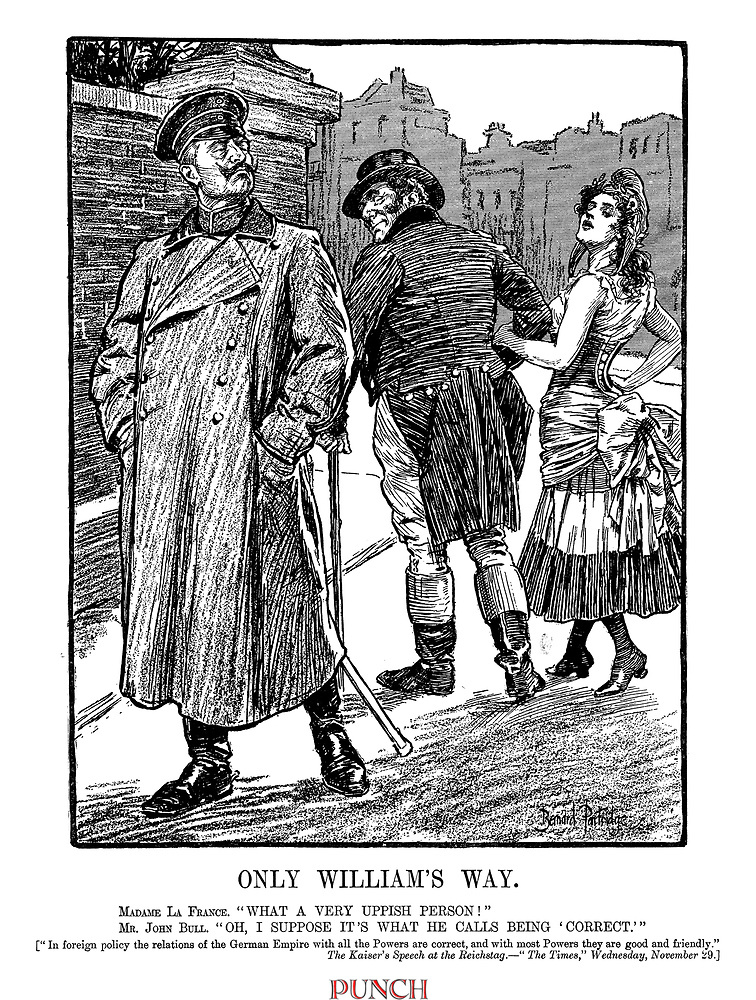The Great Powers militarized their societies and built up army and naval forces to unprecedented levels (fed by industrial and technological advances), while at the same time developing elaborate plans for the next war.
Empire,
c. 1815-1914 CE
Contents
A. Collapse of the Concert of Europe
- Pax Britannica
- The Crimean War
- The Second French Empire and Third Republic
- The Dual Monarchy of Austria-Hungary
B. Unification
C. The Russian Empire and European Jews
D. The New Imperialism
E. Alliances and Crises
The Crimean War (1853–1856), prompted by the decline of the Ottoman Empire, shattered the Concert of Europe established in 1815 and opened the door for the unifications of Italy and Germany. Using the methods of Realpolitik, Cavour in Italy and Bismarck in Germany succeeded in unifying their nations after centuries of disunity. Their policies of war, diplomatic intrigue, and, in Bismarck’s instance, manipulation of democratic mechanisms created states with the potential for upsetting the balance of power, particularly in the case of Germany. Following the Crimean War, Russia undertook a series of internal reforms aimed at achieving industrial modernization. The reforms succeeded in establishing an industrial economy and emboldened Russia’s aspirations in the Balkans. They also led to an active revolutionary movement, which employed political violence and assassinations and was one of the driving forces behind the 1905 Russian Revolution.
After the new German Emperor Wilhelm II dismissed Chancellor Bismarck in 1890, Germany’s diplomatic approach altered significantly, leading to a shift in the alliance system and increased tensions in European diplomacy. Imperial antagonisms, growing nationalism, militarism, and other factors resulted in the development of a rigid system of alliances. The Great Powers militarized their societies and built up army and naval forces to unprecedented levels (fed by industrial and technological advances), while at the same time developing elaborate plans for the next war.
The European imperial outreach of the 19th century was in some ways a continuation of three centuries of colonization, but it also resulted from the economic pressures and necessities of a maturing industrial economy. The new technologies and imperatives of the second industrial revolution (1870–1914) led many European nations to view overseas territories as sources of raw materials and consumer markets.
While European colonial empires in the Western Hemisphere diminished in size over this period as former colonies gained independence, the region remained dependent on Europe as a source of capital and technological expertise and was a market for European-made goods. European powers also became increasingly dominant in Eastern and Southern Asia in the early 19th century, and a combination of forces created the conditions for a new wave of imperialism there and in Africa later in the century. Moreover, European national rivalries accelerated the expansion of colonialism as governments recognized that actual control of these societies offered economic and strategic advantages.
After the new German Emperor Wilhelm II dismissed Chancellor Bismarck in 1890, Germany’s diplomatic approach altered significantly, leading to a shift in the alliance system and increased tensions in European diplomacy. Imperial antagonisms, growing nationalism, militarism, and other factors resulted in the development of a rigid system of alliances. The Great Powers militarized their societies and built up army and naval forces to unprecedented levels (fed by industrial and technological advances), while at the same time developing elaborate plans for the next war.
The European imperial outreach of the 19th century was in some ways a continuation of three centuries of colonization, but it also resulted from the economic pressures and necessities of a maturing industrial economy. The new technologies and imperatives of the second industrial revolution (1870–1914) led many European nations to view overseas territories as sources of raw materials and consumer markets.
While European colonial empires in the Western Hemisphere diminished in size over this period as former colonies gained independence, the region remained dependent on Europe as a source of capital and technological expertise and was a market for European-made goods. European powers also became increasingly dominant in Eastern and Southern Asia in the early 19th century, and a combination of forces created the conditions for a new wave of imperialism there and in Africa later in the century. Moreover, European national rivalries accelerated the expansion of colonialism as governments recognized that actual control of these societies offered economic and strategic advantages.
By 1914, most of Africa and Asia were under the domination of Great Britain, France, Portugal, Germany, Belgium, and the Netherlands.
Notions of global destiny and racial superiority fed the drive for empire, and innovations such as antimalarial drugs, machine guns, and gunboats made it feasible. Non-European societies without these modern advantages could not effectively resist European imperial momentum. The “new imperialism” of the late 19th and early 20th centuries was promoted in European nations by interest groups that included politicians, military officials and soldiers, missionaries, explorers, journalists, and intellectuals. As an example of a new complex phase of imperial diplomacy, the Berlin Conference in 1884–1885 outlined the procedures that Europeans should use in the partition of the African continent.
By 1914, most of Africa and Asia were under the domination of Great Britain, France, Portugal, Germany, Belgium, and the Netherlands. Notwithstanding the power of colonial administrations, some groups in the colonial societies resisted European imperialism, and by 1914, anti-colonial movements had taken root within the non-European world and in Europe itself. Imperialism exposed Europeans to foreign societies and introduced “exotic” influences into European art and culture. At the same time, millions of Europeans carried their culture abroad, to the Americas and elsewhere, through emigration, and helped to create a variety of mixed cultures around the world.
The long-anticipated war finally came in the summer of 1914. The assassination of the heir to the Austrian throne in Sarajevo forced the political leaders of the Great Powers, locked in the rigid structure of the Triple Entente versus the Triple Alliance, to implement war plans that virtually required the escalation of hostilities. The ensuing Great War revealed the flaws in the diplomatic order established after the unifications of Germany and Italy, but more importantly, it produced an even more challenging diplomatic situation than that faced by the diplomats in 1814–1815.
Source: https://apcentral.collegeboard.org/pdf/ap-european-history-course-and-exam-description.pdf
Collapse of the Concert of Europe
Objectives:
- Explain the motivations that led to European imperialism in the period from 1815 to 1914.
- Explain how nationalist sentiment and political alliances led to tension between and among European powers from 1815 to 1914.
- Explain how the development and spread of nationalism affected Europe from 1815 to 1914.
- Explain the factors that resulted in Italian unification and German unification.
Pax Britannica
The British Empire was the global hegemonic power during Queen Victoria's reign (1837-1901). A range of cultural, religious, and racial ideologies were used to justify imperialism, including Social Darwinism, nationalism, the concept of the civilizing mission, and the desire to religiously convert indigenous populations.
Nemesis engages Chinese junks during the Opium War, 1841
|
The Crimean War
Florence Nightingale, the "Lady with the Lamp" established modern nursing practices during the Crimean War at a time when disease killed more soldiers than combat.
Sergeant William McGregor of the Scot’s Guards wearing his Crimean whiskers and medal (1856)
The Crimean War was the first conflict to be photographed. Roger Fenton took 360 photographs in 1855 under difficult conditions. While these photographs document some of the participants and the landscape of the war, there are no actual combat scenes, nor are there any scenes of devastation.
|
The Second French Empire and Third Republic
|
battle of Puebla during the second French intervention in Mexico, 1863
The Second French Empire collapsed when Napoleon III was taken prisoner during the Franco-Prussian War. Here he meets with Otto von Bismarck after his capture.
The Dual Monarchy of Austria-Hungary
|
Franz Josef of Austria-Hungary (r. 1848–1916) was the last great Hapsburg emperor. Loyalty to his throne was the only thing that held together the multi-ethnic conglomeration that was the late Austro-Hungarian Empire.
|
the World's Fair of 1873 was held in Vienna
|
The Hungarian Parliament Building in Budapest, constructed in the Romantic neo-Gothic style, open in 1902. It remains the largest building in Hungary.
|
Collapse of the Concert of Europe Quizlet (comprehensive)
Collapse of the Concert of Europe Quizlet (abridged)
|
Unification
Objective: Explain the factors that resulted in Italian unification and German unification.
Italian and German Unification: Crash Course European History #27
So, we haven't talked much about Italy and Germany so far in Crash Course Euro, and that's because prior to the mid-19th century, those two nation-states weren't really a thing. Today we'll look at how Italy and Germany pulled it together in the second half of the 1800s. You'll learn about Giuseppe Garibaldi, Victor Emmanuelle, Otto von Bismarck, Wilhelm I, and a whole heck of a lot about the development of modern politics.
Italian Unification
The Victor Emmanuel II National Monument, or Vittoriano in Rome was built in honor of the first king of united Italy.
|
Giuseppe Garibaldi, flamboyant leader of the republican, nationalist Red Shirts, took control of the Kingdom of Naples and then turned his territories over to Victor Emmanuel II, King of Piedmont-Sardinia to unify most of Italy in 1861.
|
Libya during Italo-Turkish War, 1914
The Italo-Turkish War was the debut of aerial bombardment.
German Unification
|
Prussian Chancellor Otto von Bismarck was the architect of German unification through blood and iron.
|
France's humiliating defeat in the 1870-1871 Franco-Prussian War led to the unification of the German Empire, and set the stage for the First World War.
Pan-Germanists sought German domination of Eastern Europe.
|
Unification of Italy and Germany Quizlet (comprehensive)
Unification of Italy and Germany Quizlet (abridged)
|
The Russian Empire and European Jews
Objectives:
- Explain how and why various groups reacted against the existing order from 1815 to 1914.
- Explain how the development and spread of nationalism affected Europe from 1815 to 1914.
Russian Modernization
In 1909-1912, Sergei Mikhailovich Prokudin-Gorskii took color photographs of the Russian Empire on the eve of World War I. His subjects ranged from the medieval churches and monasteries of old Russia, to the railroads and factories of an emerging industrial power, to the daily life and work of Russia's diverse population.
|
Article: Tsar Alexander II: A Liberal Tsar?
|
Ethnographic map of European Russia in 1875. The empire sought to erase the cultural identities of ethnic minorities through the process of Russification.
|
Article: Before Lincoln Issued the Emancipation Proclamation, This Russian Czar Freed 20 Million Serfs
|
After sailing 18,000 nautical miles to reach Japanese waters, the Russian fleet was destroyed at the battle of Tsushima. The route taken by the main fleet is shown in blue.
|
|
Russia suffered a humiliating defeat during Russo-Japanese War (1904-1905) prompting the Revolution of 1905.
|
The Revolution of 1905 was prelude to the collapse of the Romanov regime during World War I.
|
Aryan Theory and Anti-Semitism
Meyers Konversationslexikon (Leipzig, 1885–1890) shows the Caucasian race (in various shades of grayish blue-green) as comprising European Aryans, Indo-Aryans, Semites, and Hamites.
|
In Gustave Doré's 1852 colored woodcut, "The Wandering Jew", Jews are depicted as a rootless people with no connection to "national soil.“
This 1910 cartoon from Vienna, "The biggest usurer in the world", shows a Jew with multiple faces and a dragon-like body with wings and a tail, sitting atop a globe exemplifying a popular conspiracy theory that Jewish financiers plotted for world domination.
|
The Russian Empire's Jewish population was restricted to living in the western Pale of Settlement, a region that was home to the majority of Holocaust victims during World War II.
|
In the cartoon STOP YOUR CRUEL OPPRESSION OF THE JEWS (1904), a Russian Jew carries the burdens "Oppression," "Autocracy," "Robbery," "Cruelty," "Assassination," "Deception," and "Murder." In the background, a Jewish community burns, and in the upper left corner, U.S. President Theodore Roosevelt chides Tsar Nicholas II.
|
The Russian Empire and European Jews Quizlet (comprehensive)
The Russian Empire and European Jews Quizlet (abridged)
|
The New Imperialism
Objectives:
- Explain how technological advances enabled European imperialism from 1815 to 1914.
- Explain the motivations that led to European imperialism in the period from 1815 to 1914.
- Explain how European imperialism affected both European and non-European societies.
Expansion and Resistance: Crash Course European History #28
In 19th century Europe, with nation building well under way, thoughts turned outward, toward empire. This week, we're looking at how Europeans expanded into Africa, Asia, and Oceania during the 1800s. You'll learn about China and the Opium War, British India, and the Scramble for Africa.
19th Century Military Advances
|
The German Big Bertha howitzer could fire a 2000-pound shell up to nine miles.
|
The HMS Dreadnought was a revolutionary British battleship that triggered a naval arms race with Germany.
Gunboat Diplomacy
|
In this illustration of the White Man's Burden, the American Uncle Sam follows British John Bull in lifting up colonial subjects towards the goal of civilization.
|
|
|
Gunboat Diplomacy Quizlet (comprehensive)
Gunboat Diplomacy Quizlet (abridged)
|
Africa
Cecil Rhodes aspired to unite a strong of British colonies "From Cape to Cairo."
European empires and the United States established rules for conquering and colonizing Africa at the Berlin Conference. No Africans were present.
Around 10 million died during Belgian King Leopold II's 20 year reign in the Congo.
|
German race scientist Eugen Fischer of the Kaiser Wilhelm Institute of Anthropology, Human Heredity, and Eugenics studied severed heads of victims of the Herero and Nama genocide. His eugenics work influenced Adolf Hitler.
|
Lizzie van Zyl a Boer child, in a British concentration camp. She died in 1901 at seven years of age. The Boer War introduced many cruel practices of 20th century warfare.
|
|
The Scramble for Africa Quizlet (comprehensive)
The Scramble for Africa Quizlet (abridged)
|
Asia
Millions starved during a series of late 19th century famines in British-controlled India when peasants were forced to grow cash crops instead of food.
|
French political cartoon depicting China being carved up by Queen Victoria of Britain; Kaiser Wilhelm II of Germany; Tsar Nicholas II of Russia; Marianne, symbol of France; and a Japanese samurai.
|
British, French, Dutch, and American ships bombarded Japan during the brief Shimonoseki War (1864).
Iwakura Mission in London, 1872
|
Japan's victory in the Russo-Japanese War shocked the Western world. Woodblock print by Kobayashi Kiyochika.
Imperial Culture
Tiger in a Tropical Storm (Surprised!) (1891) by Henri Rousseau
|
New Imperialism in Asia and Imperial Culture Quizlet (comprehensive)
New Imperialism in Asia and Imperial Culture Quizlet (abridged)
|
Alliances and Crises
Objective: Explain how European imperialism affected both European and non-European societies.
|
|
Alliances and Crises Quizlet (comprehensive)
Alliances and Crises Quizlet (abridged)
|
